












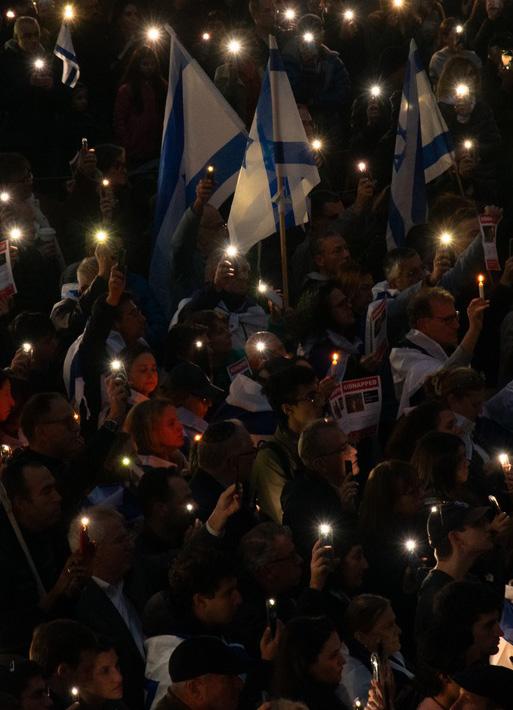
PLAGIARISM WEAPONIZED
Gay’s resignation showed how plagiarism has become the right’s culture war weapon of choice.















PLAGIARISM WEAPONIZED
Gay’s resignation showed how plagiarism has become the right’s culture war weapon of choice.

SIDECHAT TOXICITY
After Oct. 7, Sidechat became a platform for students to anonymously engage in heated debates.
EDUCATIONAL EQUITY
Standardized English curriculum takes aim at racial inequities among Cambridge students.
DISTRICT DIPLOMACY
Harvard President Alan Garber is traveling to Washington to smooth things over with politicians.
ACTIVIST ANGER
Campus activists allege Alan Garber’s administration has attempted to crackdown on protests.
Year in Review STAFF
MANAGING EDITOR
Miles J. Herszenhorn ’25
ASSOCIATE
MANAGING EDITORS
Elias J. Schisgall ’25
Claire Yuan ’25
DESIGN CHAIRS
Sami E. Turner ’25
Laurinne Jamie P. Eugenio ’26
MULTIMEDIA CHAIRS
Julian J. Giordano ’25
Addison Y. Liu ’25
STORY EDITORS
Hewson Duffy ’25
Yusuf S. Mian ’25
John N. Peña ’25
Rahem D. Hamid ’25
Paton D. Roberts ’25
Jem K. Williams ’25
COVER DESIGNER
Sami E. Turner ’25
PRESIDENT
J. Sellers Hill ’25
BUSINESS MANAGER
Matthew M. Doctoroff ’25
ASSOCIATE BUSINESS MANAGERS
Mathias Melucci ’26
Meredith W.B. Zielonka ’25
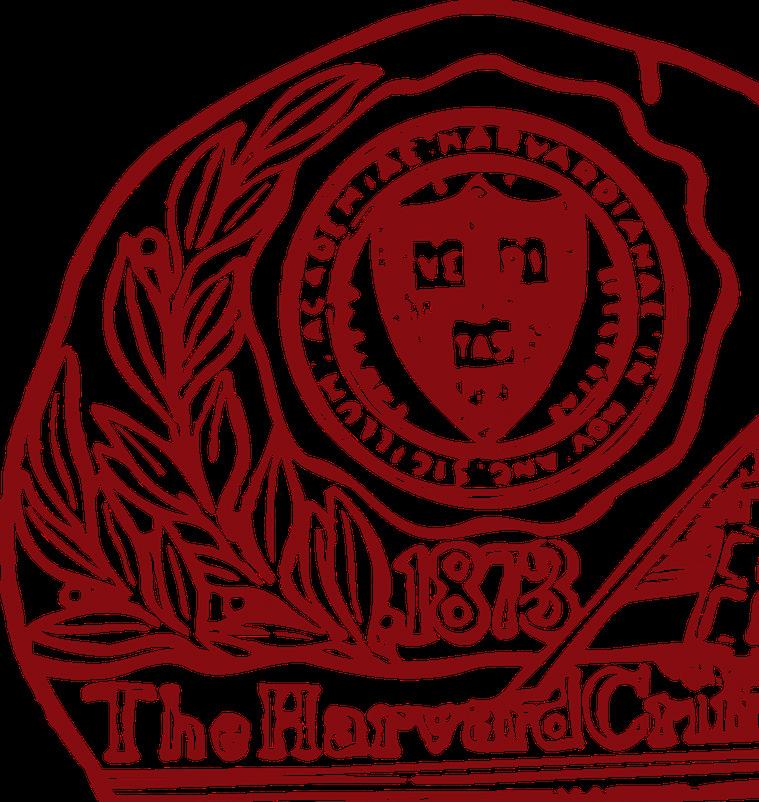
4
Here are the key moments that shaped Harvard’s most tumultuous year in decades.
The most memorable statements, spoken and written, that made it onto the pages of The Crimson in 2023-24.
9
13
Faculty watched Harvard’s crises from the sidelines. Now, they want a seat at the table.
How academia’s cardinal offense became the right’s culture war weapon of choice.

27
Graduating seniors reflect on a Harvard journey bookended by the Covid-19 pandemic and campus turmoil.

8 34 37
Conferences or Vacations?
How Harvard students get all-expenses paid international trips to staff conferences organized for high schoolers.
31
The Rise of Sidechat
It was a place for memes and clout-chasing. Then Oct. 7 changed student interactions on the anonymous platform.
Searching for the 31st
Whether the Harvard Corporation likes it or not, it will send a politcal message with its pick to be Harvard’s next president.
Harvard Medical School students are navigating the new moral and emotional challenges of a post-Covid-19 world.
The Harvard Kennedy School’s student body is 56% international. But some say the curriculum still needs to catch up.
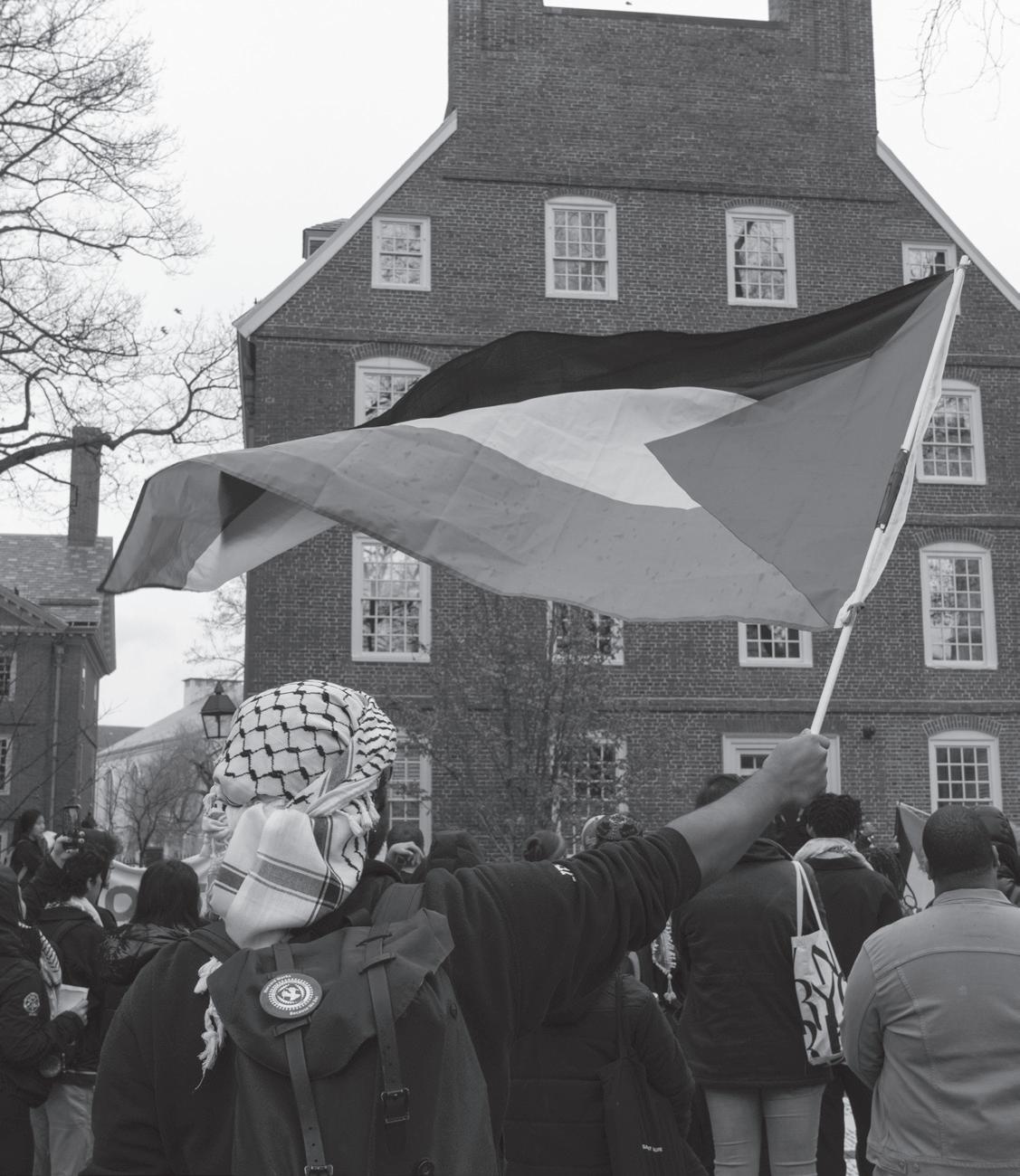
47
50
53
56
From Claudine Gay’s congressional testimony to the pro-Palestine encampment, see last year’s top moments in photos.
Standardized English curriculum takes aim at the racial achievement gap among Cambridge students.
From mice and broken appliances to inaccessible spaces, students say College dorms could use a facelift.
Allston is emerging as a new hub for the booming biotech industry — with a little help from Harvard.
Athletic admissions remain relatively unchanged — even in a year of an evolving admissions landscape.
61
66
Alan Garber is visiting lawmakers in Washington as he seeks to rebuild Harvard’s relationship with politicians.
Meet the man who served as the chief architect of Harvard’s admissions program through turmoil in court.
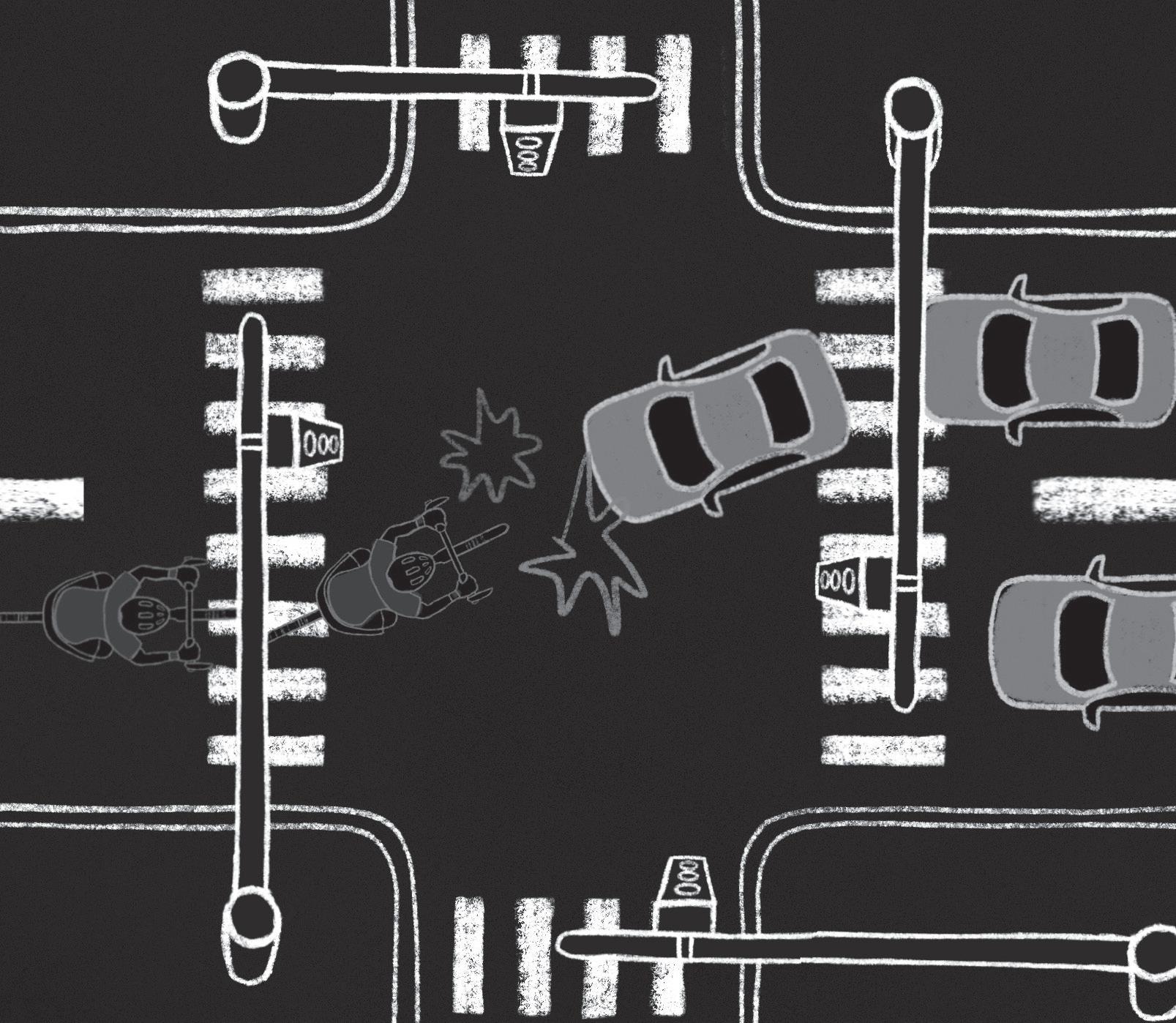
70
How separated bike lanes became the most divisive political issue in the city of Cambridge.
73
79
83
Some protesters condemned interim Alan Garber’s approach to student activism as repressive and forceful.
Harvard’s non-tenure-track faculty unionized — and they want better employment conditions.
Harvard’s $50.7 billion endowment is the largest in higher education. Some say it is underperforming.
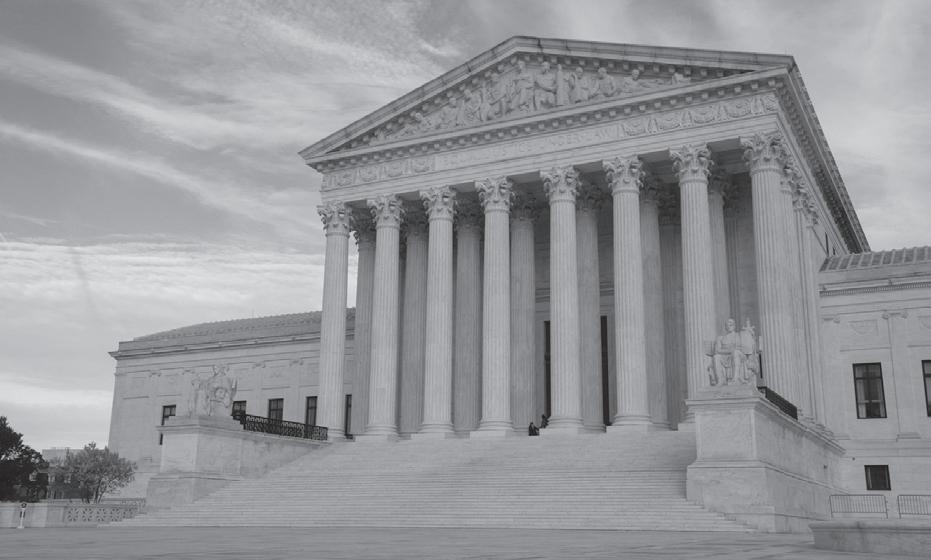
June 29, 2023
AFFIRMATIVE ACTION FALLS
In a 6-2 decision, the Supreme Court declares Harvard’s race-conscious admissions policies unconstitutional, effectively ending affirmative action.
July 1, 2023
CLAUDINE GAY TAKES OFFICE
Claudine Gay takes office as Harvard’s 30th president, becoming the first person of color to lead the University.

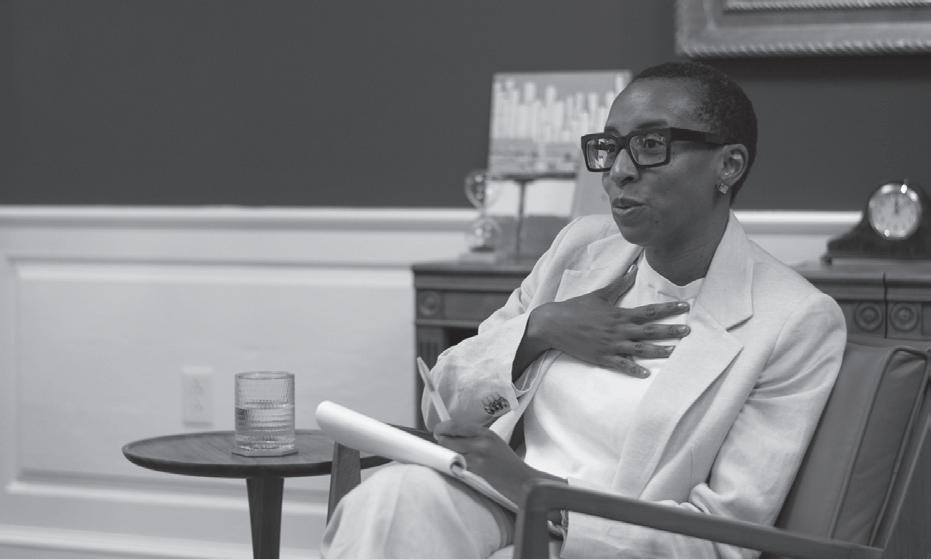
Oct. 11, 2023
GAY CONDEMNS HAMAS ATTACK, DISTANCES UNIVERSITY FROM PSC STATEMENT
Two days after the University’s first statement addressing the conflict and facing national backlash from the PSC statement, Gay asserts that student groups do not speak for the University or its leadership.
Nov. 9, 2023
GAY CONDEMNS ‘FROM THE RIVER TO THE SEA’
In an email to Harvard affiliates, Gay reaffirms a commitment to combating antisemitism and explicitly condemns the phrase “from the river to the sea.”
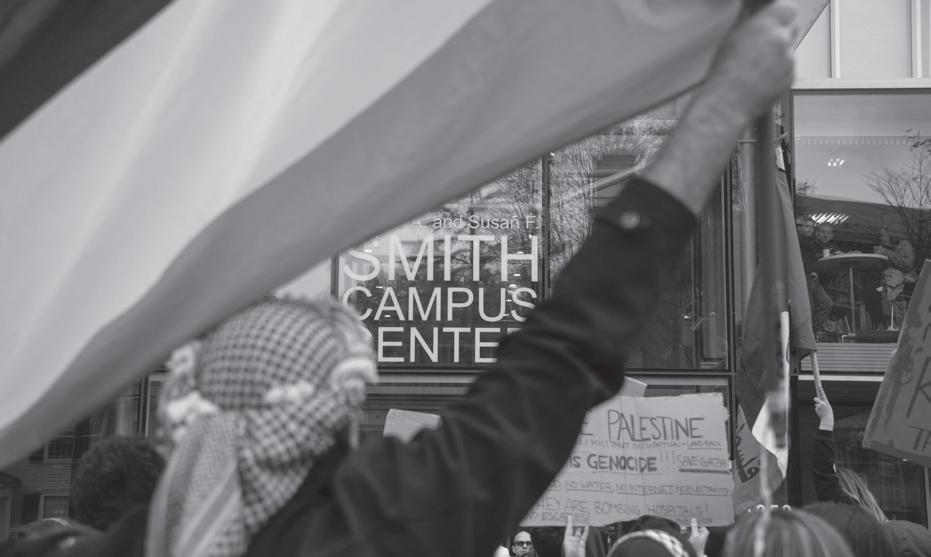
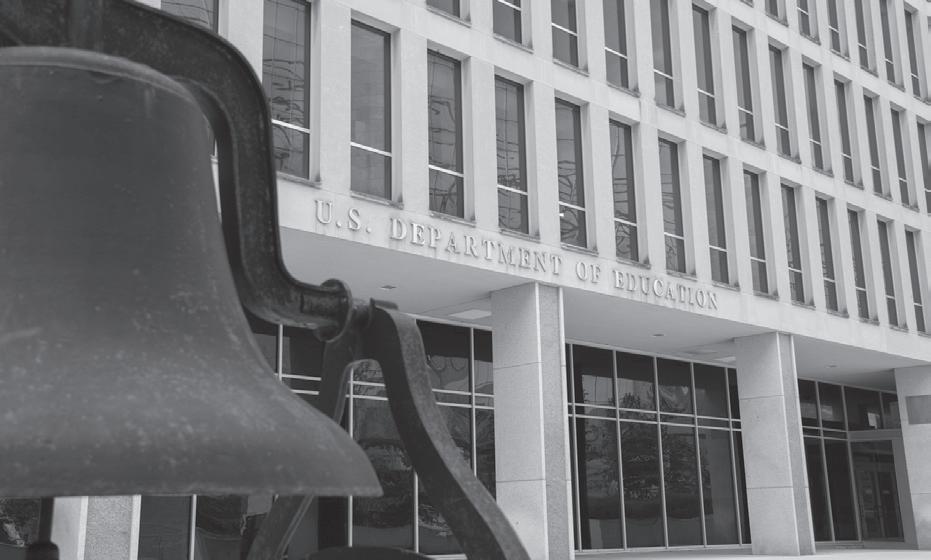
July 25, 2023
DEPARTMENT OF EDUCATION OPENS INVESTIGATION INTO HARVARD’S DONOR AND LEGACY ADMISSIONS PRACTICES
Nearly a month after the fall of affirmative action, the U.S. Department of Education opens an investigation into Harvard’s legacy and donor admissions practices.

Nov. 17, 2023
HARVARD JEWS FOR PALESTINE OCCUPY UNIVERSITY HALL
Nine pro-Palestine student organizers occupy University Hall for just over 24 hours, demanding a call from Harvard for a ceasefire in Gaza. Eight students would later face Ad Board hearings.
Sept. 29, 2023
CLAUDINE GAY’S INAUGURATION
Gay formally assumes her role as president during a festive inauguration ceremony in Tercentenary Theatre.


Oct. 9, 2023
100 DAYS OF GAY
The 100th day of Gay’s tenure as president of the University coincided with her administration’s first public statement about Hamas’ Oct. 7 attack on Israel.
Oct. 10, 2023
STUDENT GROUPS FACE BACKLASH FOR LETTER HOLDING ISRAEL “ENTIRELY RESPONSIBLE” FOR HAMAS ATTACK
Harvard students draw campus and national backlash in response to a letter from the Harvard Undergraduate Palestine Solidarity Committee and signed by more than 30 student organizations holding Israel “entirely responsible” for an Oct. 7 attack by Hamas.

Nov. 28, 2023
U.S. EDUCATION DEPARTMENT OPENS INVESTIGATION INTO HARVARD OVER ANTISEMITISM COMPLAINT
The U.S. Department of Education opens an investigation into Harvard following a complaint alleging the University’s failure to respond to reports of antisemitic harassment on campus.

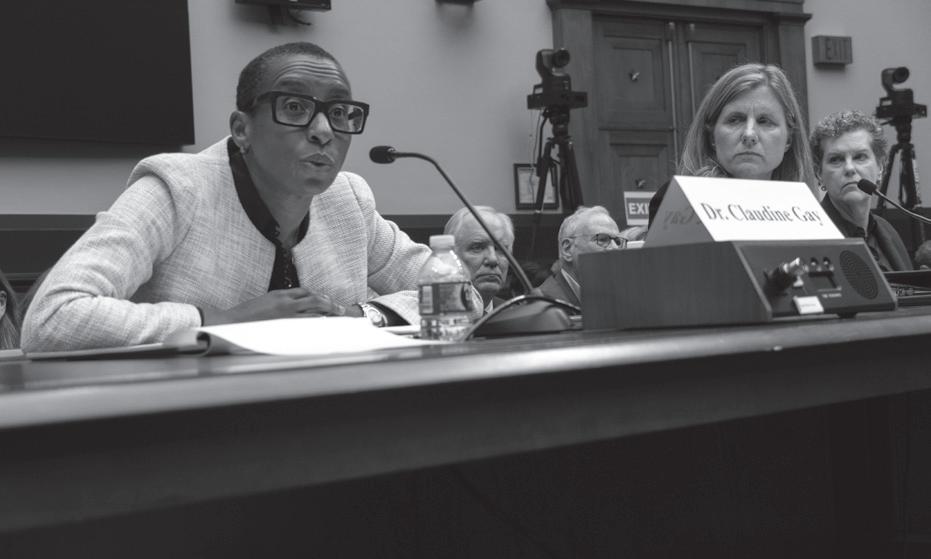
Dec. 5, 2023
GAY TESTIFIES BEFORE CONGRESS Gay appears before Congress in a hearing about antisemitism on college campuses. When pressed on whether calling for the genocide of Jews violates Harvard’s rules on bullying and harrassment, Gay says “it depends on the context.”
Dec. 7, 2023
GAY APOLOGIZES FOR REMARKS DURING CONGRESSIONAL TESTIMONY
In an interview with The Crimson, Gay apologizes for her remarks during her congressional testimony, which included an exchange with Rep. Elise M. Stefanik ’06 (R-N.Y.) that sparked national outrage and led to calls for Gay’s resignation.
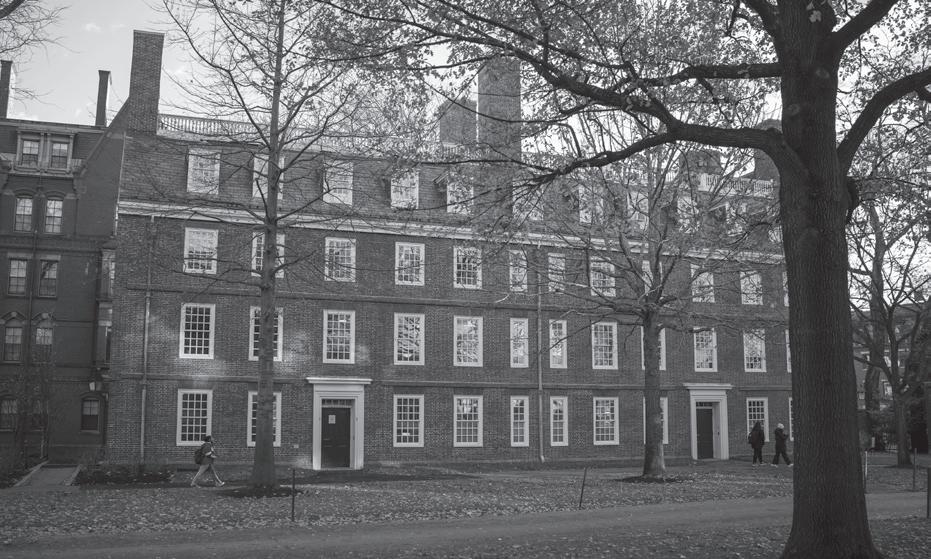

Dec. 12, 2023
CORPORATION BACKS GAY, ACKNOWLEDGES PLAGIARISM ALLEGATIONS
The Harvard Corporation, the University’s highest governing body, unanimously voices support for Gay amid calls for her resignation. Addressing allegations of plagiarism against Gay, the Corporation announces correction requests to two of her articles “to insert citations and quotation marks that were omitted from the original publications.”

Feb. 16, 2024
HOUSE REPUBLICANS SUBPOENA HARVARD’S TOP BRASS
Republicans on the House Committee on Education and the Workforce subpoena three top Harvard officials, demanding internal documents and communications to investigate Harvard’s handling of campus antisemitism.
Jan. 2, 2024
GAY RESIGNS, GARBER ANNOUNCED AS INTERIM PRESIDENT
Gay resigns as president after just six months and two days at the helm — the shortest ever tenure of a Harvard president. University Provost Alan M. Garber ’76 is announced as Harvard’s interim president.
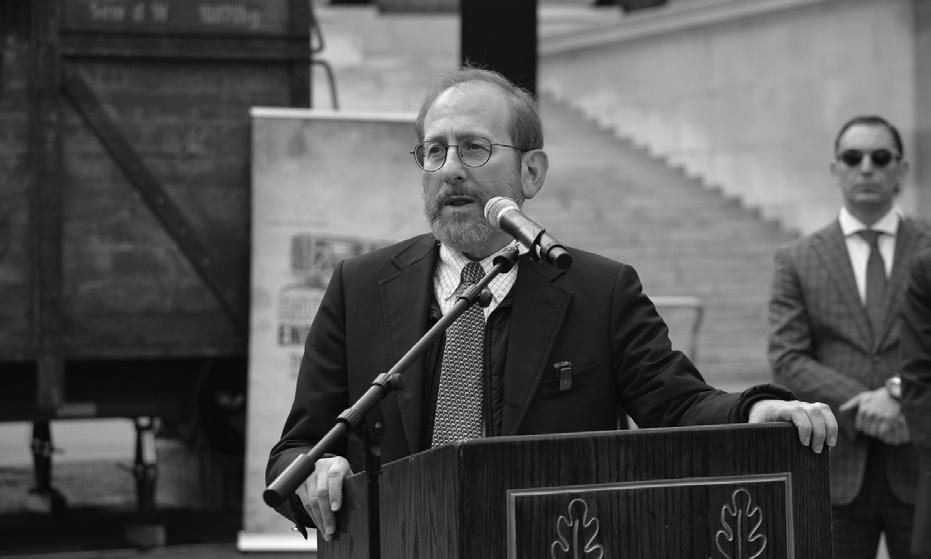

Jan. 3, 2024
CORPORATION SENIOR FELLOW PRITZKER REBUFFS CALLS TO RESIGN
A Harvard spokesperson says Harvard Corporation Senior Fellow Penny S. Pritzker ’81 will not resign despite calls for her resignation from prominent donors and alumni.
March 1, 2024
LAW SCHOOL DEAN MANNING NAMED INTERIM PROVOST
Garber appoints Law School Dean John F. Manning ’82 as the University’s Interim Provost. Manning was an internal finalist during the presidential search that ultimately ended with Gay’s selection.
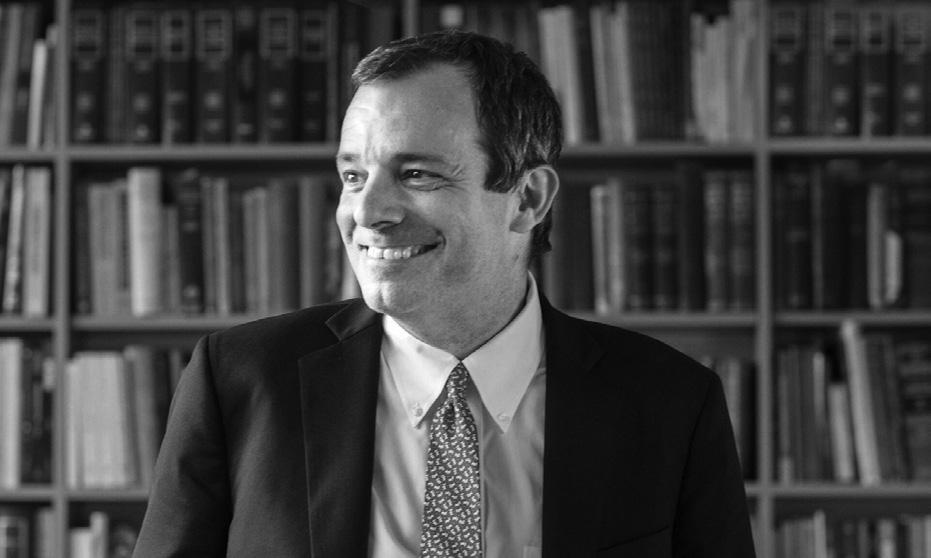

April 22, 2024
HARVARD SUSPENDS PALESTINE SOLIDARITY COMMITTEE
The College suspends the Harvard Undergraduate Palestine Solidarity Committee, ordering the group to end “all organizational activities” for the remainder of the spring semester.
Jan. 31, 2024
KEN GRIFFIN PAUSES DONATIONS
Billionaire Harvard megadonor Kenneth C. Griffin ’89 announces he will pause donations to Harvard over its handling of antisemitism on campus, but leaves open the possibility of the University regaining his support.


Feb. 4, 2024
BAE AND FRAZIER JOIN CORPORATION AHEAD OF PRESIDENTIAL SEARCH
Kenneth C. Frazier, former longtime CEO and chairman of Merck & Co., and private equity billionaire Joseph Y. Bae ’94 join the Harvard Corporation.
Feb. 6, 2024
DEPARTMENT OF EDUCATION OPENS INVESTIGATION INTO HARVARD FOLLOWING ANTI-PALESTINIAN DISCRIMINATION COMPLAINT
The U.S. Department of Education’s Office of Civil Rights launches an investigation into Harvard following a complaint alleging antiPalestinian discrimination filed by Muslim Legal Fund of America.

April 25, 2024
PRO-PALESTINE PROTESTERS BEGIN ENCAMPMENT IN HARVARD YARD
Pro-Palestine protesters begin an encampment in Harvard Yard, rallying against the College’s suspension of the Palestine Solidarity Committee and calling for University divestment from the University in Gaza.

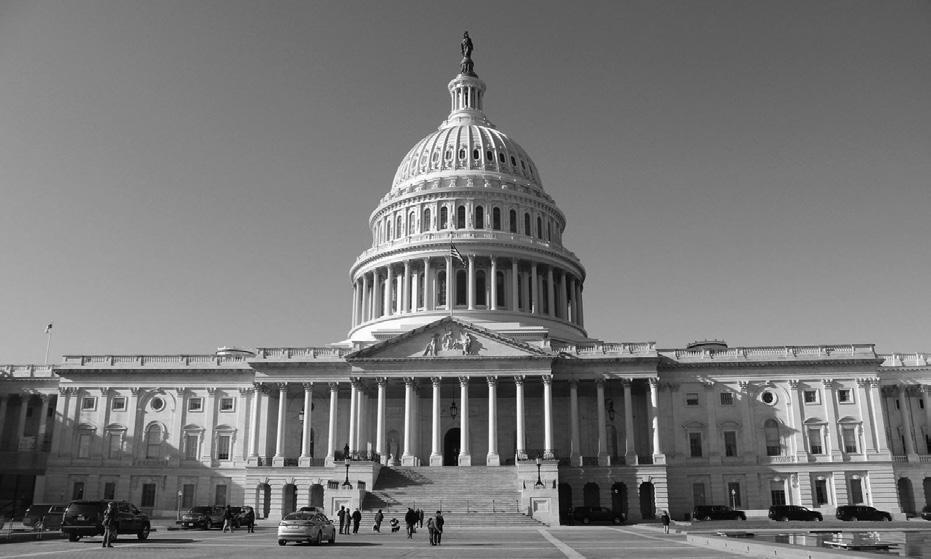
April 30, 2024
CONGRESSIONAL INVESTIGATION INTO ANTISEMITISM ON COLLEGE AND UNIVERSITY CAMPUSES EXPANDED TO HOUSE-WIDE PROBE
The House Committee investigation into antisemitism on college campuses expands into a House-wide probe as representatives from several colleges are called to testify before Congress. In an April interview with The Crimson, Garber said he would testify in Congress if asked to do so.
May 10, 2024
HARVARD PLACES 20 ENCAMPED PROTESTERS ON INVOLUNTARY LEAVE
Two weeks after protesters set up an encampment in Harvard Yard, the University places 20 students on involuntary leaves of absence.

From Harvard’s joyous presidential inauguration to a sudden presidential resignation and the appointment of a new administration, The Crimson covered the major events of 2023-24. Read some of the year’s key moments in the words of the people impacted by these stories.
Serving as your president has been the privilege of my life.
LAWRENCE S. BACOW
We demand that the University take action to address the harm caused and protect the mental, emotional, and physical safety of Black students.
This is not a normal court.
JOE BIDEN
MAY 2023 JUNE 2023 SEPT. 2023 OCT. 2023
PETITION
400 Harvard students signed a petition to demand more support following a swatting attack against four Black students.
I stand before you today humbled by the prospect of leading Harvard, emboldened by the trust you have placed in me, and energized by your own commitment to this singular institution and to the common cause of higher education.
CLAUDINE GAY
JULY 2023
I will not remain silent as SFFA tries to use Asian Americans as a racial wedge or their model minority, because as an Asian American, I choose solidarity, not silence.
REBECCA S. ZHANG ’26
Harvard students rallied on campus to denounce the Supreme Court’s ruling and show support of affirmative action.
I cannot fathom the Administration’s failure to disassociate the University and condemn this statement.
LAWRENCE H. SUMMERS
Our community must understand that phrases such as ‘from the river to the sea’ bear specific historical meanings that to a great many people imply the eradication of Jews from Israel and engender both pain and existential fears within our Jewish community. I condemn this phrase and any similarly hurtful phrases.
CLAUDINE GAY
I am the interim president, but the problems we need to deal with are not interim problems.
ALAN GARBER
resignation.
Claudine Gay, Harvard’s 30th president, delivered a speech during her inauguration ceremony in Tercentenary Theatre in front of dozens of higher education leaders and hundreds of students and faculty who sat through the lengthy event despite the torrential downpour.
It has become clear that it is in the best interests of Harvard for me to resign so that our community can navigate this moment of extraordinary challenge with a focus on the institution rather than any individual. I am sorry. Words matter.
CLAUDINE GAY
Former Harvard President Claudine Gay apologized to Jewish affiliates on campus for her remarks during a congressional hearing about antisemitism on college campuses
CLAUDINE GAY
Claudine Gay resigns as president of Harvard, becoming the shortest-serving president in University history.
I would be surprised if John Manning returns to the Law School.
MICHAEL J. KLARMAN
After Garber told The Crimson that he did not intend to return to his role as provost, Garber appointed Harvard Law School Dean John F. Manning ’82 as his interim provost.
Standardized tests are a means for all students, regardless of their background and life experience, to provide information that is predictive of success in college and beyond.
HOPI E. HOEKSTRA
Faculty of Arts and Sciences Dean Hopi E. Hoekstra announced Harvard would reinstate its standardized test requirement in admissions for the Class of 2029.

A SEAT AT THE TABLE. After months of watching Harvard endure crisis after crisis from the sidelines, the faculty — the University’s “sleeping giant” — have risen from their slumber. A group of prominent professors is pushing for a Harvard-wide faculty senate, and even those who oppose the proposal agree governance change is needed.
On April 30, after months of watching the University endure crisis after crisis from the sidelines, the Faculty of Arts and Sciences packed into a lecture hall to finally hear the Harvard Corporation’s side of the story.
At that meeting, the first of its kind in living memory, the Corporation — Harvard’s top governing body — found a very different professoriate from the one it oversaw just a few months prior: one more engaged, more disillusioned with the University’s governance, and looking to assert a more powerful voice.
Former Harvard President Drew Gilpin Faust “doubled the number of the Corporation from 6 to 12,” one professor noted, according to an attendee’s transcript of the town hall. “This is the first time in 22 years that I’ve seen any of them.”
“Is there a feedback loop by which the Corporation could correct course as a result of criticism?” another asked. “At the moment, the Corporation has no oversight.”
The frustration that faculty have no direct line to top leadership isn’t limited to Harvard’s secretive governing boards.
At a May 7 FAS meeting, when interim Harvard Provost John F. Manning ’82 said interim Harvard President Alan M. Garber ’76 was unaware of meeting requests by students and faculty members to discuss campus issues related to the war in Gaza, faculty members in the audience laughed and groaned.
“That’s a sign of how out of touch this administration is with the faculty, how little consultation and dialogue there’s been with the faculty,” Government professor Steven R. Levitsky said in an interview. “That’s why we’re so engaged.”
University spokespeople did not comment for this article.
After years of being seen as just another group in the campus dynamic, many faculty are pushing to be seen as something else entirely: partners. That growing discontent has already caused a reckoning, forcing both Garber and the Corporation to reevaluate how they work with faculty.
At the FAS town hall, Corporation Senior Fellow Penny S. Pritzker ’81 acknowledged criticisms that faculty were kept out of the loop. Pritzker wrote in a May 18 emailed statement that the University is “exploring ways for the Corporation to hear more directly from the faculty.”
And, Garber has been more responsive to faculty members after Manning’s poor reception at the FAS meeting, per one senior faculty
member.
But many faculty members say these “ad hoc” communication channels in times of crisis aren’t enough. Faculty, they argue, deserve their own seat at the table where decisions are made — instead of finding out what happened after the fact.
“During the semester, not a week goes by without hearing one or two colleagues say ‘faculty governance’ — and they never say there is too much,” Classics professor Emily Greenwood said at a May 14 FAS meeting.
Now, they’re pushing for reform.
A group of prominent faculty has introduced proposals to consider a University-wide faculty senate — an elected decision-making body — and even those who oppose the senate proposals agree governance change is needed.
As faculty look to use both their individual and collective voices, Harvard has a big question to answer: what role should faculty play in running the institution?
Since Hamas’ Oct. 7 attack on Israel, the faculty — the University’s “sleeping giant” — have risen from its slumber. Several professors called this year the most involved the faculty have been in their 20 or more years here, a time that includes the FAS’ 2005 battle with then-President Lawrence H. Summers, which culminated in a no-confidence vote.
“I’ve always kept my head down when it came to campus politics,” said Levitsky, who was recently elected to the FAS Faculty Council, an advisory group for the FAS and its dean.
“This year has been new for me,” he added.
Bioengineering professor Kevin “Kit” Parker wrote in an email that he became involved in the faculty senate working group because he had long been upset with Harvard’s culture. These frustrations, for Parker, came to a head with the University’s recent crises.
“I want to build heart valves for kids, not screw around with University politics,” Parker wrote, echoing a sentiment shared by a number of his colleagues. “But by virtue of my position as a tenured faculty member, I have institutional responsibilities that require I put bandwidth into solving its problems and charting its course.”
While many faculty credit Harvard’s leadership crisis with spurring them to action, some of the groundwork was laid in advance.
In March 2023, a group of faculty members across the University — around 70 at the time — formed the Council on Academic Freedom at Harvard, a faculty group that aims to uphold ideals of free expression and promote discourse on contested issues.
While the group, now with more than

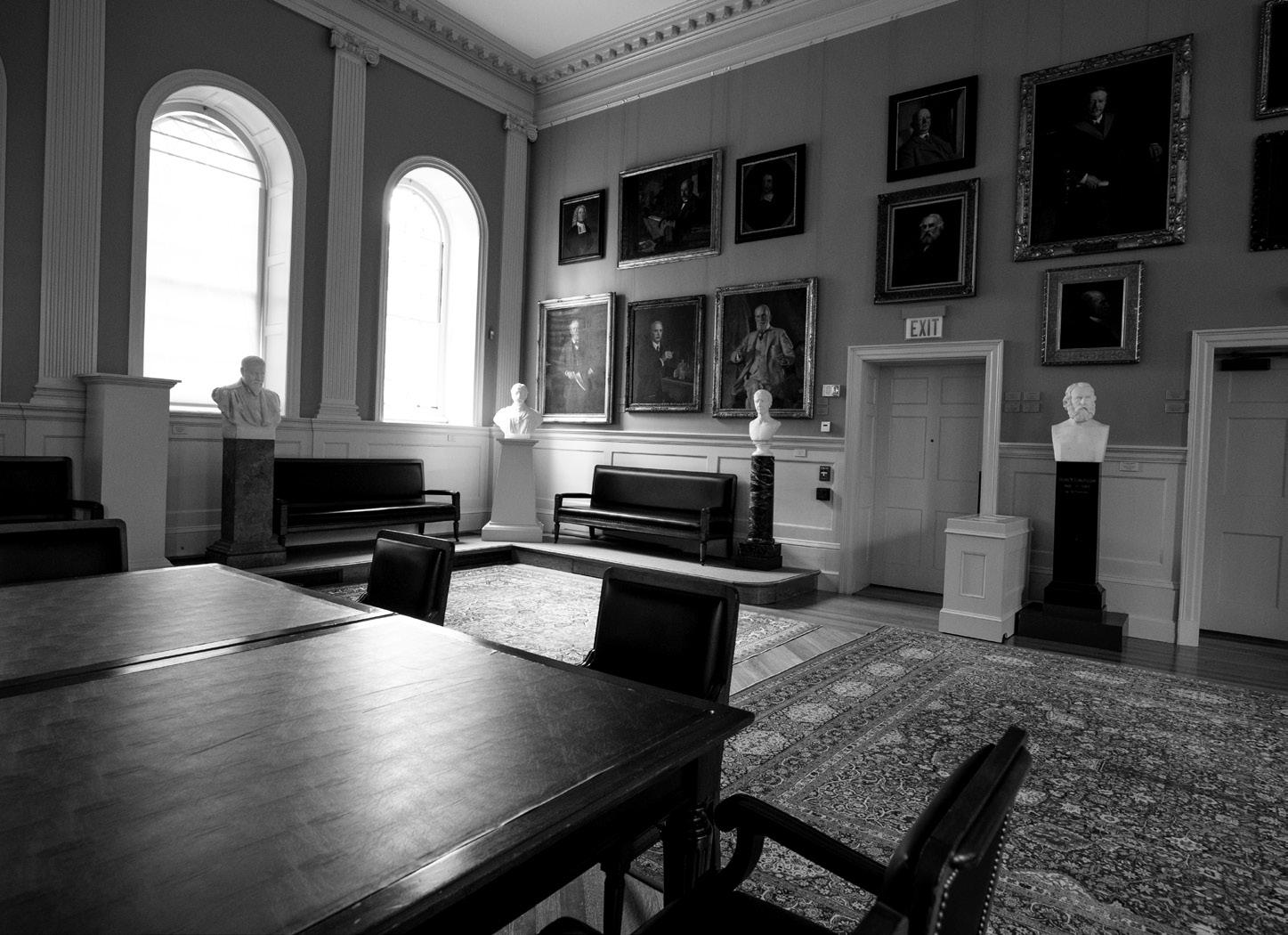


170 members, has made headlines for its statements and leaders’ actions, its main function for members has been an email list over which they discuss and debate campus issues, from Harvard’s selections for presidential task forces to faculty governance.
CAFH co-president Edward J. “Ned” Hall, a Philosophy professor, said CAFH was “the first time” he’s had “sustained dialogue with people from other schools.”
Despite this uptick in involvement, several faculty members feel Harvard lacks institutional foundations for faculty governance. Its existing structures are often criticized as too weak, and there is no central University-wide body at Harvard, unlike many of its peers.
Hall said he found his time on the Faculty Council, under former FAS Dean Claudine Gay, to be quite productive, though he noted that the body’s efficacy was very tied to how the dean sought to use it. It could easily be a “rubber stamp,” he said, as it lacked power as a standalone body.
The Council has suffered from low election participation and a lack of interest in running for its positions, per several faculty members.
An FAS spokesperson wrote in a statement that FAS Dean Hopi E. Hoekstra “is committed to amplifying faculty voices within our School governance structure.”
“Early in her tenure, she established a faculty committee to enhance meeting effectiveness and created new channels for faculty in-
put to reach the President and Fellows,” they wrote. “Dean Hoekstra’s proactive leadership ensures the views of FAS faculty are heard and valued at the highest levels of the University.”
It’s not immediately clear if a new governance structure could avoid the engagement issues that plague the FAS or if the current increase in involvement is sustainable. Levitsky, for instance, said he expects to return his full focus to teaching after the moment of crisis subsides.
Proponents of a faculty senate say a well-designed model could avoid these issues, though the formal planning has yet to begin.
Over the last few weeks, the idea of a faculty senate has picked up steam across the University’s nine faculties.
Since April 9, a group of professors — led by University Professor Danielle S. Allen — has worked to advance resolutions to form a faculty senate planning body through each school’s governing mechanism.
While the group’s memo called on the faculties to either elect delegates to the planning body or come up with a process for doing so by May 15, all nine faculties have yet to do so. Most will not reach a final decision before the fall semester.
The resolution to form a senate planning body has drawn vehement debate among the
Faculty of Arts and Sciences, who will vote on the motion through an email ballot starting this week.
Though the proposal enjoys support from many prominent professors like Allen and former FAS Dean William C. Kirby, its opponents have called it too reactive to the University’s recent controversies, the wrong vehicle for governance reform, and a threat to the FAS’ position as Harvard’s central faculty.
Dean of Social Sciences Lawrence D. Bobo, one of the proposal’s loudest critics, has argued that faculty members do not have the power to convene a senate with real decision-making power. He has instead argued that governance reform should happen within the existing system, saying instead that faculty need representation on the Harvard Corporation.
Meanwhile, German professor Peter J. Burgard — who explored the idea of an FAS-only faculty senate in 2012 — has said he will oppose any University-wide faculty senate motion. The body, he wrote in an email, would dilute the FAS’ influence and “weaken the core of the university.”
Bobo, Burgard, and University Professor Ann M. Blair ’84 have all made unsuccessful motions during FAS meetings aimed at killing the planning body resolution or delaying it until the fall. Still, the issue seems to be galvanizing the faculty. The FAS meetings where the faculty senate planning body has been discussed were among the best-attended of
the semester.
The University’s other eight faculties are moving forward on the proposal as well. The proposal has come up for a vote at the Harvard Graduate School of Design and the Harvard Divinity School, while a potential September vote is expected at the Harvard School of Public Health.
At the other schools, where formal processes have moved more slowly, proponents have formed subcommittees to lobby colleagues and host town halls to answer their questions.
“I’ve heard so far, there’s interest and support for the idea and the broad goals, but that they would need to understand the design,” Harvard Graduate School of Education professor Julie A. Reuben, who introduced the planning body resolution at HGSE, said.
The idea of a faculty senate, though, predates the University’s current climate — by half a century.
In 1972, a committee chaired by then-FAS Dean John T. Dunlop proposed a “University-wide Senate” composed of professors and students from across Harvard’s nine faculties.
The Dunlop committee’s report described Harvard as “more a confederation of independent faculties than a unitary institution,” with each school responsible for its own funding — a decentralized model that largely
A group of professors, including University Professor Danielle S. Allen and Council on Academic Freedom at Harvard co-president Edward J. “Ned” Hall, began circulating proposals to form a University-wide faculty senate. They called for increased communication from the University to faculty members, saying their “ad hoc” channels in time of crisis were insufficient.
Former Faculty of Arts and Sciences Dean William C. Kirby argued in a Crimson op-ed that the University was in need of governance reform. In his op-ed, he backed calls for a faculty senate, arguing that it was needed to advise both the president and the governing boards.
Later that day, the Faculty of Arts and Sciences met with members of the Harvard Corporation, the University’s highest governing board. During the town hall, members of the FAS pressed the Corporation on various matters of university governance and decisionmaking, including the question of a faculty senate — to which interim Provost John F. Manning ’82 responded with a skeptical tone.
Faculty at the Harvard Graduate School of Design and Harvard Divinity School discussed motions delegates to a University-wide faculty senate planning body at their faculty meetings, but the motions did not come up for a vote.
Dean of Social Science Lawrence D. Bobo urged his colleagues to shoot down the faculty senate proposal in a Crimson op-ed published the morning of the monthly FAS meeting. He argued that it would be unproductive and that other forms of governance reform were needed instead — like faculty seats on the Harvard Corporation, the University’s top governing board.
During the meeting later that day, Allen and other faculty members in the working group introduced a motion to elect FAS delegates to a University-wide faculty senate planning body. The FAS, after a contested debate, moved to hold a May 14 special meeting to make a decision on the matter.
At the special meeting, after a second debate, the FAS decided to conduct their vote on whether to elect delegates to a planning body via online ballot.
continues to this day.
But, the report concluded, when University-wide or cross-faculty issues did arise, they were typically decided by central administrators. In other cases, one faculty — particularly the FAS — would set the de facto precedent. That, the report argued, meant policy decisions were made “without opportunity for the affected Faculties to discuss or consider the question.”
The solution it prescribed? A faculty senate.
Like the authors of today’s proposal, the Dunlop committee vested the authority to constitute their proposed senate in Harvard’s University Statutes, which grant power to a “University Council” consisting of Harvard’s entire professoriate. The Council has not met since the early 1900s; the Dunlop reports described it as “moribund” and “dormant.”
Over fifty years later, however, the University Council still has not awakened, and the Dunlop proposal never came to fruition.
But Government professor Theda Skocpol said she did not think the present moment lived up to the past.
“I would not say that the social ties and the ongoing conversations and thinking about what to do are there, anywhere near the way it was during the 1960s crisis — which was happening just as I arrived as a graduate student — or in the periods around Larry Summers’ presidency,” she said.
Without consistent engagement and strong lateral ties across Harvard’s faculties, Skocpol said she thought a faculty senate “would create an easily ignorable set of new titles on paper.”
Though the proposal has drawn impassioned debate, what a faculty senate would actually look like remains an open question. According to its proponents, that’s by design: The proposal’s authors say they want an elected planning body, not a self-selected working group, to sketch out possible constitutions.
Harvard Graduate School of Education professor Richard Chait, who studies higher education governance, said faculty senates usually fill two primary functions: “as a voice for faculty and as a means of self-regulation for academic matters.”
But the specifics of the proposal, including the senate’s role, may have to wait.
“At the end of the day, if the faculty and the University choose to have a senate, it has to be born through a highly consensual, expansive, consultative process,” Chait said. “I imagine they’ll have some modern-day equivalent of a constitutional convention in Philadelphia.”
Although a senate might be a revolutionary institution at Harvard, faculty senates are the norm among many of Harvard’s peer schools.
Northwestern University’s senate oversees faculty tenure and promotion policies, while Stanford University’s sets curricular requirements and research policy. Both senates regularly meet with top administrators and lay out principles of academic freedom.
Chait said he thought the greatest structural challenge to faculty senates is they are often not held accountable for the effects of their own recommendations. If a senate’s suggestions are implemented, he said, their success is accepted without fanfare; their failure, on the other hand, rarely backfires on faculty senators.
That lack of a feedback mechanism means, in turn, administrators and trustees may be less likely to take faculty recommendations seriously, Chait said.
But Reuben, the HGSE professor, was hopeful. A senate, she said, could bridge the gap between the highest echelons of Harvard’s governance and the faculty who see themselves as stewards of its core purposes: research and education.
“The most fundamental principle of shared governance is that the parts of the university that hold the knowledge and expertise should be primarily responsible for those parts,” she said.
tilly.robinson@thecrimson.com neil.shah@thecrimson.com


ALLEGATIONS. Harvard — already in the crosshairs of a conservative culture war — also came under fire for allegations of plagiarism against some of its top academics and administrators. With new software and unchecked scholarship at their disposal, conservative critics opened up a new frontier when they levied accusations against former Harvard President Claudine Gay.
Claudine Gay testified before Congress in order to defend Harvard’s handling of campus antisemitism. She faced considerable backlash for her remarks, during which Gay gave a noncommittal answer when asked if calling for the genocide of Jews would violate policy. She later apologized for her testimony.
Right-wing activist Christopher Rufo wrote in a post on X that he and journalist Christopher Brunet had waited “for the precise moment of maximum impact” before publishing, saying that “there are rumors that the plagiarism scandal could be the final nail in Gay’s coffin” — referring to the potential end of her presidency.
Aaron Sibarium of the Washington Free Beacon reported on additional allegations of plagiarism against Gay — across her dissertation and three of her other published papers.
The Harvard Corporation announced that they found Gay had not committed research misconduct, but that she would be “proactively” submitting four corrections across two of her published articles. The New York Post published a story with additional instances of alleged plagiarism in one of Gay’s articles.
The House Committee on Education and the Workforce expanded the scope of its congressional investigation into Harvard to include allegations of plagiarism against Gay.
The Harvard Corporation released a review that found that Gay had not committed academic misconduct. The Corporation also announced that Gay would make three additional corrections — this time to her Ph.D. dissertation.
Gay stepped down as Harvard president, with interim President Alan M. Garber ’76 taking her place.
Gay published an op-ed in the New York Times, calling the attacks on her scholarship illogical and racially motivated. She wrote that she stood by the findings of her scholarship.
By ANGELINA J. PARKER AND NEIL H. SHAH CRIMSON STAFF WRITERSPlagiarism is a cardinal offense for academics. In December, it also became the latest cudgel in the conservative culture war on Harvard and diversity, equity, and inclusion.
The development could not have come at a worse time for the University. Harvard was struggling to navigate public fallout from former President Claudine Gay’s now-infamous congressional hearing. The University was under a national microscope like never before, and politicians, alumni, and Harvard affiliates were calling for Gay’s resignation.
And amidst it all — as the Harvard Corporation met to discuss Gay’s future at the University — right-wing activist Christopher F. Rufo and journalist Christopher Brunet hit publish on a piece that would add a new element to the controversy: allegations that Gay had plagiarized large sections of her Ph.D. dissertation at Harvard.
The report was timed to make waves. Rufo, a prominent critic of critical race theory, boasted on X that their timing had been intentional. They had the tip for about
a week, he wrote, and held it till “the precise moment of maximum impact.”
Rufo’s report was quickly followed by an article by Aaron Sibarium in the right-leaning Washington Free Beacon, which unearthed additional allegations spanning Gay’s academic career.
The duo — Rufo and Brunet — had successfully hijacked the conversation, expanding a ballooning national scandal over antisemitism at Harvard to include both Gay’s academic credentials and the school’s diversity, equity, and inclusion efforts, which they said were to blame for Gay’s presidency.
The Corporation, backed into a corner, could not ignore the new attacks. After a review of Gay’s work, they said that though Gay would submit seven corrections to add citations across her dissertation and published works, they found that she had not committed academic misconduct.
“Never did I imagine needing to defend decades-old and broadly respected research, but the past several weeks have laid waste to truth,” Gay wrote in a New York Times op-ed shortly after her resignation. “Those who had relentlessly campaigned to oust me since the fall often trafficked in lies and ad hominem insults, not reasoned
argument.”
But despite Gay’s defenses, in the public’s eyes, the damage had been done. Gay was pushed to resignation to the delight of Harvard’s most outspoken antagonists, Rufo included.
“Today, we celebrate victory. Tomorrow, we get back to the fight,” Rufo posted to X the day of Gay’s resignation. “We must not stop until we have abolished DEI ideology from every institution in America.”
Harvard had already found itself in the crossfires of the culture war. But with new software at their disposal and a trove of unscrutinized scholarship to dive into, the plagiarism allegations against Gay had opened up a new frontier.
The allegations might have ended with Gay’s sudden resignation. Instead, they took off.
The first three months of 2024 saw three more Black women at Harvard hit with anonymous plagiarism complaints, one after another: Chief Diversity Officer Sherri A. Charleston, Harvard Extension School administrator Shirley R. Greene, and Sociology professor Christina J. Cross.


As the allegations poured in, Rufo crowed on X about how the allegations discredited scholarship on race and diversity, what he called “grievance disciplines.” But some academics and experts said the string of complaints elide important distinctions between downright plagiarism and sloppy writing or even standard academic practices.
— who has studied what it means for academic writing to be original — said she felt that using line-by-line plagiarism checks to determine the academic integrity of faculty work was “a little bit like using kindergarten criteria to evaluate people who are experts at knowledge production.”
Charleston was accused in January of lifting several phrases in her 2009 Ph.D. dissertation. In many of the alleged cases, she cited the relevant author but did not use direct quotations, while in others the complaint alleged no citation.
was largely shot down by academics. The Sociology department published a statement defending Cross’s work, and several academics in charge of large public datasets said her use of standard descriptions was “simply good research practice,” not plagiarism.
“We find these bogus claims to be particularly troubling in the context of a series of attacks on Black women in academia with the clear subtext that they have no place in our universities,” the Sociology department wrote.
Jan. 29, 2024
Sibarium reported in the Washington Free Beacon that an anonymous complaint filed to Harvard’s Office of Research Integrity had accused Harvard’s chief diversity officer Sherri A. Charleston of plagiarism.
Feb. 12, 2024
The Crimson reported that an anonymous plagiarism complaint had been filed to the University against Harvard Extension School administrator Shirley R. Greene.
Mar. 18, 2024
Harvard Medical School assistant professor Dipak Panigrahy was accused of plagiarizing large portions of an expert report on possibly carcinogenic chemicals in a class action lawsuit against Lockheed Martin from works by the International Agency for Research on Cancer.
Mar. 22, 2024
Rufo reported that Harvard Sociology professor Christina J. Cross had been accused of plagiarism in an anonymous complaint filed to the Office of Research Integrity.
Mar. 24, 2024
Colleagues rallied to defend Cross, writing that the complaint made baseless allegations against her. The Harvard Sociology Department, as well as several other prominent groups of sociologists, issued statements in her defense.
Apr. 9, 2024
An analysis published in Science Magazine accused Harvard Business School professor Francesca Gino of multiple accounts of plagiarism, compounding existing allegations against her of data misconduct.
Today, we celebrate victory. Tomorrow, we get back to the fight. We must not stop until we have abolished DEI ideology from every institution in America.
Christopher F. Rufo Conservative Activist and JournalistThe complaints filed against Gay, Greene, and Cross, for example, did not contend with the papers’ findings. Rather, they scrutinized their definitions, methodological descriptions, and prose. Sociology professor Michèle Lamont
A paper she co-wrote with her husband LaVar J. Charleston and Jerlando F.L. Jackson was also accused of reusing interview content and findings from a prior paper by her husband.
Greene faced allegations of lifting language from several other scholars, in most but not all cases citing the relevant scholar but not including quotation marks. A plagiarism expert consulted by The Crimson at the time said the complaint contained several frivolous allegations but that there were some warranting further review.
In Cross’s case, the most severe allegations reference public dataset or methodology descriptions — and the complaint
All three have not commented publicly on the allegations. The University has repeatedly said it would not comment on specific cases, citing the ongoing review processes.
The journalists amplifying the complaints said that the scholars — particularly Gay — violated the Harvard College Writing Program’s Harvard Guide to Using Sources, an online resource for undergraduates engaging in academic writing. The guide states that all language used from other scholars must either be paraphrased and cited or directly quoted and cited.
In a Dec. 31 Crimson op-ed, an anonymous Harvard College Honor Council
Apr. 12, 2024
FAS Dean Hopi Hoekstra addressed the anonymous plagiarism allegations against Harvard affiliates and condemned attacks on identity. She declined to comment on the ongoing review processes, citing her involvement.
May 2, 2024
In a town hall with the FAS, Harvard Corporation Senior Fellow Penny S. Pritzker ’81 appeared to acknowledge the string of anonymous plagiarism allegations, saying it was “not lost on” the Corporation that there was a “pattern of attacks” on “women of color.”
 ELIAS J. SCHISGALL — CRIMSON STAFF WRITER
ELIAS J. SCHISGALL — CRIMSON STAFF WRITER
member argued that plagiarism complaints similar to the one filed against Gay “often” lead to year-long suspensions for undergraduates.
“There is one standard for me and my peers,” they wrote, “and another, much lower standard for our University’s president.”
But Lamont said that scholarship produced by faculty should not be conflated with that of students. Faculty research integrity is regulated by a different policy: the Interim Policies and Procedures for Responding to Allegations of Research Misconduct, which the Corporation said Gay had not breached.
“The kind of work we produce has nothing to do with the term papers that undergrads produce,” Lamont said, comparing the standards for students and faculty. “I mean, what they’re doing is super important in their own apprenticeship but that’s not what research is about.”
Lamont argued that Harvard — and other institutions — need to clarify differences between the policy for faculty members and undergraduates to ensure that policies are tailored to the levels of expertise of each group.
“I think if universities take very firm
stances to defend their faculty, certainly this may contribute to delegitimizing these attacks,” she said.
Typically, leveling an allegation of plagiarism is supposed to defend the scholarly record and the contributions of the allegedly plagiarized author. But from the get-go, Rufo emphasized that his aims were much bigger.
“Let’s talk prestige, scholarship, degrees, DEI, affirmative action. Let’s have a full-blown plagiarism war,” Rufo posted to X shortly after Gay’s resignation. “The more attention focused on elite academia, the more people will see the incompetence, the psychopathologies, and the ideological rot.”
He ended his post with an unambiguous call to action: “Accelerate!”
And accelerate they did. Both Rufo and Sibarium have made plagiarism complaints against DEI administrators or researchers into a kind of miniature beat, expanding their focus beyond Harvard to academics and administrators at MIT, the University of California, Los Angeles, and Columbia
University.
At Harvard, the fixation on Black female scholars who study issues of race and equity has led many academics to criticize their reporting as racially motivated.
Jennifer L. Hochschild, a political scientist at Harvard from whom Gay was accused of plagiarizing, said the string of allegations suggested a “targeted” attack on Black women in service of the conservative push to discredit institutions of higher education and DEI initiatives.
“There’s obviously a highly selective, very targeted attack on precisely the people who are most vulnerable, who have traditionally historically forever been most vulnerable, who represent what a very large proportion of the country resents, fears, envies, mistrusts. The combination of race and gender and high status is a very volatile one,” said Hochschild.
Hochschild previously faced backlash for saying Rufo had misrepresented his masters degree from the Harvard Extension School in comments that were perceived as belittling HES students. She later apologized for her remarks.
Rufo has rejected the notion that his work has racial motivations, as have Sibari-
um and Brunet. Still, he was startlingly candid about the demographics of those he had accused.
Rufo wrote in a post on X that a source of his had “investigated white social-justice scholars at Harvard, but did not find pla-
There’s obviously a highly selective, very targeted attack on precisely the people who are most vulnerable, who have traditionally historically forever been most vulnerable,
JenniferL. Hochschild
Harvard Government Professorgiarism in their work” — suggesting Black scholars could be more likely to plagiarize.
In response to a request for comment for this article, Rufo wrote that his source had “ran some of Professor Hochschild’s papers through the detection software and did not find any plagiarism.”
“So, in a real way, she herself is responsible for the plagiarism disparities within
Harvard’s African-American studies faculty,” Rufo added.
Hochschild responded by saying she was “delighted that Mr. Rufo’s helpers found no plagiarism in my writings,” adding that she had no further comment.
To Sibarium, the initial set of allegations against Gay was “frankly, just a compelling story on its own terms.” But he also could not ignore the trend.
The “common thread here is DEI,” Sibarium said. The identity of those accused, he added, followed a trend because it is “more a function of the composition of DEI officers than anything else.”
Brunet said he found the original tip and brought it to Rufo while he was reporting on academic fraud.
“I think the plagiarism speaks for itself,” Brunet said, referring to Gay’s corrections. “I’m just an academic scandal guy and sometimes race gets caught up there.”
That the allegations targeted DEI administrators and scholars of race was, to Brunet, simply an ironic illustration of the intellectual bankruptcy of liberal institutions.
It’s “funnier than if a biology professor got hit, or if a physics professor or an English professor,” Brunet said. “They’re not real scholars. It’s a fake profession to begin with. So, when it’s fake and plagiarized, it makes it double funny.”
Sibarium separated his reporting from Rufo’s ongoing campaign against DEI, instead offering a conjecture about Rufo’s motivations. Rufo, he argued, “latched onto” plagiarism allegations “as a powerful weapon” because “the plagiarism allegations provide an almost objective referee in the culture war.”
Brunet said that he felt “conservatives have a duty to weaponize” plagiarism allegations “as much as possible.”
“Liberals would be weaponizing it as much as possible, if they could,” he said.
Hochschild likewise said plagiarism allegations were simply the most novel tool in a much longer ideological tradition.
“This is just, in some ways, another manifestation of the same old same old American political culture around race, gender and class. Very effective,” Hochschild said. “Christopher Rufo and his allies are really good at what they do.”
Plagiarism and academic dishonesty scandals are nothing new. In the 1980s, a falsification crisis hit the life sciences as researchers were under increased pressure from universities and biopharma companies to show significant results, while the 2010s
saw the rise of the replication crisis in social psychology.
But while previous research controversies mostly played out in university halls and the pages of academic journals, the current string of academic misconduct complaints has a distinctly public nature, bolstered by the ubiquity of software like Turnitin and other, artificial intelligence-powered plagiarism detection tools.
With such a low barrier to entry for alleging plagiarism, some academics said, anyone — regardless of expertise — can make career-altering accusations against scholars, whose fate may largely be decided on social media before any technical review process is even conducted.
Lamont, the expert in original scholarship, challenged the integrity of plagiarism allegations that have been made online, saying that “these criticisms are produced by people who have zero understanding of what research is about.”
Ruben Enikolopov, chairman of the Board of the Review of Economic Studies, similarly agreed that making academic data widely available online has caused the overall quality of checks on academic integrity to deteriorate.
“We realized that this crowdsourcing is a low bar, and we have to push it higher and introduce our own data editors to make sure that everything is kosher,” said Enikolopov.
But Brunet, the journalist who reported on Gay, offered a counterpoint: institutions’ reviews are “so broken,” he said, that
“there’s no other choice than to play it out in the public arena.” Brunet argued that schools are biased actors, with “every incentive to sweep” allegations against faculty and administrators “under the rug.”
Government professor Theda Skocpol, a former dean of the Graduate School of Arts and Sciences, said she believes universities need to review how they’ve dealt with high-profile plagiarism cases in the past and then determine an effective process to use going forward.
“I know some very prominent people who are still on the faculty were accused. It’s not as if people said, ‘Oh, no, we’re not going to look at this.’ It’s also not as if they were fired,” Skocpol said. “That’s the kind of process that we should have and we need to have it ready now.”
“High profile people are going to be like sitting ducks for externally motivated actors in the current period,” she added.
In January, a few weeks after Ackman — the billionaire and former donor — helped promote the allegations against Gay, Business Insider published an exposé on his wife Neri Oxman, formerly a professor at MIT. Ackman called the move retaliatory and vowed revenge in a post on X, saying he would launch AI-powered plagiarism reviews of faculty members at MIT and its peer schools.
“Why? Well, every faculty member knows that once their work is targeted by AI, they will be outed,” Ackman wrote.
“No body of written work in academia can survive the power of AI searching for
missing quotation marks, failures to paraphrase appropriately, and/or the failure to properly credit the work of others,” he added.
Harvard Kennedy School professor Sheila S. Jasanoff ’64 cautioned against plagiarism reviews like the one Ackman had proposed, noting that software could often mistakenly flag scholarship as having been plagiarized.
“The statistical tools, though very powerful, may be in the business of over-detecting, creating false positives in a way that the older cases did not actually allow for,” said Jasanoff.
And four months later, Ackman’s proposed plagiarism review has made no public progress. The news cycle, Ackman, and others interested have moved to more contemporary issues, such as the wave of pro-Palestine encampments that have emerged at universities across the country.
While the threat of such reviews — and their subsequent politicization — looms larger than ever, Brunet said he believes plagiarism stories don’t have much left in the tank.
“I see the public getting tired of it eventually,” Brunet said.
“I think there’ll be one big wave eventually and maybe continued stories here or there, but I don’t think it’s going to be a consistent theme for the next five years,” he added.
angelina.parker@thecrimson.com neil.shah@thecrimson.com
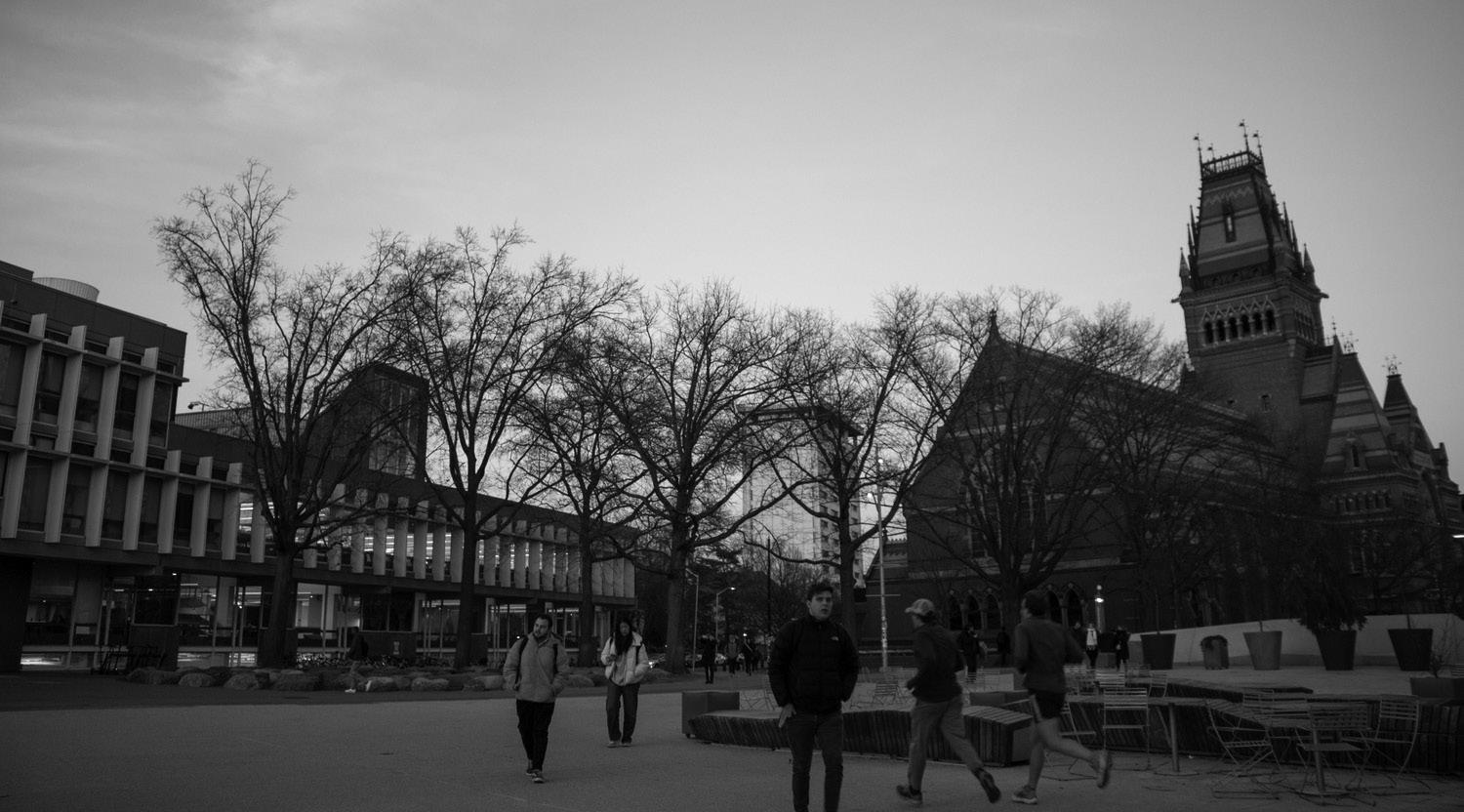

FUNDRAISING. As the University prepares for a long-term downturn in giving, interim Harvard President Alan M. Garber ’76 is leading the charge to woo back disillusioned donors. Still, the current drop in donations could be felt for years to come.
Harvard’s initial response to Hamas’ Oct. 7 attack on Israel infuriated many of the University’s major donors, but during the first weeks of the donor revolt, senior leadership remained optimistic that it could quickly win them back.
But after seven months of fallout, senior administrators and members of Harvard’s governing boards concede that the impact of the current drop in donations will likely be felt for years to come.
As the University prepares for a longterm downturn in giving, interim Harvard President Alan M. Garber ’76 is leading the charge to woo back disillusioned donors.
Under the direction of Garber and Vice President of Alumni Affairs and Development Brian K. Lee, gift officers and other senior administrators have been “working like dogs” to reverse the backlash, one donor said. Meanwhile, Harvard’s development office has shifted its outreach strategy as it speaks with donors amid the ongoing campus controversy.
Instead of focusing their time on recruiting new pledges, development officers have gone into listening mode, trying to salvage relationships with the longtime donors who have expressed deep concern with the University’s leadership in recent months, according to three people familiar with the office’s efforts.
Lee acknowledged in a statement that “this has been a challenging year for Harvard and for many who care deeply about Harvard.”
“We are constantly engaging with our alumni and donors, hearing their feedback and sharing updates from campus — that is true this year, as it has always been,” Lee wrote. “They do not always agree with us, and they do not always agree with each other, and they do not speak with one voice — but they are important members of our university community.”
Some of Harvard’s biggest donors have publicly paused donations to the University in the months since October, saying future gifts are conditional on the administration’s handling of antisemitism on campus.

The Wexner Foundation and Israeli billionaires Idan and Batia Ofer cut ties with the Harvard Kennedy School just weeks after Oct. 7. Leonard V. Blavatnik,
While Griffin left open the possibility for future contributions, he has not shifted his stance yet. In a May 11 interview with the Financial Times, Griffin urged
We are constantly engaging with our alumni and donors, hearing their feedback and sharing updates from campus — that is true this year, as it has always been.
Brian K. Lee Vice President of Alumni Affairs and Developmentwho had previously donated $270 million to Harvard, including $200 million to Harvard Medical School in 2018, decided to pause donations in December.
Harvard megadonor Kenneth C. Griffin ’89, who has donated upwards of $500 million, followed suit in January.
Harvard to “embrace Western values” and listen to donors.
“Many wealthy donors have valuable insight into transformation and improvement strategies that are clearly needed at this time,” he said.
A spokesperson for Griffin declined
to comment on whether he had met with Garber recently or reconsidered his pause on donations. A spokesperson for Blavatnik did not respond to a request for comment on whether he is still pausing contributions.
While some donors have made their concerns public, many more have privately told development officers and senior Harvard administrators that they either wanted to pause donations or were considering doing so.
One Kennedy School donor previously pledged to donate roughly $15 million over a 15-year period but has now stopped less than halfway through the pledge period, according to a person familiar with the gift.
Another prominent donor cited a perceived double standard in the way the administration has handled antisemitism compared to other forms of hate speech in their decision to halt future giving.
“We are most definitely stopping any new grants, any new giving,” the donor said. “We hope we can come back, but we’ll

nate an amount “well into the seven figures” — said he would not contribute over concerns that Harvard had not done enough to condemn Hamas and support Jewish affiliates on campus.
“Unless there’s a very clear moral stand by the organization, that is not kind of politicking and ‘two sides of the issue,’ there is zero chance that I will donate,” he said.
In December, estimates of FAS annual giving showed at least a 16 percent drop in donations from the prior year, according to a person familiar with the situation.
At a closed-door town hall in April, Penny S. Pritzker ’81, Senior Fellow of the Harvard Corporation — the University’s highest governing body — acknowledged that
Harvard President Claudine Gay’s resignation in Janu -
Less than three months after assuming office, Garber flew to London to meet with donors and alumni, speaking to a room of over 200 at an event co-hosted by the Harvard Club of the United Kingdom and the Har -
Victoria W.K. Leung ’91, president of the Harvard Club of the UK, wrote in a March statement that Garber “addressed the challenges head-on” during his meet-
“I think many were pleasantly sur -
After the UK trip, Garber and several HAA members visited Miami. In Florida, Garber met with alumni and donors for small-group and one-on-one conversa -
He has been on the road and on the phone speaking to very angry donors and beginning to lower the temperature. No one is doing more than Alan Garber to address this issue and he’s been doing it very effectively.
M.
Harvard Corporation Membertions. While traveling, Garber acknowledged that donations were down after Harvard’s tumultuous fall semester.
Garber also visited the nation’s capital in mid-April, where he addressed a crowd of 500 alumni at an event co-spon -
As interim president, Garber is also now the University’s interim chief fundraiser — a role that he has fully embraced since former
sored by the Harvard Club of Washington, D.C. Peter J. Solomon ’60, who served as the Chairman of the Friends of the Center for Jewish Studies for 45 years, said he felt Garber’s administration has been more receptive to alumni concerns, compared to Gay’s administration last fall.
“I reached out to the senior levels of Harvard, and I did not find them forthcoming frankly, at the period,” Solomon said. “And I didn’t reach out to them as a donor. I reached out to them as somebody who has been involved in almost every level at Harvard, except on the Corporation, over 60 years.”
Solomon and other donors said they’ve had a quicker line to top administrators since the start of Garber’s tenure.
Solomon said that he had spoken with Garber in the last few weeks, including when Garber attended a dinner at the Faculty Club held to mark Solomon’s retirement as chairman, saying he was “very impressed” by Garber’s leadership so far.
Garber has also been “meeting furiously” with donors in private conversations and phone calls, a person with knowledge of Harvard’s fundraising efforts said.
At a faculty town hall in April, Corporation member Shirley M. Tilghman touted Garber as Harvard’s “biggest strength in managing fundraising,” according to meeting notes shared with The Crimson.

“He has been on the road and on the phone speaking to very angry donors and beginning to lower the temperature,” Tilghman said. “No one is doing more than Alan Garber to address this issue and he’s been doing it very effectively.”
Outgoing Harvard Treasurer Paul J. Finnegan ’75 echoed Tilghman in a May 16 interview, emphasizing Garber’s role in mitigating donor fallout.
“The presence of Alan Garber has been just extraordinary in terms of changing the narrative,” Finnegan said. “He’s reached out to donors and alums, internationally and explained what his plans are to deal with various challenges on campus.”
“Longer term, I personally feel that people will come to appreciate what Alan and the team have done, and are doing, to help Harvard navigate the challenges it faces today,” Finnegan added.
Behind the scenes, Harvard has been adjusting its strategy.
One person who is involved in Harvard’s fundraising efforts said that development staff have told alumni fundraisers to be sensitive and understanding — and not to push too hard. Development
Francisco, and New York, where they were joined by Harvard College Dean Rakesh Khurana.
Since then, Claybaugh and Dunne have continued to meet with donors for Zoom conversations and other events.
Stephen W. Baird ’74, a longtime Harvard donor, said he was a “little surprised” when Khurana flew to see him in the fall in Chicago, because he didn’t con -
March interview that the FAS’ civil discourse initiative has drawn particular enthusiasm.
“I think this is really important work, to be able to tell our Harvard story, and all the exciting research and scholarship and education that we’re doing on campus, that we’ve always done and continue to do,” Hoekstra said. “That’s an important message to share with our alumni and
launch a campaign without confidence that it can secure major multi-million dollar gifts from loyal donors or a permanent president in Massachusetts Hall who would be able to see the campaign through from start to finish.
Still, Harvard is increasingly dependent on philanthropy to support its initiatives.
Between fiscal year 1998 and fiscal year 2023, the proportion of Harvard’s

The presence of Alan Garber has been just extraordinary in terms of changing the narrative.
Ougoing Harvard TreasurerCoughlin, a senior strategy manager at Harvard’s Office of Financial Strategy and Planning, told the Harvard Graduate Council in a November presentation that the University is “more philanthropy dependent, which does present a risk when you think about the volatility of the market, or a downturn in retention.”
Even though gifts make up a relatively small fraction of annual revenue at each of Harvard’s schools, they play an outsize role in supporting discretionary spending and allowing flexible budgets.
In a Nov. presentation to the Faculty of Arts and Sciences, Scott Jordan — the school’s dean of administration and finance — told faculty that current-use gifts were “important to the FAS” because they were largely unrestricted and available for use by the dean.
Three people involved in Harvard’s fundraising efforts said they thought donors who fund specific institutes or research projects are less likely to cut ties over broader concerns about Harvard’s campus climate or handling of pro-Palestine protest. Contributions to unrestricted funds, though, might take a larger hit.
Along with doubts from long-time donors, Harvard also faces the uphill challenge of convincing younger alumni to donate, according to four people with knowledge of Harvard’s fundraising efforts.
Younger classes often have lower participation rates in annual giving. In 2023, Harvard suspended its annual Senior Gift Fund, which had been long plagued by low participation.
While multiple people with knowledge of Harvard’s fundraising said that philanthropy has dropped over the past seven months, the overall numbers remain in flux. Contributions typically spike in Dec., due to tax filing considerations, and in May, when alumni
flock back to Cambridge for reunion events.
Some alumni fundraisers said they’ve had success in their efforts to raise money amongst classmates despite the turmoil of the past year.
Paul H. Barry, who helps encourage alumni philanthropy at the Harvard Business School, wrote in an emailed statement that “fundraising at HBS continues to be robust.”
Barry added that he plans to continue giving and will encourage his classmates to do the same.
Meanwhile, giving to the Harvard Kennedy School Fund — which collects alumni donations — is almost half a million dollars higher in fiscal year 2024 than it was at this point in fiscal year 2023, although the fund is extremely small in comparison to the Harvard College Fund.
That may indicate a divide among Harvard’s alumni base — between contributors with an undeterred loyalty to Harvard and their own fond memories, and those whose frustration over recent events has driven them away from the University until they see change.
The slowdown in giving is not immediately an existential threat to Harvard, a school with the largest endowment in American higher education and an unparalleled brand name.
Still, the University currently faces strong political headwinds amid a congressional investigation into antisemitism on campus. If lawmakers attempt to limit Harvard’s federal funding, it will feel the loss of trust from many of the University’s most loyal backers all the more acutely.
“Institutions like Harvard are easier to tear down than they are to build,” Solomon said.
emma.haidar@thecrimson.com tilly.robinson@thecrimson.com
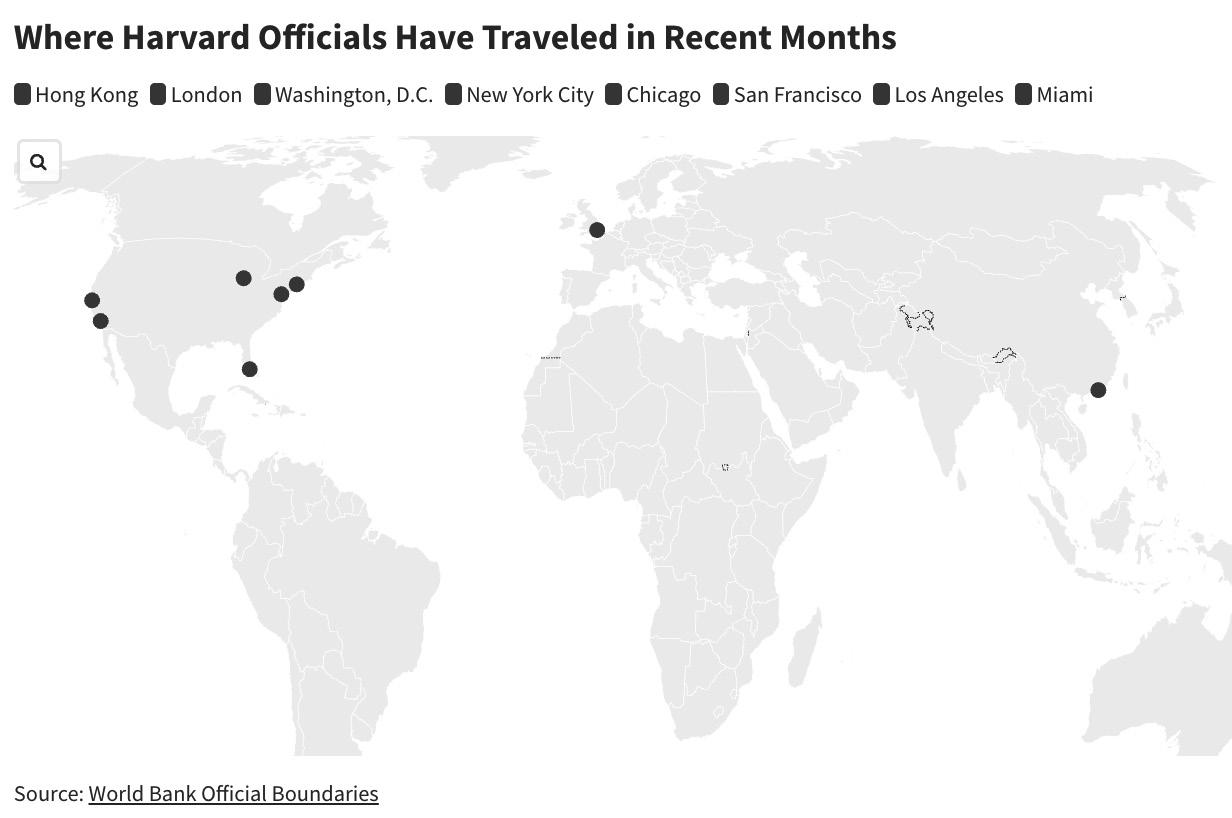
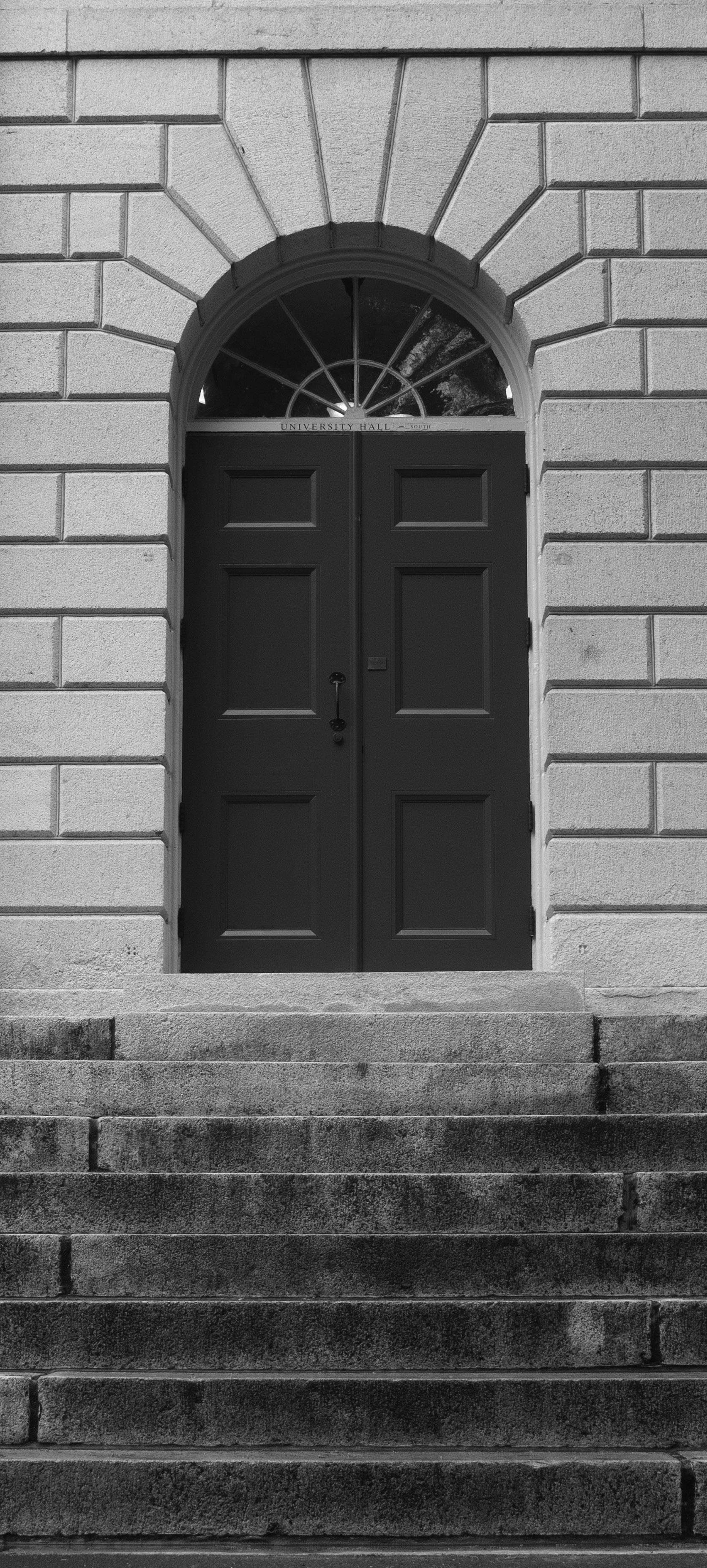

VACATION. Several student organization at Harvard College boast international conferences that rake in money, providing a profitable funding stream. But while these conferences hold the promise of unparalleled educational experiences for attendees, some club members say the pedagogical motives take a backseat to the opportunity to travel the world for free.
When Oscar Yang, a high school student who attends an international school in Shanghai, signed up for The Harvard Crimson’s Crimson Journalism Camp in 2023, he saw it as a unique chance to “try something new.”
“There’s very few opportunities in China where you can really do journalism practice,” Yang said, though he wrote in an emailed statement he was “not aware” that the program was not officially Harvard-run.
Yang is one of the thousands of high school students who have participated in conferences hosted by Harvard clubs in over a dozen countries abroad, from Australia to India to Panama.
For students like Yang, conferences hosted by clubs that bear the Harvard name can seem like rare and prestigious opportunities, especially if they don’t realize the conferences are not actually facilitated by the University.
But in exchange for a chance to learn from Harvard undergraduates, these conferences often cost students hundreds or even thousands of dollars to attend — and cater to students from wealthier backgrounds.
As Harvard clubs have grown into full-fledged companies with six-figure budgets, some of them have come to rely on international conferences as a significant source of revenue.
These international conferences promise to provide unparalleled educational experiences to students across the globe. But for some club members, this pedagogical mission takes a back seat.
Instead, the international conferences serve as an opportunity to travel the world for free, and, in some cases, indulge on the dime of the Harvard name.
In his sophomore year, Daniel J. Ennis ’25 — treasurer for the Harvard International Relations Council, an umbrella organization for international conferences — staffed a Harvard National Model United Nations conference in Panama. After it was over, he and the other Harvard students stayed in the country to do a liquor tasting, try the local cuisine, and explore different towns.
“It was super appealing to me,” Ennis said. “It really bought me in, and that’s why I did it as a junior.”
Post-conference experiences like this one, he said, are “basically a vacation for
the staffers.”
At each international conference, the budget often covers the expenses for flights, hotel fees, transportation, and related costs for dozens of staffers. In exchange for working at the conference, Harvard students receive an all-expenses-paid round-trip flight to a foreign destination — and a potential bonus vacation.
These post-conference trips are funded by the profits of the conference, according to Ennis.
“We either stay in the country or we go to a nearby country,” he said. “The first couple of days are kind of just relaxing and taking a break from the hectic life that is at the conference, and then a few days of doing different cultural immersion stuff.”
Theo J. Harper ’25, who ran the finances for HMUN India 2023, said that con -

ferences are “primarily set up to make staffers happy,” adding that within the IRC, the opportunity for travel serves as a “rewards mechanism.”
I never had an opportunity to travel as much as I am now, especially being able to serve a community that I grew up in.
I. Chowdhury ’25 HMC Middle East PresidentHarper unsuccessfully sued the IRC earlier this year after he was temporarily removed for redirecting $170,000 of the group’s income to an unofficial bank account. He called the move a “financial stress test” to expose the organization’s financial security flaws and a lack of transparency from the board.
“There’s no educational experience. The incentive is you get to travel — so you get to go to a foreign country — and the incentive is you get a post-con,” Harper said. “For example, in Africa, that postcon was a safari. In Latin America, we went to lay on a beach in Panama. In India, we went touring around the Taj Mahal.”
Harvard Model Congress Asia President Stephen G. Norris ’25 said that he traveled to Thailand, the Philippines, Singapore, and Japan during HMC Asia’s post-cons in past years.
“The opportunities for travel are unmatched, in my opinion,” he said.
The chance to visit other countries is especially significant for low-income students who otherwise would not be able to afford such travel.
HMC Middle East President Nabila I. Chowdhury ’25 said HMC was the first time she had left the country without her family as a first-generation, low-income student.
“I never had an opportunity to travel as much as I am now, especially being able to serve a community that I grew up in,” Chowdhury said.
Still, some maintained that the experiences of the student attendees was the priority during conferences.
IRC president Annabelle H. Krause ’25 said the organization’s primary goal was to bring Model UN to students around the world and educate delegates as well as undergraduate staffers.
“These conferences are a lot of work for both our boards and our directors,”
she said.
“I don’t think it’s fair to characterize it as a free trip,” she added.
Vivian Yee ’25, Secretary-General of HNMUN, concurred.
“It’s by no means an easy trip to another country,” she said.
Beyond what they bring to individual undergraduates, international conferences also have become immensely valuable for the organizations that host them.
In the face of meager funding from the Harvard Undergraduate Association, several organizations have come to rely on profits from conferences to allow them to be self-sufficient. In 2020, for example, the IRC reported more than $700,000 in revenue and $1.2 million in net assets on their tax forms.
While Chukwudi Michael “Chudy” Ilozue ’25, the secretary general of HNMUN Africa, said his conference was “not primarily a money seeking opportunity,” other staffers stressed the international conferences’ financial significance.
Yee said that though the educational mission of HNMUN plays a part in its role, in some sense “the conferences are our primary revenue generating functions.”
According to Harper, HMUN India 2023 was “immensely financially successful,” with a “turnover of well in excess of half a million dollars” and a profit of around $130,000.
Krause and Ennis denied Harper’s estimates of the revenues from HMUN India, though they did not provide their own estimates, citing confidentiality agreements in contracts with partners.
Harper also said that HMUN India was largely successful because the organization bought out a block of hotel rooms in bulk at a discounted price, then charged students a “small markup” on that price as part of their overall delegate fee. Ennis also denied this.
“I don’t think it’s fair to say specifically the hotel rooms specifically are marked up,” he said.
Yet ultimately the conferences’ profits — which come from the delegate fees collected from the participants, as well as corporate sponsorships — rely largely on the number of participants and their ability to pay the fee.
Ennis said that while the majority of the IRC’s profits come from its domestic conferences, the international conference delegate fees enable funding for the
competitive traveling team’s activities, social events, and philanthropic programs.
Norris noted that because just a fraction of HMC’s revenue comes from the HUA, the monetary value of the conferences “absolutely does hold some weight.”
He added that the self-sustaining nature of the conferences was both “a blessing and a curse” that allowed the board financial flexibility but could also “cloud some of our judgment.”
Several members of Harvard clubs that host international conferences said that the events typically attract a very particular set of attendees: students from prominent high schools with the wealth to pay for the experience.
Aspen L. Abner ’24, who will organize HMUN China 2024, said that because the conference’s advertising is typically in English, participants tend to be English speakers from international private schools in affluent urban centers.
Abner pointed to registration fees — which are around $529 — as a possible reason for the skew.
Harper said that when HMUN Australia was created, it was “explicitly pitched” as a conference that would “rely financially on Australian private schools be -
HAUSCR Summit for Young Leaders in China Beijing, Shanghai, and Hangzhou
China Thinks Big Shanghai
Harvard Model United Nations Australia Sydney, Australia
HMUN China Guangzhou, China
HMUN Dubai Dubai, the United Arab Emirates
HMUN India Bengaluru, India; Delhi - National Capital Region, India
HMUN Latina America Panama City, Panama
There’s no educational experience. The incentive is you get to travel — so you get to go to a foreign country — and the incentive is you get a post-con.
Theo J. Harper ’25 Member of HMUN Indiacause that’s the only way you can financially make that kind of thing work.”
IRC leadership, however, denied that the conference was pitched that way. They also noted that a local partner company handles marketing, advertising, and recruitment of delegates to conferences.
“I can’t speak to if our host team is specifically targeting Australian private schools. But our goal is not to target private schools to generate revenue,” Krause said.
To make travel and accommodations
HMUN Africa Nairobi, Kenya
Crimson Journalism Camp Korea, China, Indonesia, the United Arab Emirates
HARVARD UNDERGRADUATE FOREIGN POLICY INITIATIVE
Rotating Foreign Summit Rome, Italy; Istanbul, Turkey; Seoul, South Korea; Paris, France
less prohibitive for students, several of the international conferences offer financial aid for attendees.
For HMUN China this year Abner said she has introduced fee waivers to help recruit participants from “lower income areas.”
“I thought I could take some time to step out of my comfort zone, to join a program where I can connect with colleges — and of course, Harvard was a big name,” Yan said.
Now, Yan has come full circle.
ences to boost their resume, there are others who have real interest in global issues.
known around the world, really, for our directors being very good at what they do,” he said.
I thought I could take some time to step out of my comfort zone, to join a program where I can connect with colleges — and of course, Harvard was a big name,
According to Ennis, HMUN and HNMUN typically allocate 15-20 percent of their conference budget to their financial aid program — which includes waiving delegate fees or subsidizing hotel rooms or flights.
Yee said that this program is publicized in the conference policies, on social media, and among past participants.
According to Norris, as part of HMC Asia’s goal to reach “majority public schools in the Asia Pacific region,” the board sets aside around 10 percent of the conference budget for financial aid — upwards of $10,000 a year — to “really try and get as diverse a delegate base as we can.”
However, the amount of financial aid awarded to attendees is conditional on the overall financial success of the club and conference. And for some clubs, the financial aid program can be the first to take a hit when the conference doesn’t generate enough profits to cover all the costs.
Chowdhury said that securing enough funding for HMC Middle East’s financial aid program has been “difficult,” because the conference does not generate a profit.
She added HMC Middle East typically makes back just enough to cover the conference costs and flights and housing for staffers, though “we do try to at least give two or three students some financial aid money.”
In the summer after his freshman year of high school, Mike Yan ’27 attended a Harvard conference for high school students.
He is one of the staffers responsible for organizing the logistics of the Harvard Summit for Young Leaders in China — a ten-day conference organized by the Harvard Association for U.S.-China Relations.
Yan wrote in a text message that at the time, he did not know the conference was entirely student-run, but “kind of suspected it” when Harvard students — not professors — taught seminars to high school attendees.
Several staffers and conference directors said in interviews that the Harvard name — especially the value of the brand abroad — was a crucial factor in drawing attendees to the conferences.
Kyle E. Neeley ’26, a director for HAUSCR, called Harvard “probably the biggest or most widely known brand in the entire world.”
“Especially in mainland China, the name of Harvard holds a lot of weight,” he said.
The Harvard name also plays a role in helping some organizations — like the IRC — secure partnerships with companies based in countries abroad, who share a portion of the profits in exchange for staffing or advertising, according to Ennis.
“The Harvard name does bring us a long way — especially internationally, especially amongst high schoolers when it comes to recruiting — and I think partners see that and want to find a way to capitalize off of that,” he said.
He added that the
IRC’s contracts with partner companies are “zero-loss,” meaning the IRC avoids assuming any losses when their conferences are not profitable. Companies, in other words, trust HMUN or HNMUN’s reputation — and the Harvard name attached to them.
Yet students have more reasons to attend than mere prestige. According to Abner, though there is a “batch of students” who participate in confer -
Yan described his time at the conference in high school as “more of a resume padding experience,” but he said many of the high schoolers who he has since encountered as a staffer had different motivations.
“It’s more educational than resume or college padding,” Yan said. “A lot of students are not even looking to apply to U.S. colleges.”
Yee said the IRC’s HNMUN conferences are “definitely some of the most prestigious conferences on their respective circuits.”
Ilozue, the HNMUN Africa director, also pointed to the quality of the conferences.
“Our conferences are
Angela Dela Cruz ’24, a former Crimson Multimedia editor who will lead HMUN Australia this summer, said that while she thinks the Harvard brand helps attract attendees, “there is still work to be done to maintain that reputation.”
“The Harvard name can only go so far,” Dela Cruz said.
michelle.amponsah@thecrimson.com joyce.kim@thecrimson.com

COMMENCEMENT. As the end of their four years at Harvard College rapidly approaches, the Class of 2024 reflected on their memories of transitioning into undergrad during the Covid-19 pandemic and how they reclaimed a vibrant social life in a Harvard journey bookended by controversy and crisis.
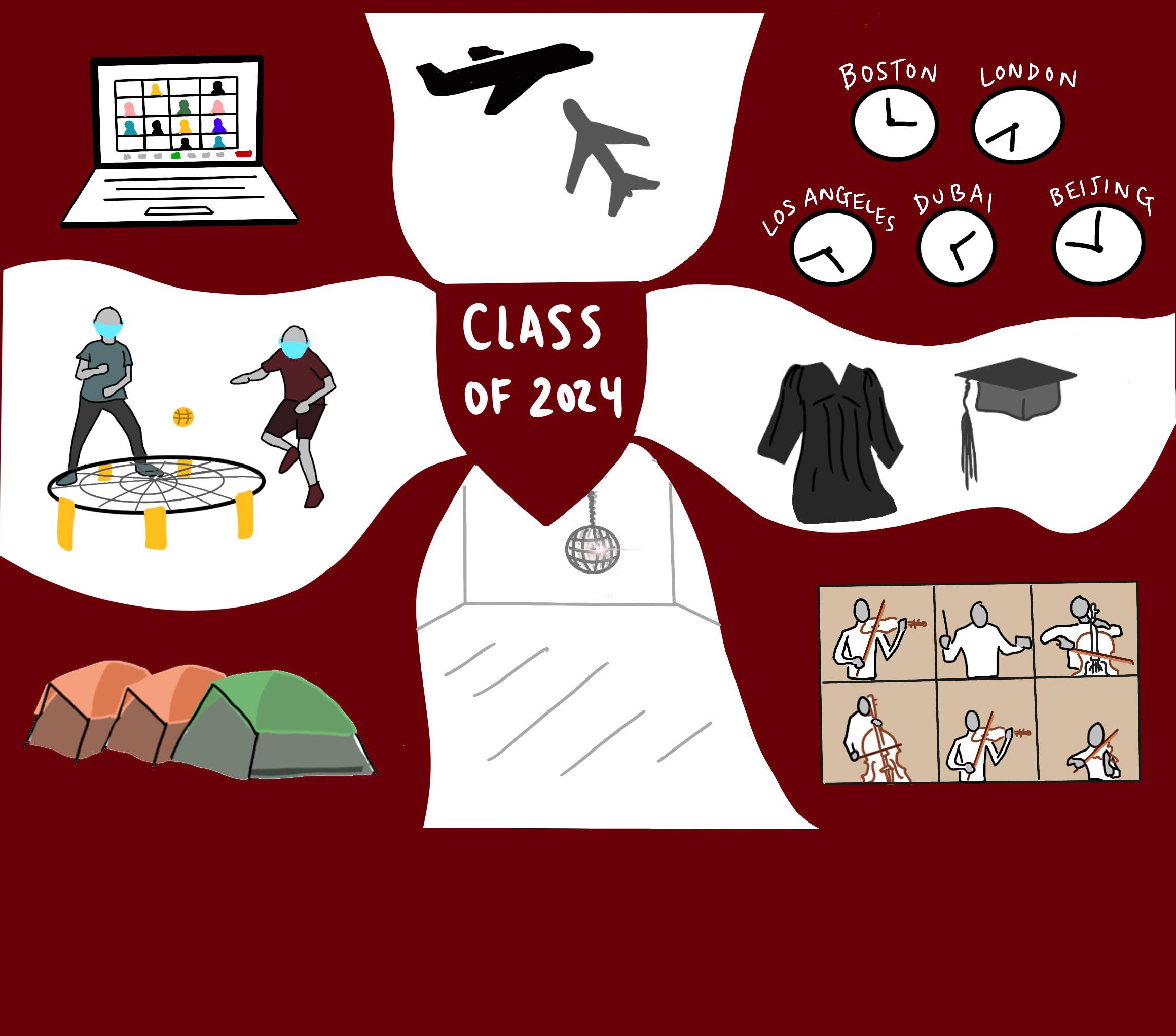
March 10, 2020
Then University President Lawrence S. Bacow announces Harvard courses will move to remote instruction due to the Covid-19 pandemic. Bacow writes students should not return to campus after spring break.
Dean of the College Rakesh Khurana writes to undergraduates that international freshmen will not be able to come to campus in the fall due to federal visa restrictions.
Freshmen and upperclassmen with extenuating circumstances move onto campus. Students begin thrice-weekly testing for Covid-19 and prepare for online classes. They cannot invite guests or other students into residential suites.
Freshmen living on campus finish their first semester at Harvard amidst daily coronavirus tests, packaged meals, closed buildings, and limited gatherings. International students say attending classes from countries in differing time zones was a challenge.
Seniors, juniors, students with difficult learning environments, and petitioning juniors returning from leaves of absences trickle onto campus and begin a mandatory quarantine period. Most freshmen are not invited back to campus for the spring semester.
BOSTON — Dressed in all black, hundreds of Harvard College seniors flooded into the basement of Game On, a sports bar in Fenway Park, on May 15, dancing to the pulsing synth bass of 2010s pop hits.
About halfway through the senior week event, the music paused as Senior Class First Marshal Fez S. Zafar ’24 took the stage. Looking out over the crowd, bathed in a dim red glow, Zafar had every opportunity to give a profound or even sappy speech on the end of college and everything the group had experienced together, from Covid-19 to graduation.
Instead, he took a simpler approach.
“Let’s get loud!” Zafar yelled. Right on cue, the DJ came in with the pounding first notes of Macklemore’s “Can’t Hold Us.” The crowd went wild.
It was a merry end for a senior class that had been through quite a lot.
Their tenure on campus began with a pandemic and ended with fears that their Commencement ceremonies could be canceled due to the pro-Palestine Harvard Yard encampment. And in between, they had to navigate to an unfamiliar and fragmented social scene, resurrect forgotten traditions, and try to restore normalcy to a decidedly abnormal start to college.
“When I started running for Class Committee, and I think a lot of the other people who were running as well, we all had this goal of, let’s try to make up for the lost freshman year that we had,” Zafar said.
Though the final weeks of the semester were full of last hurrahs and bittersweet goodbyes, they also provided time for reflection. The Crimson spoke with dozens of seniors about their memories of a Covid19-hued transition to college and how they reclaimed a vibrant student life amid four years bookended by crisis.
“We’re also going to be the only class ever to have gone through Covid freshman year,” Alexi Stavropoulos ’24 said. “Navigating that together is something that we can always look back on.”
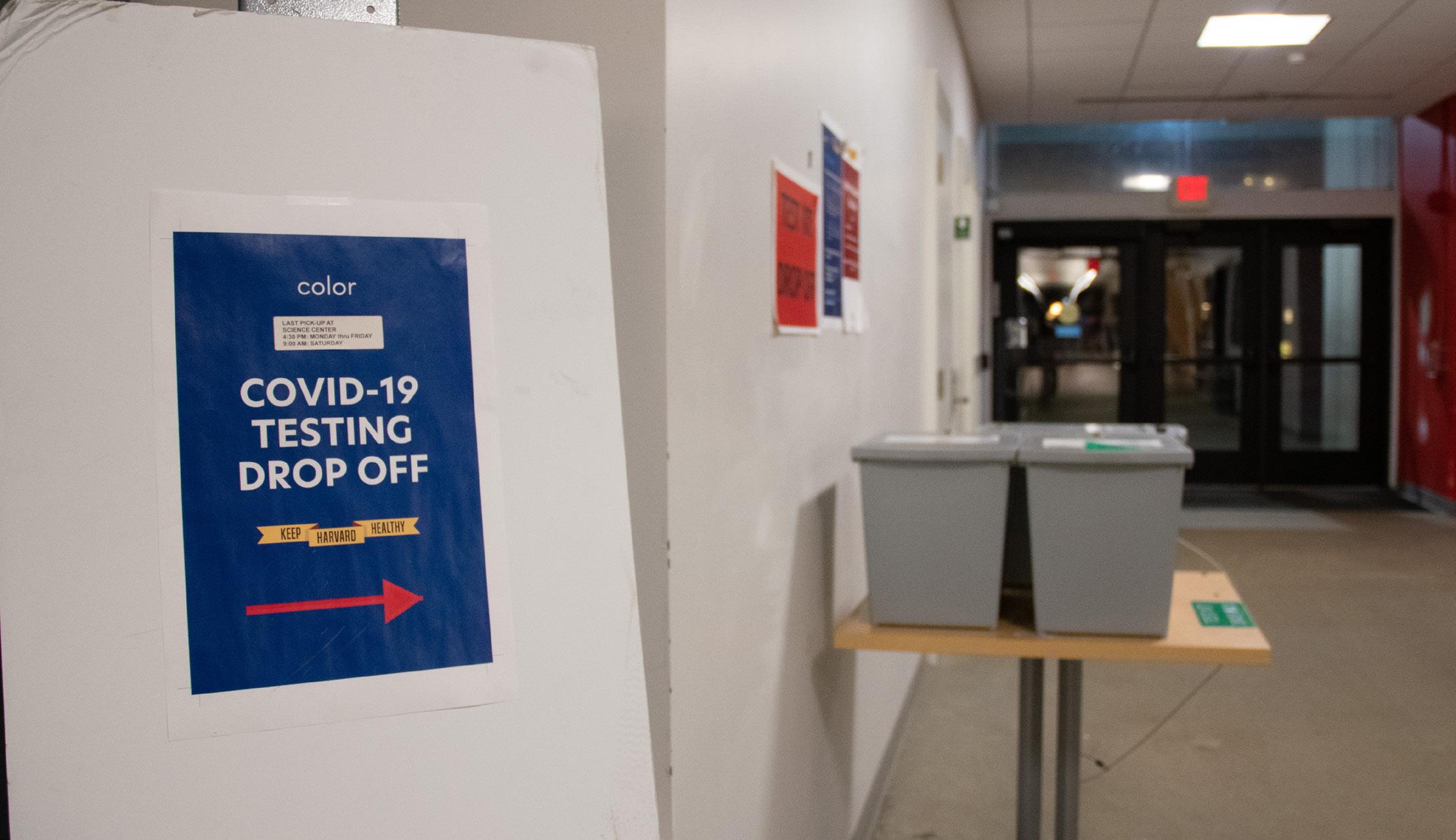
‘MAKING
When freshmen arrived at Harvard in August 2020, they were moving into a nearly unrecognizable campus.
All of the traditional difficulties of freshman year — making friendships that could last four years or more, finding their footing with classes and extracurriculars, and acclimating to a new phase of life — seemed orders of magnitude more challenging, with students scattered across both freshmen dorms and upperclassmen houses, attending remote classes, and following strict social distancing guidelines.
Many decided to postpone it altogether, with nearly 20 percent of freshmen opting for a gap year instead of trying to navigate a maze of Covid-19 restrictions.
But for the ones who stuck it out, all they could do was make the best of a bad situation.
“A lot of us say stuff about how we lost a
year, and stuff like that,” Neeyanth Kopparapu ’24 said. “I feel like we did a pretty good job of making do with what we had.”
Traditional ways to make friends — warming up to roommates or meeting people at parties or in classes, bolstered by the tight proximity of Harvard Yard’s freshman dorms — were replaced by more creative and intentional methods.
“It’s pure kindergarten because you can’t meet other people in normal situations — you have to just walk up to people as if you’re on a playground,” Zafar said.
Zafar made an Instagram account called @walkwithfez, and he would regularly schedule group walks before “a cool photo at the end.”
“We would just walk around and we’d be like, ‘Is that Dunster?’ and it would be Eliot — because we didn’t know, there were no upperclassmen to tell us what anything was,” Zafar said.
Stavropoulos recalled how his friend Manuel A. Yepes ’24, a Crimson Editorial
editor, started a GroupMe chat called “Harvard FC” after some of their friends had been “kicking a soccer ball around” in the Yard one day.
“It grew by the end of the year to be 160 people,” Stavropoulous said. “We’d essentially organize these public soccer pickups at this public field a little bit far back. That was a great way to meet people — everyone was always happy to make the walk over.”
For international students, the majority of whom did not live on campus freshman year, the transition was even more challenging.
“I used to go to sleep every day at 7 a.m. and wake up at like 4 p.m. It was the dead of winter, so I didn’t see the sun for three weeks,” said Matilda Marcus ’24, who lived in London during the fall.
Ana Breznik ’24, an international student from Slovenia, said she performed a snack exchange with a friend she met in regular Zoom meetings.
“I had a friend who I would do weekly
May 27, 2021
The Crimson reports that Harvard cracks down on students holding oncampus parties violating Harvard guidelines, including a 30 person gathering during River Run.
Aug. 28, 2021 March 31, 2022 June 29, 2023
Harvard College students return to a full capacity campus after 18 months of being dispersed around the globe. Students express excitement for returning to inperson classes and attending events such as the Harvard-Yale game.
Students vote overwhelmingly to dissolve the Undergraduate Council, the College’s existing student government, in favor of an alternative government, the Harvard Undergraduate Association.
May 4, 2022
Harvard faculty vote to discontinue shopping week in favor of a previousterm course registration system.
The Supreme Court strikes down affirmative action, declaring Harvard’s race-conscious admissions policy unconstitutional.

Fez S. Zafar ’24 is the Class of 2024’s First Marshal. In his role, Zafar said he attempted to make up for the class’ lost freshman year. FRANK S. ZHOU — CRIMSON PHOTOGRAPHER
Zoom meetings with. We did a snack exchange — I sent him some Slovenian snacks, he sent me American snacks, so we managed to keep our friendship alive,” Breznik said.
As the spring 2021 semester only guaranteed on-campus housing for juniors and seniors, many freshmen chose to live in small groups off campus — both in the Boston area and more far-flung destinations. An “open invitation” in a class-wide GroupMe chat even led to 10 freshmen, mostly international students, sharing an Airbnb in Costa Rica for the semester.
“We weren’t friends or anything — we just wanted some community and to be closer to the time zone, because before that I was having midnight classes. We just met at the airport, basically,” Breznik said.
Though students said they tried to make the best of the unusual year, many were left feeling disappointed.
“It was tough. I could count on one hand
the amount of friends I had. It felt like everyone is socially deprived,” William P. Pryor ’24 said.
They were ready for a change.
‘CAN’T
In the fall of 2021, members of the Class of 2024 — now bright-eyed sophomores — were eager to dive headfirst into a project of extracurricular and social revival. But first, they had a lot to learn.
“There were certain organizations, Harvard acronyms that I didn’t know sophomore year. There was definitely this catch-up aspect,” Pryor said.
Many students in the Class of 2024 said they felt their sophomore year better delivered the novelty and excitement typically associated with freshman year.
“Sophomore year was like my actual
freshman year, because I did so many freshman mistakes,” Maria F. De Los Santos ’24 said, pointing to her decision to take three p-set classes in one semester.
“I do count my college experience starting from sophomore year instead of freshman year, because freshman year feels so fake,” Nicholas Castillo Marin ’24 said.
Blocking groups that had formed among loose acquaintances became less relevant, as students took advantage of their newfound freedom to seek new connections.
“I have three blockmates, and I don’t talk to any of them anymore. Not in like a ‘tea’ way, just in like a, ‘I don’t fucking know you,’” Marcus said.
For Rosanna Kataja ’24, who did her freshman year entirely online, coming to campus was a particular shock.
“I think one of my friends I met in the elevator — I didn’t recognize him at first. He was like ‘Hi, Rosanna,’ I was like, ‘Who are you?’” Kataja said.
Breznik, who spent her freshman fall semester at home in Slovenia, said as a sophomore “it definitely felt like some groups had already been formed.”
“Some of these people who I thought were going to be my closest friends over Zoom, I feel like in person then we just didn’t vibe in the same way,” Breznik said.
Students also had to battle through a loss of extracurricular institutional memory as they tried to revive campus groups that had been previously consigned to Zoom screens.
“No one knew how to organize, which I think was a really big deal,” Castillo Marin said. “Even leading meetings was difficult, because if you’ve never attended a meeting you don’t know how to run one.”
In keeping old traditions alive within Harvard’s mountaineering club, Chris A. Partridge ’24 said he had to “work very very hard over the summer to reach out to old alums.”
“I think a lot of clubs relied on single people, like one or two people who remembered — who either took a gap or were just very engaged their senior year,” Catherine Y. Liang ’24 said.
Though Partridge said his sophomore year was “awesome,” he added that “a lot of things still died,” such as traditions in student clubs and upperclassmen Houses.
“Those prank wars between clubs, or generally something of more rowdiness or willingness to immerse yourself in college life, whatever definition it is — I think a lot of that died,” Partridge said.
But the struggle to resurrect old practices and traditions was accompanied by a distinct sense of possibility and excitement — the hope that students could win back the sort of college experience they had been denied the year prior.
Jeremy O. S. Ornstein ’23-’24 said seeing his roommate for the first time sophomore year made him feel like he was “back.”
“I just remember coming back and seeing my roommate and he’d been in Idaho for so long,” Ornstein said. “There he is, with his van — ‘Hey man’ — he comes in, we dap up, he’s like, ‘I’ll get your stuff from the car,’ and he grabs my stuff.”
“There’s not a second that passed, we’re jamming,” he added.
Erin Y. Yuan ’24, who played viola for the Harvard Radcliffe Orchestra, said the group’s rehearsals saw “impeccable” attendance in the 2021 fall semester.
“Everyone was just so enthralled by the concept of playing together — it was so foreign during Covid — attendance was impeccable, for a very long time,” Yuan said, adding that the “energy” of playing live music “can’t be replicated over Zoom.”
“It was really magical,” she said.
As the Class of 2024 entered their senior year, the sense of normalcy which had returned after the pandemic was uprooted once again by crisis.
Shortly after Hamas’ Oct. 7 attack on Israel, 33 student groups co-signed a controversial statement blaming Israel for the attack.
The backlash was fierce and immediate. Prominent donors and politicians
July 2, 2023 Oct. 8, 2023 Jan. 2, 2024 May 6, 2024 April 24, 2024
Claudine Gay takes office as the 30th president of Harvard University. A week before taking office, Gay appointed Hopi E. Hoekstra to serve as her successor as the University’s Faculty of Arts and Science Dean.
33 student groups co-sign a statement that receives national backlash, followed by doxxing attacks and a wave of national pro-Palestine student activism.
Then University president Claudine Gay resigns, ending the shortest presidential tenure in Harvard’s history. Gay faced criticism over the University’s response to Hamas’ attack on Israel, her congressional testimony, and allegations of plagiarism in her scholarship.
Pro-Palestine organizers begin an encampment in Harvard Yard, protesting the College’s suspension of the Palestine Solidarity Committee and demanding Harvard divest from Israel’s war in Gaza.
12 days into the encampment, University President Alan M. Garber writes an email to Harvard affiliates calling on protesters to end their encampment of Harvard Yard and stating participants will be referred for involuntary leave from their schools.

trained national ire on the University. A doxxing truck came to campus targeting students thought to be affiliated with the statement. Pro-Palestine activists staged a series of protests and briefly occupied University Hall. Eventually, congressional Republicans summoned then-University President Claudine Gay to Washington to testify about antisemitism — sparking national headlines and ultimately paving the way for her resignation.
But though the turbulence was of a different character, some seniors said they were used to living through history.
“The class of 2024, we’re unfortunately no strangers to major historical world events, so this is just another one of them,” Pryor said.
“They’re two major world events that happened to us that we’re all living through together — those bring us closer,” Warren R. Sunada-Wong ’24 said.
The crises continued into the spring semester, when pro-Palestine organizers mounted an encampment protest in Harvard Yard. Before the encampment ended on May 14 after 20 days, many seniors were concerned that the demonstration could lead to Harvard’s Commencement ceremonies being canceled, as they had been at Columbia University and the University of Southern California.
In an email to Harvard affiliates two weeks after the encampment began, Interim University president Alan M. Garber ’76 wrote that it would be “especially painful if students who graduated from high school or college during the pandemic were denied a full graduation ceremony for a second time.”
According to The Crimson’s annual senior class survey, the favorability of the encampment among seniors plummeted after May 6, the same day Columbia canceled its own commencement, suggesting rising anx-
ieties over the potential disruption of their graduation ceremony.
“A lot of us didn’t get to have our high school graduation. There’s a possibility of not having college graduation either,” Sunada-Wong said. “It’s some kind of shared camaraderie in that.”
Sydney E. Lang ’23-24 shared a similar sentiment: “I think that there is some form of camaraderie or community or something that people have built because of the irony of this situation happening to the same people twice.”
Even though a graduation ceremony was again up in the air, some students said they were merely happy the senior class would be able to celebrate together one last time.
“It’d be lovely to have a graduation, but I’m sure in these next couple weeks we’re just really focused on just being together and spending as much time together,” Stavropoulos said.
Though Castillo Marin said he was sad to miss high school graduation, “it also is a little cool to be like, ‘We are a little different.’”
“We were the first class to ever get a sophomore convocation, and that’ll probably never happen again,” he added. “We’ve lived through some crazy times.”
But Pryor urged his classmates to look at the exceptional circumstances of their college experience not as a source of regret, but as a learning experience.
“Senior spring, everyone’s scared of the future — like, ‘Oh we’re about to go out into the real world.’ In a weird way, with what’s been going on on campus, the real world is coming to us very fast,” Pryor said.
“It’s meeting us and you can’t avoid it — you have to deal with it straight on,” he added.
azusa.lippit@thecrimson.com cam.srivastava@thecrimson.com
May 6, 2024 May 10, 2024 May 14, 2024 May 15, 2024 May 23, 2024
Harvard senior approval of the encampment protest plummets after Columbia University announces cancellation of its commencement ceremonies.
Less than two weeks before Harvard’s Class Day and Commencement, The Crimson reports the Harvard Alumni Association has not found a speaker for Class Day.
After 20 days, pro-Palestine organizers agree to peacefully end their encampment of Harvard Yard. Garber agrees to offer protesters a meeting with members of the University’s governing boards and to begin reinstating students from involuntary leaves of absence.
Midway through Senior Week, hundreds of seniors dance to 2010s pop hits at a sports bar in Fenway Park. Senior Week events for the Class of 2024 include a laser tag outing, a “Last Chance to Dance: Boston” event, and a senior talent show.
Members of Harvard’s graduating Class of 2024 receive their degrees in the University’s 2024 Commencement ceremony held in Tercentenary Theatre.
SOCIAL MEDIA. While Sidechat can provide much-needed levity in moments of stress on campus, students on the all-time leaderboard, Sidechat employees, and casual users spoke to The Crimson about whether the app facilitates meaningful conversation.
 By MADELEINE A. HUNG AND AZUSA M. LIPPIT CRIMSON STAFF WRITERS
By MADELEINE A. HUNG AND AZUSA M. LIPPIT CRIMSON STAFF WRITERS
After Waseem Ahmad ’27 left his final exam for Statistics 110: “Introduction to Probability” last fall, his classmates had already flooded the anonymous social media apps’s Harvard “community” with posts commiserating about the “rough” exam.
Ahmad said one post stands out in his memory.
“Me in 20 years: ‘oh what time is it.’ My son: ‘it’s 1:10,’” the post reads, accompanied by a meme template consisting of a
chihuahua’s shell-shocked face superimposed on an image of a Vietnam War battlefield.
“It’s a reference to the final, to how bad it was,” Ahmad said of the post, which has more than 1,300 upvotes and is the 18th most upvoted post of all time among Harvard Sidechat users.
Though Sidechat is often a platform for much-needed levity and humor in moments of stress, many students have raised concerns about its effectiveness as a medium for political debates and propensity for spreading negativity.
“It’s anonymous, so people are just more likely to say stuff without meeting
the repercussions to what they’re saying,” Tinaye T. Ngorima ’27 said. “I think people are just a little more extreme.”
In dozens of interviews with The Crimson, students on the all-time leaderboard, Sidechat employees, and casual users discussed whether the app facilitates meaningful student discourse or amplifies divisiveness already pervasive on Harvard’s campus.
Undergraduates scroll through hundreds of new posts each day on Harvard’s Sidechat forum, upvoting entertaining memes
and replying to scathing opinions on campus news.
Despite Sidechat’s flaws, Louis B. Auxenfans ’27 said the app is “more often than not” a source of fun.
“Sometimes it can be too negative, too demoralizing — but it’s just funny to see the memes people make about Harvard,” Auxenfans said.
In The Crimson’s 2024 senior survey, 43.5 percent of 887 responders said they found Sidechat favorable, while 37.66 percent responded “unfavorable.” Surveyed seniors also said Sidechat is their third most used social media platform after Instagram and LinkedIn, surpassing X, Tik -
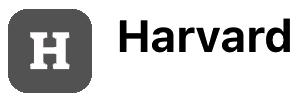
2,500+
The number of upvotes on the all-time most upvoted post on Harvard’s Sidechat forum. The post is a meme that reads “When they ask how my semester is going,” paired with an image of Gay nervously smiling at her inauguration.

$50
The maximum amount of money Sidechat’s student “community managers” could make in one week while the app “briefly” tried out the position.

246,734
The amount of “karma” — net upvotes and downvotes on content — the first place user on Harvard Sidechat’s all-time leaderboard has, as of May 18. The number one user’s total is nearly double the combined karma of second and third place, 125,677 and 123,306 respectively.

16
The date Sidechat leadership announced in a post on the app that membership would be restricted to current Harvard undergraduate students. Though not affiliated with Harvard Sidechat, Harvard leadership asked the app’s administrators to adjust their moderation standards following complaints of antisemitic content.
Tok, and Snapchat.
Many students said they passively engage with the app — viewing and upvoting posts rather than creating them — adding that they question whether the pool of students who post is an accurate representation of the College’s student body.
Rosanna Kataja ’24 said the students who actively post on Sidechat are the “loud few.”
“The big posts are dominated by the loud minority — maybe the upvotes not so much, because if you get 700 upvotes, it’s quite a lot of the whole College,” Kataja said.
While some students, like Luke P. Kushner ’27, said the app is “a big joke,” others see it as an arena in which to fight for a coveted spot on the leaderboard.
Sidechat displays “upvotes” and “downvotes” on each post, gauging levels of engagement — users accumulate “karma” over time based on the net upvotes and downvotes their content receives.
The most upvoted Harvard post of all time — featuring a candid photo of former University President Claudine Gay smiling nervously at her September inauguration, captioned “When they ask how my semester is going” — boasts more than 2,500 upvotes, a significant number in comparison to Harvard’s undergraduate population of 7,063.
With 35,000 karma, Kataja is on Harvard’s all-time leaderboard, which displays users with the top 25 karma totals. The leaderboard is currently topped by one freshman undergraduate with more than 245,000 karma — nearly the combined total of the second and t
hird place users.
The first place user spoke with The Crimson on the condition of anonymity due to privacy concerns.
The freshman said a “leak” of her class year on Sidechat last winter revealed a stigma on campus around students who frequently post on the app.
“People were saying, ‘Oh my god, she has no life,’ and that ‘She’s probably had the worst freshman year so far if she’s gotten to that point,’” she said. “My screen time is only like one to two hours per day on Sidechat.”
“I’m not a troll who lives in a cave and only makes Sidechat posts,” she added.
The national spotlight on Harvard’s campus activism after Hamas’ Oct. 7 attack on
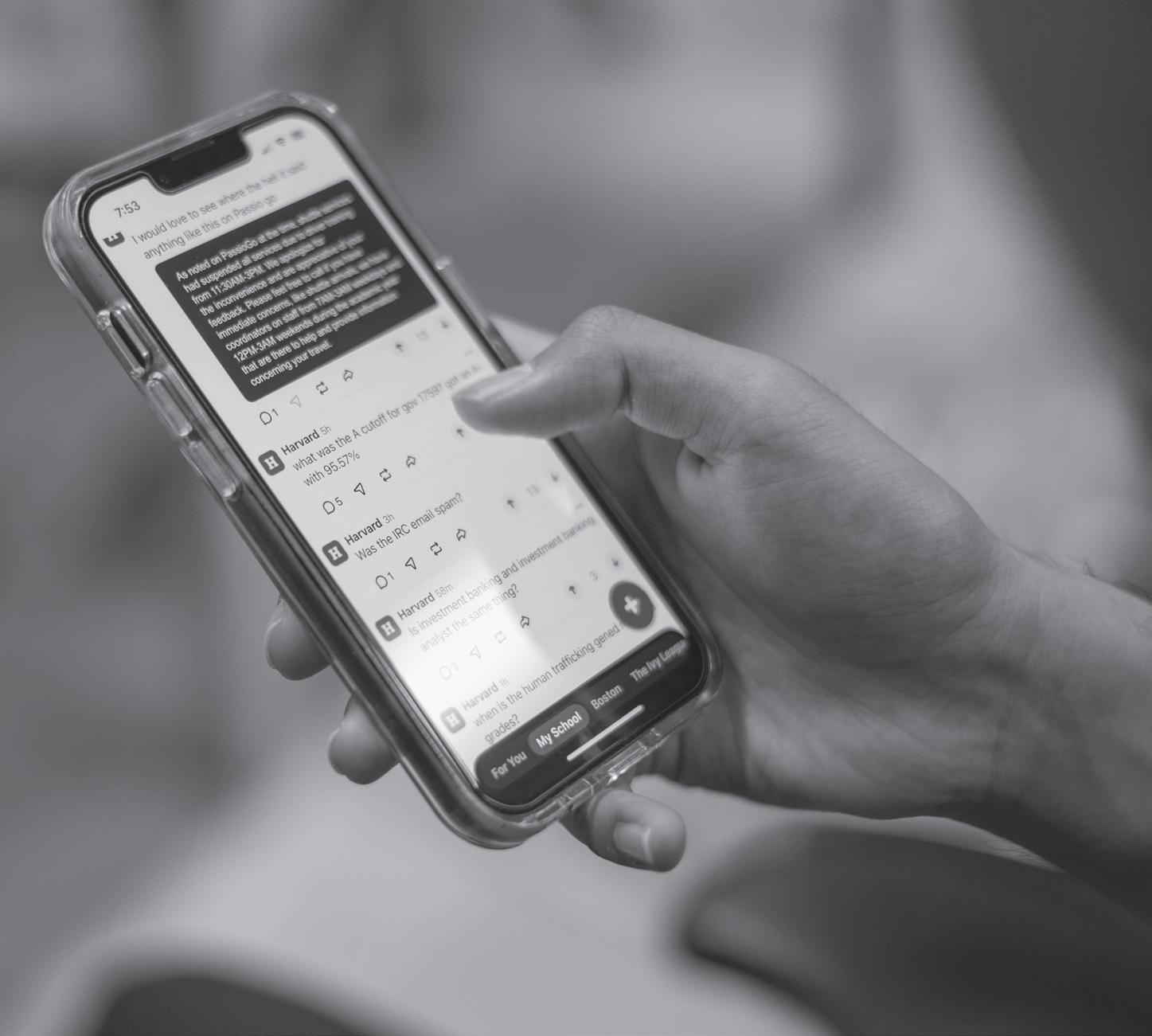
Israel opened the floodgates for an eruption of political posts and heated debates on Harvard Sidechat — serious commentary on global events increasingly punctuated the platform’s usual lighthearted quips.
In recent weeks, posts about a pro-Palestine encampment in Harvard Yard have consistently dominated the “Hot” and “Top” tabs of the app, which include posts with high engagement. A May 6 post regarding the encampment garnered more than 1,100 upvotes and more than 50 replies.
“you privileged protesters think it’s cute to get graduation cancelled, but do you know how many of us have to pay so much hard-earned money for our families to attend the single graduation we have ever gotten?” the post reads. “how can you take this away from us?”
Students said the opinions they see on Sidechat are unusually polarizing — perhaps due to the anonymous nature of Sidechat’s posts.
“The people who take the time to air out their grievances on Sidechat are obviously feeling way stronger one way or the other, whereas I think normally Harvard falls more in the middle,” Ngorima said.
Isha M. Sangani ’24 said she has seen people on Sidechat being “really direct and sometimes kind of rude,” in contrast to how students would act in person.
“It’s a small minority that is very active and also those people are not people that necessarily normally feel emboldened to speak the same way they do online, in person,” Sangani said.
“We prioritize keeping communities safe above all else,” Sidechat CEO and co-founder Sebastian Gil wrote in an emailed statement to The Crimson. “We do more than most (if not all) social media apps in moderation.”
Some students said the anonymity also provides a lack of personal “repercussions” attached to user’s names, resulting in less nuanced political posts.
“There’s no accountability, it’s a completely anonymous platform, and there’s no repercussions if you say anything that’s incorrect or do anything that’s wrong,” Kushner said. “You can get banned, but basically there’s no repercussions.”
However, anonymity might neutralize concerns about self-censorship in political commentary — some students said they appreciated being exposed to new perspectives on Sidechat.
“If I don’t know in particular someone who’s super pro-Palestine or super pro-Israel, I can kind of get an access to their viewpoint through Sidechat,” Kushner said.
Whether posting anonymously provides students a forum for free expression or a chance to be needlessly offensive,
some students said the posts allow users to avoid accountability.
“Hot take — if you can’t tie your name to an opinion, I don’t think you should have one,” Miles S. Barakett ’27 said. “We all have crazy takes sometimes, but even I’m like, ‘you know what, if I tied my name to that take, I’m going to craft it in a way that’s even better.’”
In a rare acknowledgment of Sidechat’s prominent role on campus, Harvard’s administration asked Sidechat to adjust its standards for moderation in Jan. following complaints of antisemitism on the app.
Harvard Sidechat now requires a verified undergraduate email address. Sidechat administrators wrote in a Jan. 16 post that the inclusion of all Harvard affiliates between May 2023 and Jan. 2024 was accidental.
Sidechat’s online community guidelines include restrictions in several content categories including “Bullying and harassment,” “Misinformation,” and “Trolling.”
“We want our users to have fun on the platform — just not at others’ expense,” the website reads. “We remove bad-faith posts that seem designed to agitate other users, even if other policy violations aren’t present.”
Gil wrote that Sidechat has a “trained moderation team of 30 moderators working 24/7” who review the majority of user reports within one minute based on “keywords, phrases, and through ML models designed to detect bigotry.”
Still, users often question the validity of Sidechat’s moderation policies in posts containing screenshots of notifications that their posts were deleted.
“We investigate every report of mis-moderation that is reported to us via email, reported in the app, or we see shared on social media,” Gil wrote. “We
also welcome feedback from the community on times we might not have gotten it right.”
In an effort to generate and moderate Sidechat content — and to facilitate the launch of interest-based “communities” — the app “briefly” employed students as “community managers,” responsible for “flagging content that fails to meet community guidelines.”
According to an onboarding document obtained by The Crimson, community managers were paid five dollars for every six posts and four “thoughtful” comments they posted — 10 pieces of content in total — during up to 10 three-hour shifts per week.
“We value content that directly references your school and/or community and feels relatable to the student experience,” the onboarding document states.
Elise M. Pham ’26 worked as a community manager during the trial period from Oct. 2022 to May 2023. She wrote that the student managers were not able to re -
move content directly, as only Sidechat administrators take down posts.
Sidechat has since discontinued the community manager position, but still seeks student input by arranging meetings with “power users” — including the freshman at the top of Harvard’s leaderboard — to solicit feedback and discuss new features.
Though she was initially “excited to play a bigger role in the student community,” Pham wrote in a statement to The Crimson that working as a community manager made her see the app as “superficial.”
“Since Sidechat admin encouraged us to post relatable content, a lot of the content were complaints about the campus, student life, faculty, classes, etc,” Pham wrote. “While these may have been valid, it did generate a lot of negative energy that skewed my college experience.”
madeleine.hung@thecrimson.com
azusa.lippit@thecrimson.com

DUELING INCENTIVES. Like it or not, the selection of Harvard’s 31st president will inevitably be viewed by key stakeholders through the prism of identity politics — and it’s likely that more people will be disappointed than pleased.

By order of the United States Supreme Court, Harvard can’t consider race in its admissions process. Unfortunately for the Harvard Corporation, that ruling does not extend to presidential searches.
Like it or not, the selection of Harvard’s 31st president will inevitably be viewed by key stakeholders through the prism of identity politics — be it race, gender, or religion — with a strong likelihood, given the wide diversity of viewpoints and priorities, that more people will be disappointed than pleased.
“No matter what direction they go in, it’s going to say something about how Harvard is responding to this political moment,” said Khalil Gibran Muhammad, a professor of history, race, and public policy at the Harvard Kennedy School.
After Hamas’ Oct. 7 attack on Israel, some Harvard affiliates believe that the next leader should focus on combating antisemitism and protecting Jewish students on campus — an imperative that some believe a Jewish president could execute best.
After Claudine Gay’s tenure was cut short following unrelenting backlash over her handling of campus antisemitism and mounting allegations of plagiarism, others are still looking for a woman of color to get a full term at the helm of the University.
And after Harvard’s credibility as a premier institution of higher education faced scrutiny following the plagiarism allegations, there is a growing belief that a candidate with unimpeachable scholarship must be prioritized above all else.
Muhammad said that whatever choice the boards make “in terms of who that individual is and what racial and/or gender identity they bring to the role, it will send some signal one way or the other — whether they wanted to or not.”
As Harvard’s governing boards consider candidates to permanently succeed Gay at the helm of the University, they will have to decide which attributes to prioritize in a president.
While faculty, students, and alumni are split on what direction they’d like to see the search process go, several higher education experts noted that whoever serves as Harvard’s next leader must be prepared to confront the same challenges that Gay faced during her presidency.
Paul Reville, a professor of education
policy and administration at the Harvard Graduate School of Education, said that the next president “can expect that there will be continuing assaults on the whole notion of DEI and the need to articulate the value proposition.”
Marianne Hirsch, a professor at the Institute for the Study of Sexuality and Gender at Columbia University, said that the fraught political moment will likely lead the boards to seek someone with experience leading institutions of higher education.
“We’re seeing presidents fail in very important, significant ways — or at least make mistakes, if not completely fail,” Hirsch said. “A lot of that has to do in several universities, including my own, with inexperience.”
In particular, the next president will face the challenge of healing a student body deeply divided over the war in Israel and Palestine. Interim University President Alan M. Garber ’76 formed two dual presidential task forces in January to combat antisemitism and anti-Muslim and anti-Arab bias on campus, but members of both communities have said that more still needs to be done.
The next president will likely need to demonstrate to the governing boards that they have the experience and skill set to bridge those divides on campus.
Harvard Hillel President Nathan B. Gershengorn ’26, wrote in a statement that he hopes the next University president will work to combat campus antisemitism.
“Whoever the next president is, Harvard Hillel looks forward to working closely with them to protect Jewish students, serve the needs of the Jewish community, and create a welcoming campus environment for all,” he wrote.
Reville said that the boards may also be incentivized to select the presidential candidate with the strongest academic bona fides after the plagiarism allegations against Gay, but that doing so would not take into account the broader challenges facing Harvard.
“The tradition in selecting University leadership has always been to highly prioritize top-level scholarship, and to make the assumption that the person best suited to lead the University is a first-class scholar.” Reville said.
Reville, however, said that in today’s world academic credentials alone are “not sufficient for the kind of leadership that Harvard will need in the future.”
He added that Harvard will need “a strong public leader for the University, and therefore being somebody with significant experience in public leadership.”
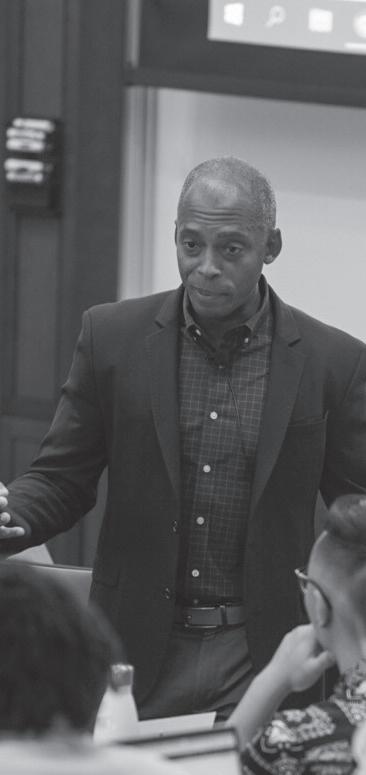
Some of Gay’s staunchest defenders argued that the criticisms levied against her just served to mask a right-wing effort to discredit institutions of higher education and force Harvard’s first Black leader 0ut of office.
Hirsch said it was important to pay attention to the group of university presidents that the House Committee on Education and the Workforce called to testify in a Dec. 5 hearing — Gay, former University of Pennsylvania President Elizabeth M. Magill, and MIT President Sally A. Kornbluth.
“It’s not lost on me or on anybody else that they chose women presidents and mainly new presidents to call before Congress,” Hirsch said.
While a majority of questions from committee members were about campus antisemitism, some Republicans used their time to press the university presidents on other issues, like the political and ideological makeup of students and faculty, sources of foreign funding, and efforts to promote diversity across their institutions.
Rep. Elise M. Stefanik ’06 (R-N.Y.) and Bill A. Ackman ’88 led the charge to demand Gay’s resignation for months before the congressional hearing. While Gay’s critics latched onto criticisms of her response to antisemitism on Harvard’s campus and later the allegations of plagiarism in her academic work, many of those same critics also repeatedly used their platforms to denounce diversity, equity, and inclusion efforts at the University.
On Dec. 7, two days after Gay’s testimony, Ackman claimed in a post on X that he learned from someone with first-hand knowledge of Harvard’s 2022 presidential search process that “the committee would not consider a candidate who did not meet the DEI office’s criteria.” (Ackman provided no evidence to back up his claim.)
“Shrinking the pool of candidates based on required race, gender, and/or sexual orientation criteria is not the right approach to identifying the best leaders for our most prestigious universities,” Ackman wrote on X. “And it is also not good for those awarded the office of president who find themselves in a role that they would likely not have obtained were it not for a fat finger on the scale.”
Some of Gay’s defenders took Ackman’s post and other similar comments as evidence that criticisms of DEI were at the core of the attacks against Gay.
“All of the key players — from Virginia Foxx, to Elise Stefanik, to Bill Ackman — have all been very clear in their public state-

ments that it was neither antisemitism nor plagiarism, but Claudine Gay’s commitment to DEI at Harvard, that compelled them to seek her being fired,” Muhammad said.
Gay wrote in a New York Times op-ed following her resignation that she believed her ouster was part of a campaign that was “about more than one university and one leader.”
“It is not lost on me that I make an ideal canvas for projecting every anxiety about the generational and demographic changes unfolding on American campuses: a Black woman selected to lead a storied institution,” Gay wrote.
One of the greatest challenges that the Corporation might face is not whether they will find the right fit for the University, but if that presidential candidate believes Harvard is the right fit for them.
Gay’s tenure demonstrated that the president of Harvard will be the recipient of personal attacks from a variety of actors across the political spectrum. Gay said that she was frequently the target of vicious racism.
“Those who had relentlessly campaigned to oust me since the fall often trafficked in lies and ad hominem insults, not reasoned argument,” she wrote in the New York Times op-ed. “They recycled tired racial stereotypes about Black talent and temperament. They pushed a false narrative of indifference and incompetence.”
“I’ve been called the N-word more times than I care to count,” Gay wrote.
Susannah Heschel, chair of the department of Jewish Studies at Dartmouth University, acknowledged the sexism that every woman has to deal with, especially those in positions of power.
“I hope that whoever the next president is will be able to cope with not only the sexism if she’s a woman, the racism if she’s Black, the antisemitism if she’s Jewish — or he — and have the wherewithal to be able to handle it effectively,” Heschel added.
Muhammad said that Harvard must defend its own leadership and higher education against attacks on diversity and inclusion efforts in general, but especially during the next presidential search.
“If there isn’t a robust affirmation that the ‘E’ in DEI remains crucial to the work of Harvard, Harvard University will have essentially capitulated and surrendered to the false accusations of its critics,” Muhammad said.
summer.sun@thecrimson.com samantha.wu@thecrimson.com

NEW CHALLENGES. In a post-Covid-19 pandemic world full of new moral and emotional challenges, Harvard Medical School students are navigating how to uphold the Hippocratic oath while still maintaining committments to employers.
Before applying to medical school, students take prerequisite courses, obtain clinical experience, and sit for the MCAT.
Preclinical years of medical school cover basic science training, where clinical years entail clinical rotations.
Upon graduating from medical school, students either complete a yearlong internship or immediately enter a residency program.
After residency, some trainees complete a 1 to 3 year fellowship in a subspecialty.
Most trainees directly become physicians following residency, obtaining a state license and oftentimes board certification.
By VERONICA H. PAULUS AND AKSHAYA RAVI CRIMSON STAFF WRITERSWhen Tonatiuh Lievano Beltran worked at an inpatient child psychiatry ward, he felt as though he was always walking a fine line.
On the one hand, Lievano knew that many of the young children he was treating would benefit from personal, positive interaction — but balancing the pressures of being a person and a provider could prove personally challenging.
A fourth-year student at Harvard Medical School, Lievano said he faced a “constant tension” between the responsibility to do right by his patients and the need to maintain his own mental health.
Throughout the course of their training to become doctors, many medical school students have come to face the same challenges as Lievano.
After graduating from medical school, students either go on to a yearlong internship or immediately begin their residency training, which lasts from 3 to 7 years and centers around a specialty. Following residency, some trainees move on to a 1 to 3 year subspecialty fellowship, but most directly become physicians.
Along the way, many of them realize the consequences of recent changes to the medical landscape — including increasing corporatization and consolidation of hospital systems and the fallout of the Covid-19 pandemic.
According to Wendy Dean, president and co-founder of Moral Injury of Healthcare, there has been a dramatic shift in how physicians work over the last 15 years.
Physicians increasingly struggle to balance upholding the Hippocratic oath — which demands physicians do no harm — while also meeting the demands of employers and hospitals.
The result, Dean said, is burnout and moral injury.
During a pediatrics rotation, fourth-year HMS student Brian E. Benitez treated a baby whose mother only spoke Spanish — but was given discharge instructions in English.
While Benitez re-explained the instructions in Spanish and raised the issue with his supervisor, the experience made him realize how many past patients might have gone home with no understanding of their follow-up care.
The problem, Benitez said, is one of limited staffing and capacity.
“There are other situations where it’s clear that help of that kind would be necessary, but

we just don’t have time or it’s ‘outside of my scope’ or we just have so many other things to do that we can’t give that attention to people,” he said.
“We’re overworked,” Benitez said. “Everybody’s overworked.”
Benitez’s experience isn’t unique. For many students, medical school can serve as a jarring wake-up to the harsh realities of medical practice.
Hugh C. Shirley, a fourth-year HMS student, said “we’re now dealing with patient capacity disasters on a daily basis.”
“Hospitals are always full to the brim, and it creates a lot of pressure on providers to get patients in and out of the door as quickly as possible,” he said.
The number of matriculants increased nationally by 1.2 percent in 2023, but there is currently a shortage of doctors because residency programs have failed to keep up with the growing number of medical school graduates. In 10 years, there could be a shortage of 50,000 primary care providers.
This increased gap between the need for and availability of medical professionals, Shirley said, has resulted in greater depersonalization in healthcare.
“This shift towards shorter visits, more profit-driven healthcare, more insurance oversight,” he said, “has made it more difficult for doctors to have meaningful relationships with their patients.”
“That’s daunting to think about — how many amazing doctors came before me and how challenging it was for them to deal with these things, and how some of them found it was not worth it for them anymore,” he added.
Irving A. Barrera Lopez, a first-year student
at HMS, said the struggles of staffing shortages are also compounded by the increased corporatization of care — a realization that has made him wary about pursuing clinical medicine.
In particular, Barrera pointed to the quantification of care through “relative value units,” a standardized measure used to calculate physician payment and insurance reimbursement in the United States based on time, skill, training, and intensity.
“Pretty much everything’s very based on supply and demand and getting reimbursed,” Barrera said.
Barrera said while he arrived at HMS hoping to pursue a career in psychiatry, learning about the pay gaps between specialties has made him hesitate.
A “more procedural specialty,” Barrera said, receives “higher compensation versus someone who just does a patient visit, like a general practitioner or a psychiatrist.”
“That’s something that I definitely keep in mind: ‘Well, I’m gonna have to work the same amount or a lot of time with considerably less remuneration.’”
But more than just turning him off of certain specialities, Barrera said the focus on tracking RVUs for physician reimbursement has made him “a bit scared of also going into the clinical side of medicine.”
“Of course, I want to be in charge of taking care of patients,” Barrera said, but “am I going to be able to be fulfilled if I have this other pressure from meeting expectations, meeting X amount of hours?”
The dissonance noted by HMS students also
reflects broader changes on the national stage.
According to HMS Assistant Professor of Anaesthesia Shahla Siddiqui, even for doctors well out of medical school, the focus on efficiency in the industry is a consistent struggle.
“Hospitals and our performance is measured by not our attitudes to patients and the lives that we touch, but by our outcomes,” Siddiqui said. “It depends more and more on efficiency and outcomes, rather than the human element of patient care.”
Part of the industry’s increasing focus on efficiency has led to a shift away from traditional manual methods and toward the implementation of the electronic health system.
This change, HMS Associate Professor of Anaesthesia Shiqian Shen said, is “de-humanistic.”
During patient interactions, rather than being able to dedicate his full attention to the person before him, Shen’s attention is partially diverted toward navigating the digital system.
“A lot of times I myself spend more time looking at the keyboard or a computer screen than the patient,” he said.
The introduction of electronic recordkeeping isn’t the only change that has hit U.S. doctors. According to Dean, the president of Moral Injury of Healthcare, physicians are losing their autonomy as providers as they become increasingly sucked into larger, for-profit systems.
“It used to be that we were mostly independent clinicians who went to hospitals that were our workshops,” she said. “But we were still independent — we could choose to go to a different hospital if we didn’t like that one, if it wasn’t meeting our needs.”
Now, Dean said, nearly 70 percent of physicians are employed by a hospital, health sys-
tem, or large practice — leaving them without the same autonomy to decide how they practice.
According to Dean, whose organization works to address moral injury across the healthcare industry, the resulting moral injury — a “betrayal by a legitimate authority in a high stakes situation that leads you to transgress deeply held moral beliefs and expectations” — works alongside traditional burnout that happens as a result of “the demand-resource mismatch.”
In addition to the industry-specific changes, national and international changes have also reverberated across healthcare, changing the need for and provision of care.
In particular, Dean likened the pandemic to the stress test that the U.S. financial system underwent in 2008 — “but instead of having dramatic reforms,” healthcare went back to “business as usual.”
The politicization of health in the wake of the pandemic and the Supreme Court’s decision to strike down Roe v. Wade — which codified national protections for abortion access — has also posed an additional burden for doctors.
“Physicians in some states are not able to provide the care that they feel that the patients need,” Siddiqui said, which causes “moral injury around how people think and behave and how they have to work.”
As the medical landscape continues to change, HMS administrators said their curriculum seeks to prepare students for emotional burdens and burnout.
HMS Dean for Medical Education Bernard
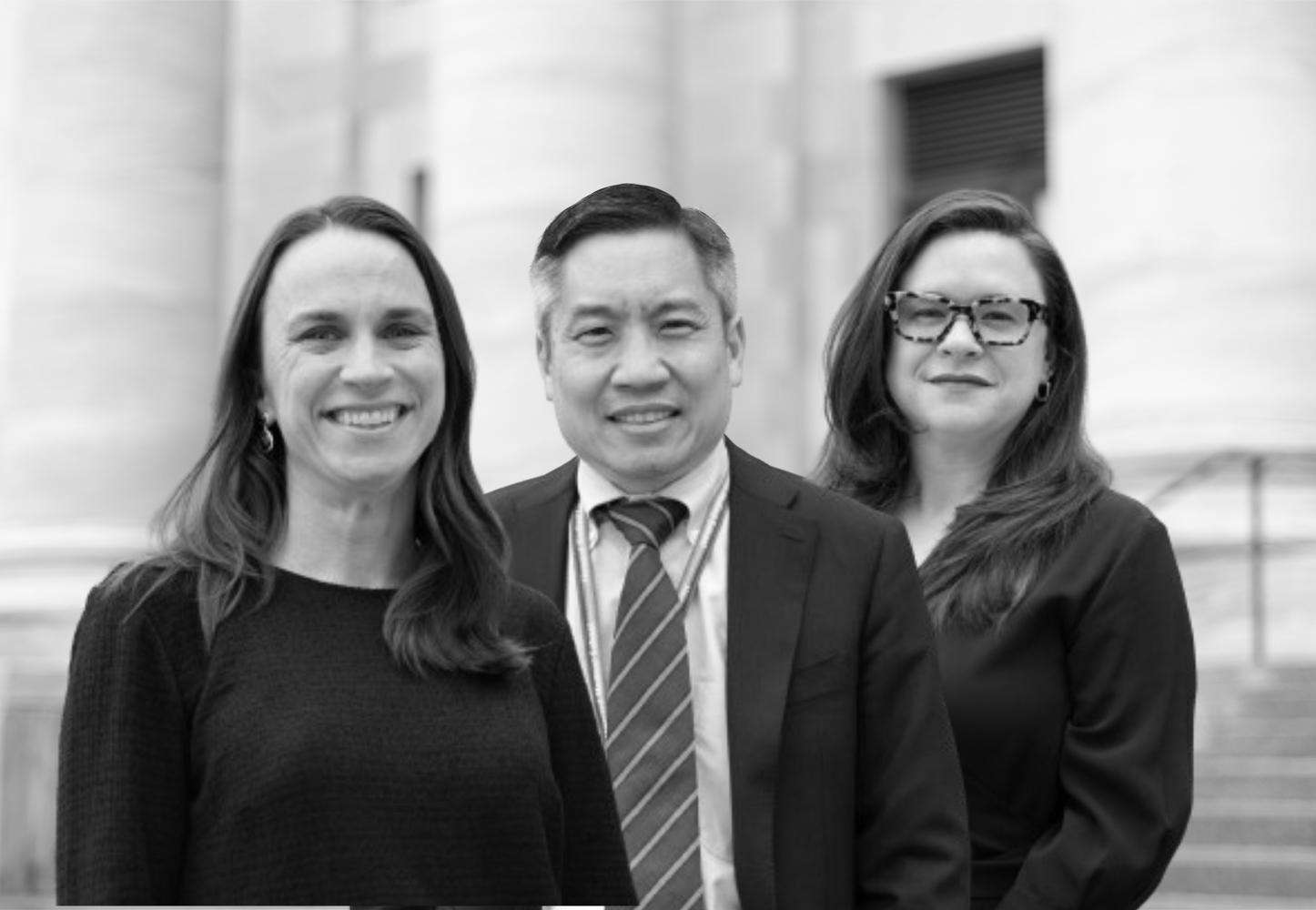
S. Chang ’93 said HMS has “strengthened our commitment to helping our students understand what they are getting into.”
During their first year, HMS students take IN 555: Introduction to the Profession — a weeklong class that emphasizes both the sacrifice that comes with being a doctor and the importance of maintaining one’s personal wellbeing — and PWY 120: Essentials of the Profession I, which covers topics including health policy and medical ethics.
Two years later, students take PWY 220: Essentials of the Profession II, a course that focuses on similar concepts with the addition of clinical experiences.
HMS also offers The Developing Physician, which is a longitudinal component of the first two and a half years that offers students the opportunity to reflect on challenging experiences — such as dealing with a patient’s death — alongside peers and a faculty facilitator.
Before graduation, students are also required to take PME 550: Clinical Capstone — a course designed to prepare them for internships.
Chang said these courses help students “process some of the emotionally traumatic things that happened as part of medical school to help make them more resilient — to help mitigate some of the things that lead to burnout.”
HMS Assistant Professor of Population Medicine and Essentials of the Profession course director Laura F. Garabedian wrote in an emailed statement to The Crimson that “physicians need to be prepared to ,make tough decisions with limited resources, and these decisions should be grounded in ethical principles, which we teach in the course.”
Chang said one of the key lessons from the pandemic for him was a reminder that “medicine is a profession of sacrifice — of selfless sacrifice.”
“It’s not our job to be able to remove all stress and remove all negative emotions,” Chang said. “It is our job to help our students understand and get better at how to react to these things that happen when you are in the healthcare profession.”
Some students have reacted positively to the HMS administration’s efforts to incorporate burnout education into the curriculum.
“That’s been a really nice space to think of those things and express those fears,” firstyear HMS student Ruhi Nayak ’23 said. “I think that the fact that other students also share those fears is honestly comforting.”
“The trainees coming out of here,” first-year HMS student Muhammad S.A. Abidi said, “I think we’re able to advocate for ourselves and our patients at the same time.”
veronica.paulus@thecrimson.com
Offered in students’ first year, IN 555 highlights the intellectual and ethical responsibilities physicians face. IN 555: INTRODUCTION TO THE PROFESSION
Preclinical years of medical school cover basic science training, where clinical years entail clinical rotations.
Taken as a first-year course, PWY 120 covers topics including health policy and medical ethics. PWY 120: ESSENTIALS OF THE PROFESSION I
The second course in the Essentials sequence, PWY 220 also incorporates students’ clinical experiences. PWY 220: ESSENTIALS OF THE PROFESSION II
PME 550: CLINICAL CAPSTONE
Offered at the end of the curriculum, PME 550 helps prepare students for internships.
DISPARITY. The Kennedy School is an outlier at Harvard, boasting more than double the University-wide percentage of international students. But in interviews with The Crimson, HKS affiliates raised concerns that the school’s curriculum, faculty, and financial aid programs have not kept pace with its growing international student population despite leadership efforts.
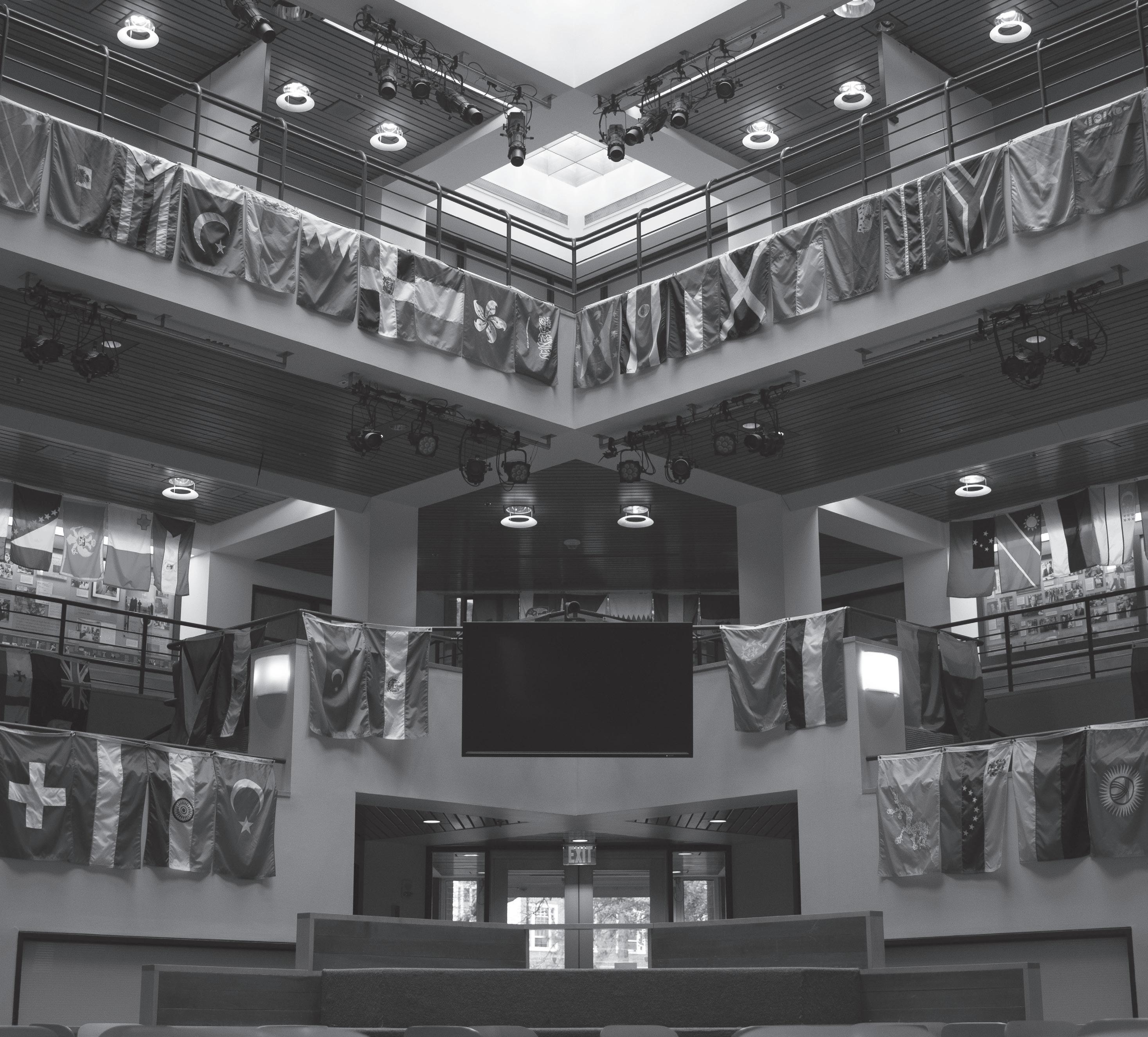 By WILLIAM C. MAO AND DHRUV T. PATEL CRIMSON STAFF WRITERS
By WILLIAM C. MAO AND DHRUV T. PATEL CRIMSON STAFF WRITERS
In 2004, just more than one-third of the Harvard Kennedy School’s student body identified as international. By 2023, that figure had skyrocketed to
56 percent.
At Harvard, the Kennedy School is an outlier. Only 27 percent of students come from abroad across the University, but HKS has more than double that amount — making the school the most international at Harvard.
With a student body that represents
84 foreign countries, it is a status that the school’s leadership likes to celebrate.
During a speech in 2022, outgoing HKS Dean Douglas W. Elmendorf called the “tremendous amount of international diversity” a “huge strength” of the school.
But in interviews with The Crimson, HKS affiliates raised concerns that the
school’s curriculum, faculty, and financial aid programs have not kept pace with its growing international student population despite some efforts from leadership.
“We feel that more can be done, more resources can be put in,” said Edmond B. Kombat, a master’s in public administration student from Ghana.
That change might start with Jeremy M. Weinstein, who will succeed Elmendorf on July 1. Weinstein, a Stanford political scientist whose research focuses on Africa, will be the first HKS dean with an academic background in international relations since 2004, when just 36 percent of the student body was international.
Several HKS affiliates said increasing support for international students should be a key priority for Weinstein’s tenure.
“I do hope that with the new dean, they will have a different perspective,” said Alvaro A. Morales Montenegro, a MPA student from Colombia.
During her first semester at HKS, master’s in public policy student Daniela Campos enrolled in her program’s mandatory “Race and Racism” course. The class was divided into two segments: the first focused explicitly on the United States, while the second allowed students to choose from four tracks — only one of which explored race on an international scale.
Campos — a Colombian student — petitioned to take the international option and was admitted into the course.
But many of her fellow international students were not as lucky.
“I know many international students, they didn’t get the chance to get into that one,” Campos said.
Campos acknowledged that teaching race in a U.S. context was important and added that the Kennedy School’s curricular focus on the U.S. was “not bad,” given the school is located in the country.
HKS spokesperson James F. Smith wrote that the school is “pleased by the increasing
number of our students who come from outside the United States.”
“This change has made the Kennedy School a more global community while also maintaining significant focus on U.S. policy challenges,” he added.
Still, several HKS affiliates said the Kennedy School should include more international perspectives in its curriculum.
“It’s not a zero-sum game,” Morales said. “You can also have more international perspectives, without having to remove the U.S. perspective.”
Smith wrote that the school is working to “strengthen the international scope” of the curriculum with courses on Latin America, Africa, the Middle East, and other regions.
The balance between U.S. and international perspectives varies widely across the four master’s programs at the school: the MPP, the MPA, the master’s in public administration and international development, and the mid-career MPA.
The MPP program — which requires students to take “Race and Racism” as part of its core curriculum — is considered to be more U.S. focused. On the other end, the MPA/ID program, which is nearly 90 percent international, has more courses focused on issues abroad.
Jeffrey A. Frankel — an HKS Economics professor who mostly teaches in the MPA/ ID program — said he has long focused on including international perspectives.
“I have steered more and more over time to developing countries for my examples,” Frankel said.
Several students said offering more international perspectives in courses is critical to reflect the Kennedy School’s growing population of students from abroad.
Bintu Zahara Sakor, a Norwegian vis-
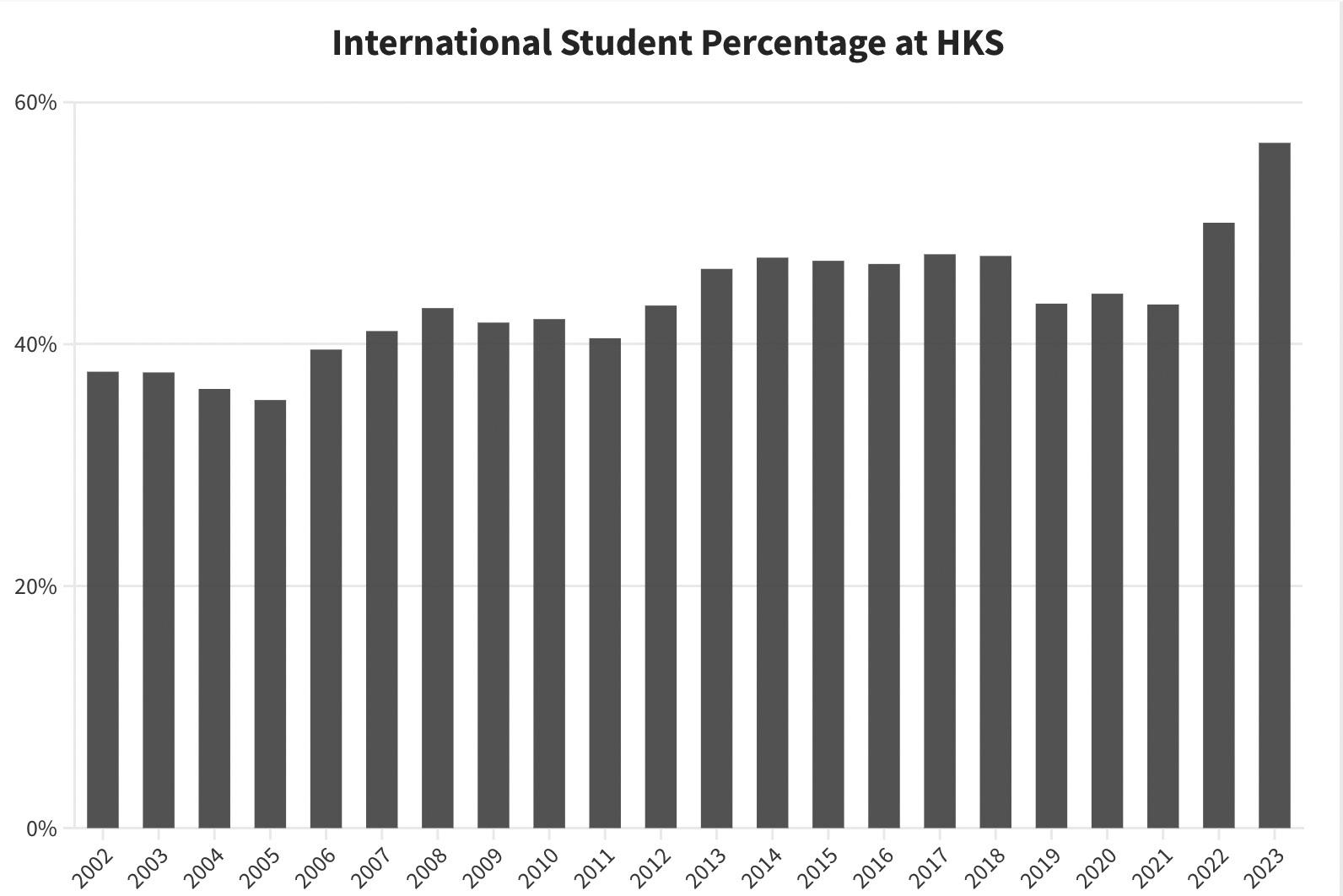
iting scholar at HKS, said that since more than half the school’s student body is international, “there’s a need to also reflect that in the courses.”
“It is very much U.S.-centric,” she said.
As a second-year MPA/ID student, Ruben Anzures has taken nine courses at HKS, taught by a range of faculty members.
But throughout his time at the Kennedy School, Anzures said he has only had one professor with an international background.
“Most of my class is international,” said Anzures, who hails from Mexico. “Yet, I think, in my experience, only one professor was international.”
At the Kennedy School, faculty from abroad comprise only a fraction of the school’s teaching body. In 2023, only 14 percent of HKS faculty members were international — a five-year low.
Several students called for more professors from abroad to reflect the school’s student body. Boris Houenou, an MPA student in the Africa Caucus, said that for an institution that portrays itself as a global school, “that tiny, insignificant number of faculty members is not representative at all.”
Compared to many peer institutions, though, the Kennedy School has proportionally the same or more international faculty members.
At Columbia University’s School of International and Public Affairs, the faculty is only 8 percent international. The faculty at Yale’s Jackson School of Public Affairs is 9 percent international.
HKS Academic Dean David J. Deming, who oversees faculty hiring in his role,
wrote in a statement that the school hired 10 new faculty “with international experience” in the last three years.
“We know that making our distinguished faculty more internationally focused is important to meet the changing needs of our student body,” he wrote.
Still, many students expressed hope for more international faculty members, saying that professors from abroad could better teach about their countries’ issues.
Pragun Aggarwal, the Kennedy School Student Government’s vice president of international students, said that when American faculty lead discussions about international issues, the conversations can lack “regional and local nuance, which is so very important.”
Hong Qu, an HKS adjunct lecturer, also said in-person regional knowledge is critical.
“Just presenting material doesn’t really allow for a global or international perspective, especially since many of the students can have more first-hand knowledge of those other countries,” he said.
For many at HKS, the challenge of being a student from abroad starts months before they first arrive on campus.
Morales said the school’s financial aid offerings are “really bad” for international students in particular.
“I have to work here at Harvard, and I’m also working but back home,” Morales said. “Two jobs just to pay rent here.”
An overwhelming majority of international students — 91 percent — said they applied for financial aid, according to a KSSG survey in January 2024. However, only 47
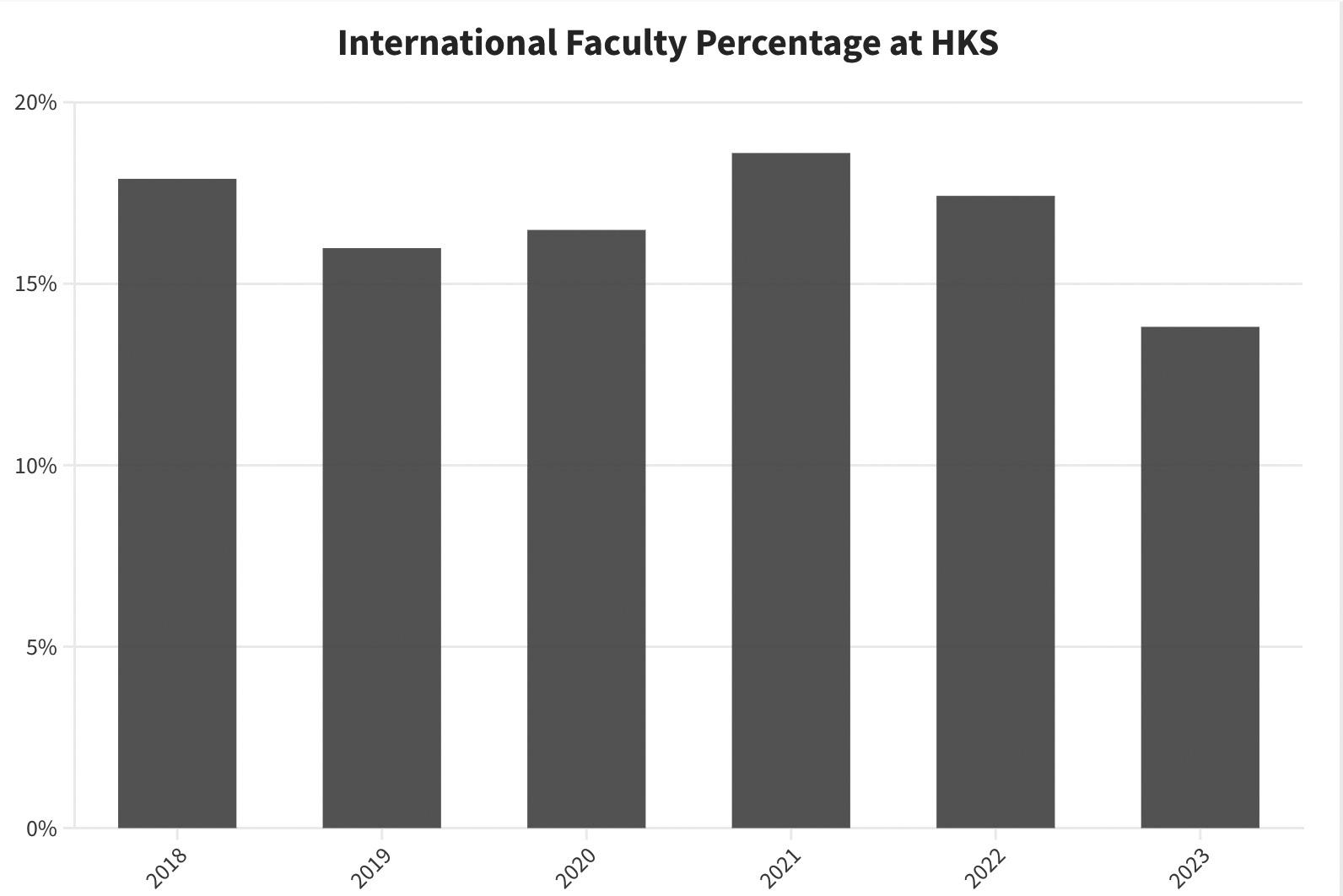

percent of those students ultimately received aid from HKS.
At the Kennedy School, only one-third of the funding for aid can consider a student’s financial need, with the rest distributed based on merit and donor terms.
While Smith wrote that HKS has “significantly increased” need-based aid, several international students said the process remains complicated and less generous than peer institutions.
Aishwarya Singh, a MPP student from India, said financial aid at HKS is particularly confusing for international students.
“Once you say fellowships, those concepts don’t exist if you’re in India,” she said.
Ahmad Mustafa, a MPA student from Pakistan, added that the school’s financial aid application — which is separate from the admission application — was more convoluted than at peer schools.
“You have to submit a bunch of other essays,” Mustafa said. “Students need to be more aware of how much time to allocate
compared to other peers schools.”
Smith wrote that HKS is “currently working on simplifying the aid application process and communicating the options more clearly.”
without a cosigner and $50,000 with one, compared to $65,000 for domestic students.
Ujjwal Kumar, a KSSG representative from India who has paid nearly $115,000 this year to attend HKS, said finding a co-signer
It’s not a zero-sum game. You can also have more international perspectives, without having to remove the U.S. perspective.
Several international students at HKS said they obtained loans from the Harvard University Employee Credits Union to offset tuition fees. However, HUECU caps loans for international HKS students at $20,000
is difficult for many international students.
Several students said the Kennedy School’s less generous financial aid offerings discouraged several fellow admits from enrolling in the school.
“I know about eight students also who couldn’t come because they couldn’t finance it,” Kombat, the MPA student from Ghana, said.
While many peer institutions also primarily offer merit-based aid, several students said friends attended other schools since they still offered more aid than HKS.
As Weinstein assumes the Kennedy School’s top post, HKS affiliates were hopeful that he could bring constructive change to better support the growing international student population.
“He will be well equipped, at least better equipped, than maybe the former administration to be able to deliver that,” Houenou said.
“I’m very hopeful that we’re getting someone who has that exposure — that global exposure,” he added. “Let’s hope that that also translates into more initiative.”

2023-24. The Crimson looks back at the academic year in photos, from the inauguration of Claudine Gay as Harvard’s 30th president to the Israel-Hamas war that divided campus and ignited a leadership crisis.
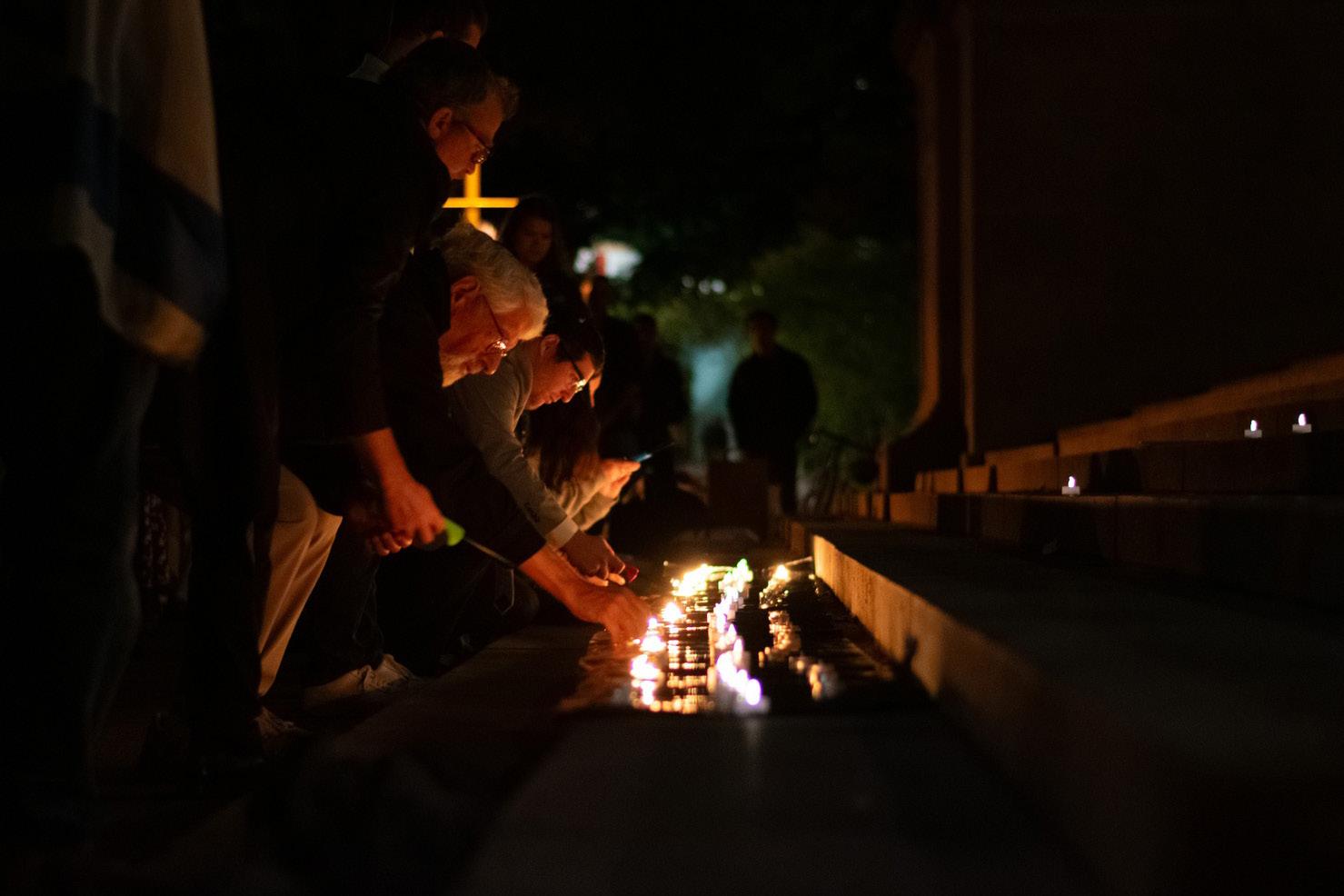

INAUGURATION OF CLAUDINE GAY September 2023
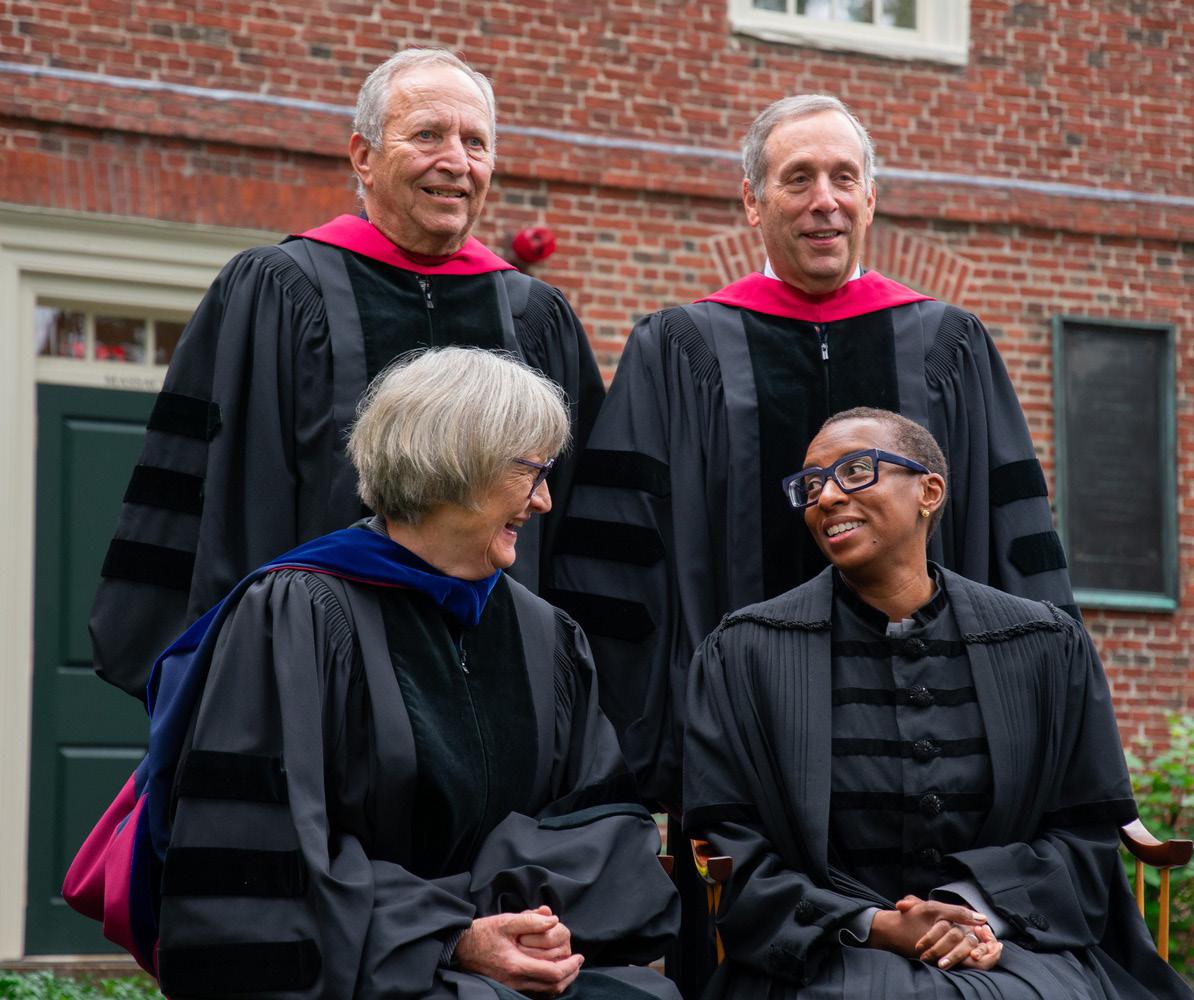
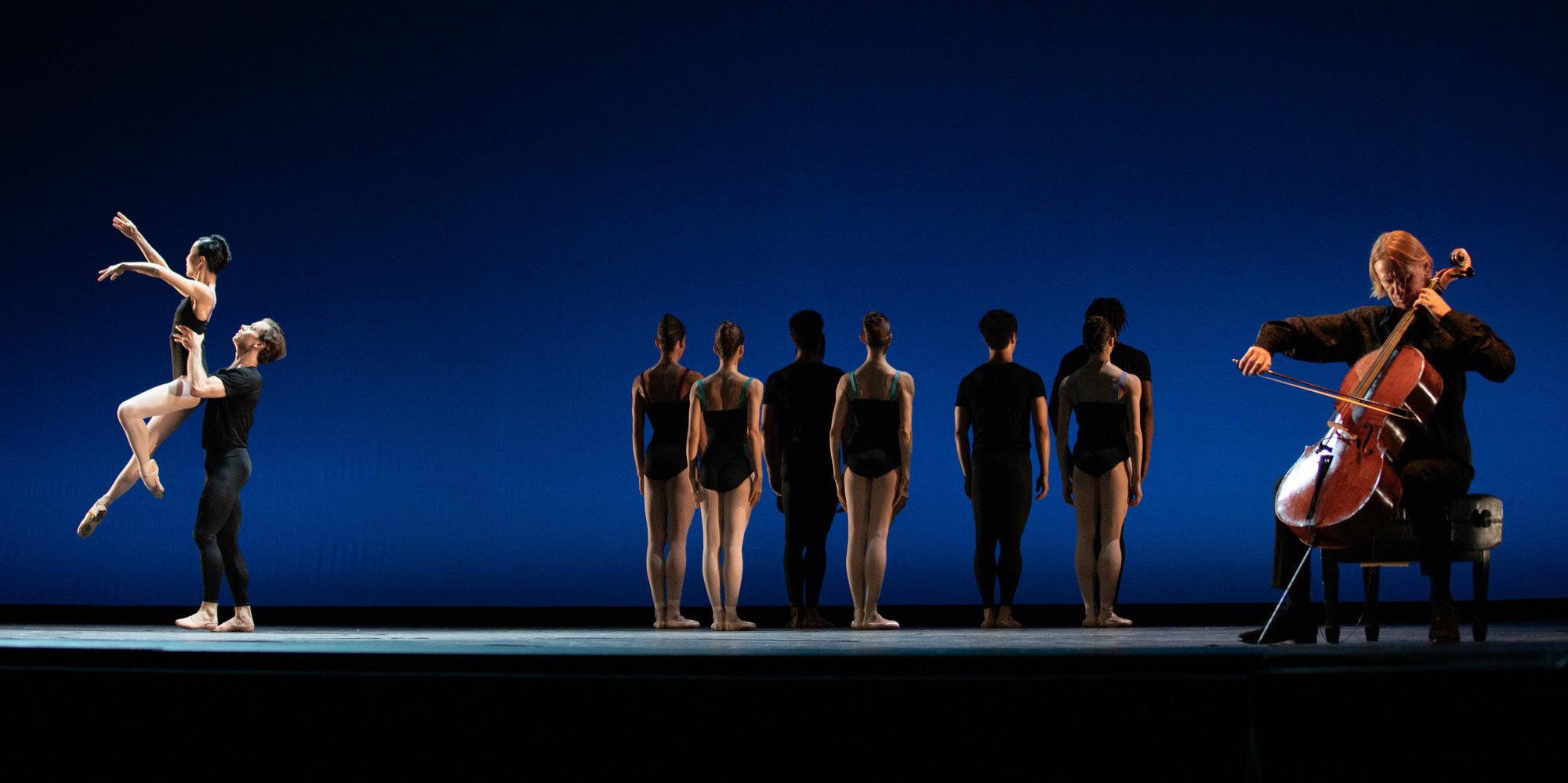
BOSTON BALLET’S FALL EXPERIENCE October 2023

STUDENTS RALLY FOR PALESTINE October 2023
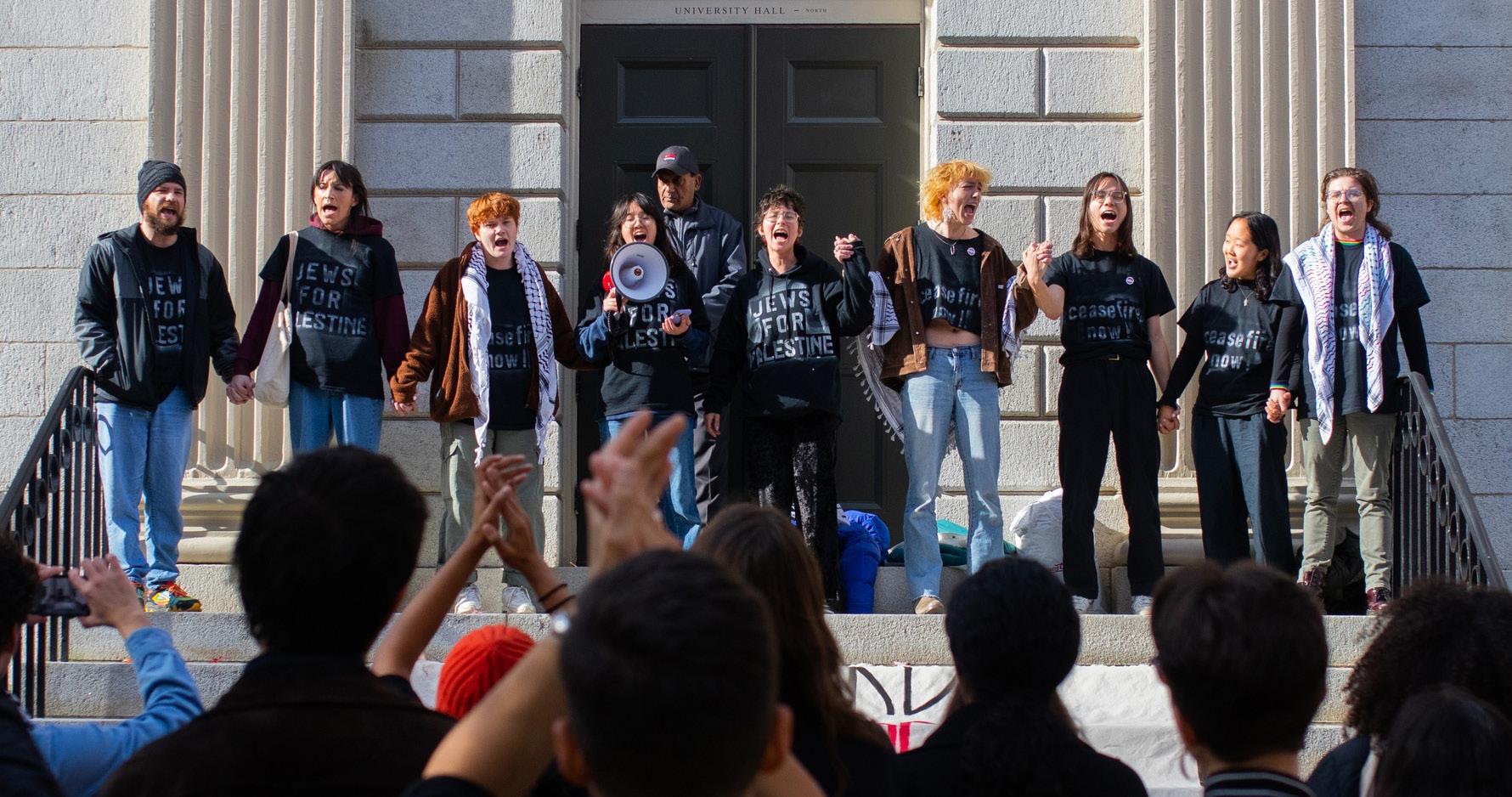
STUDENTS OCCUPY UNIVERSITY HALL November 2023

October 2023

PLANTING A MIYAWAKI GARDEN November 2023

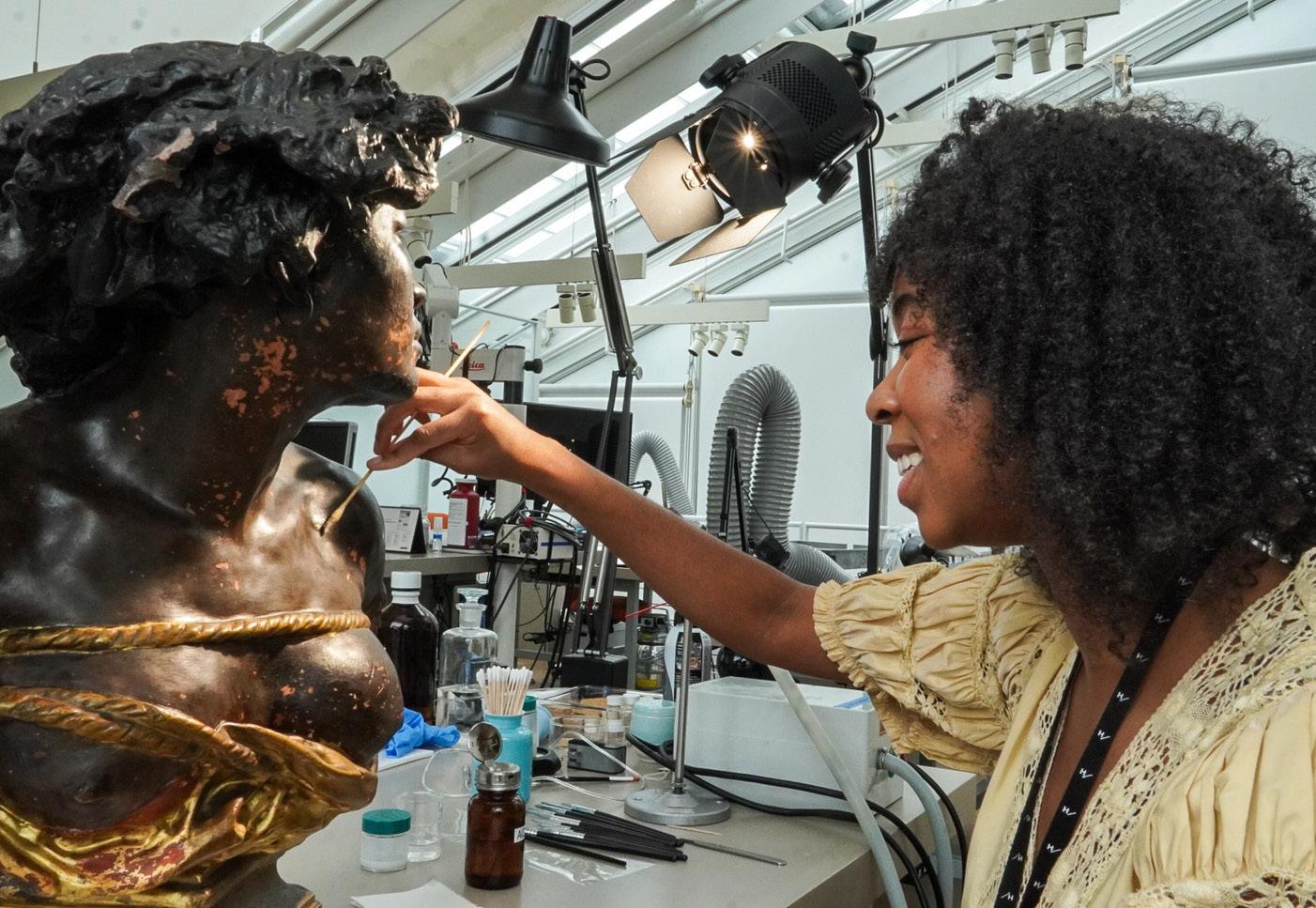

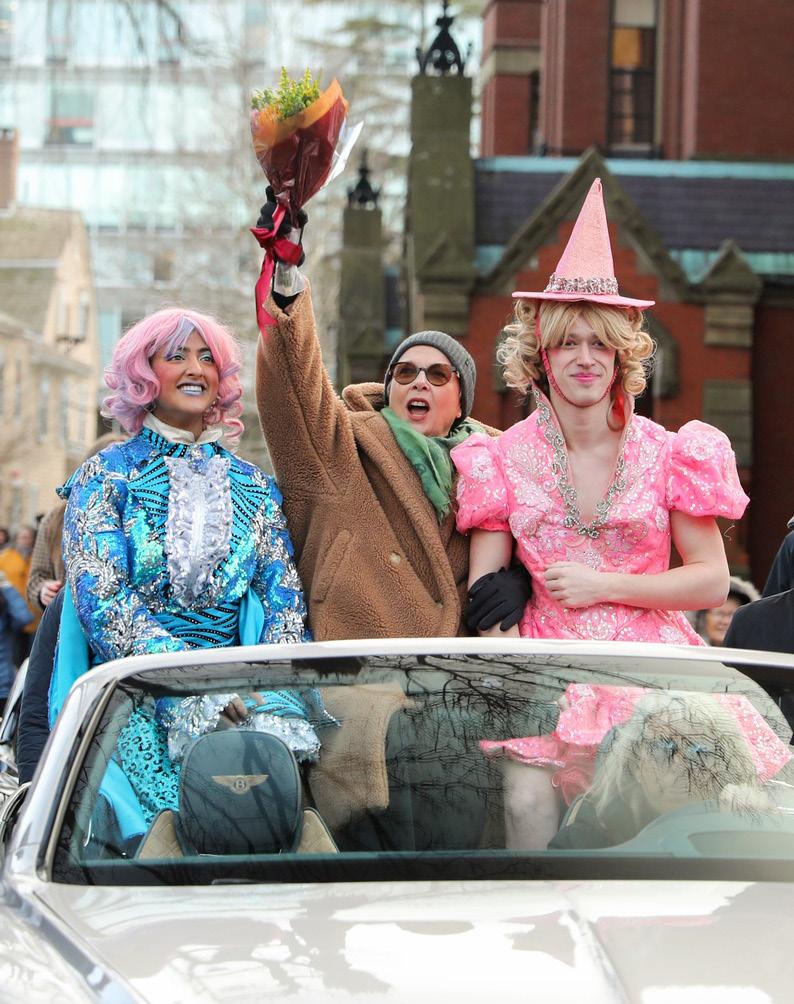



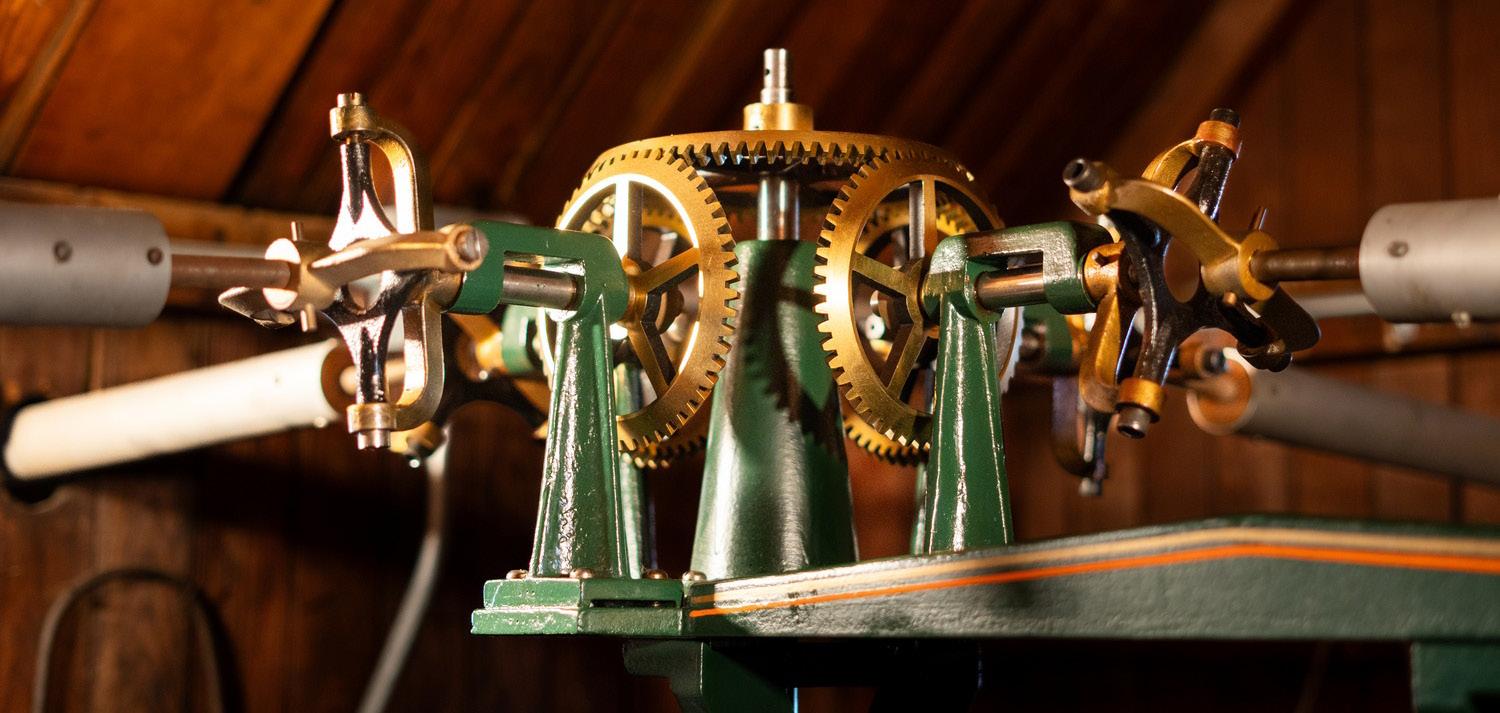
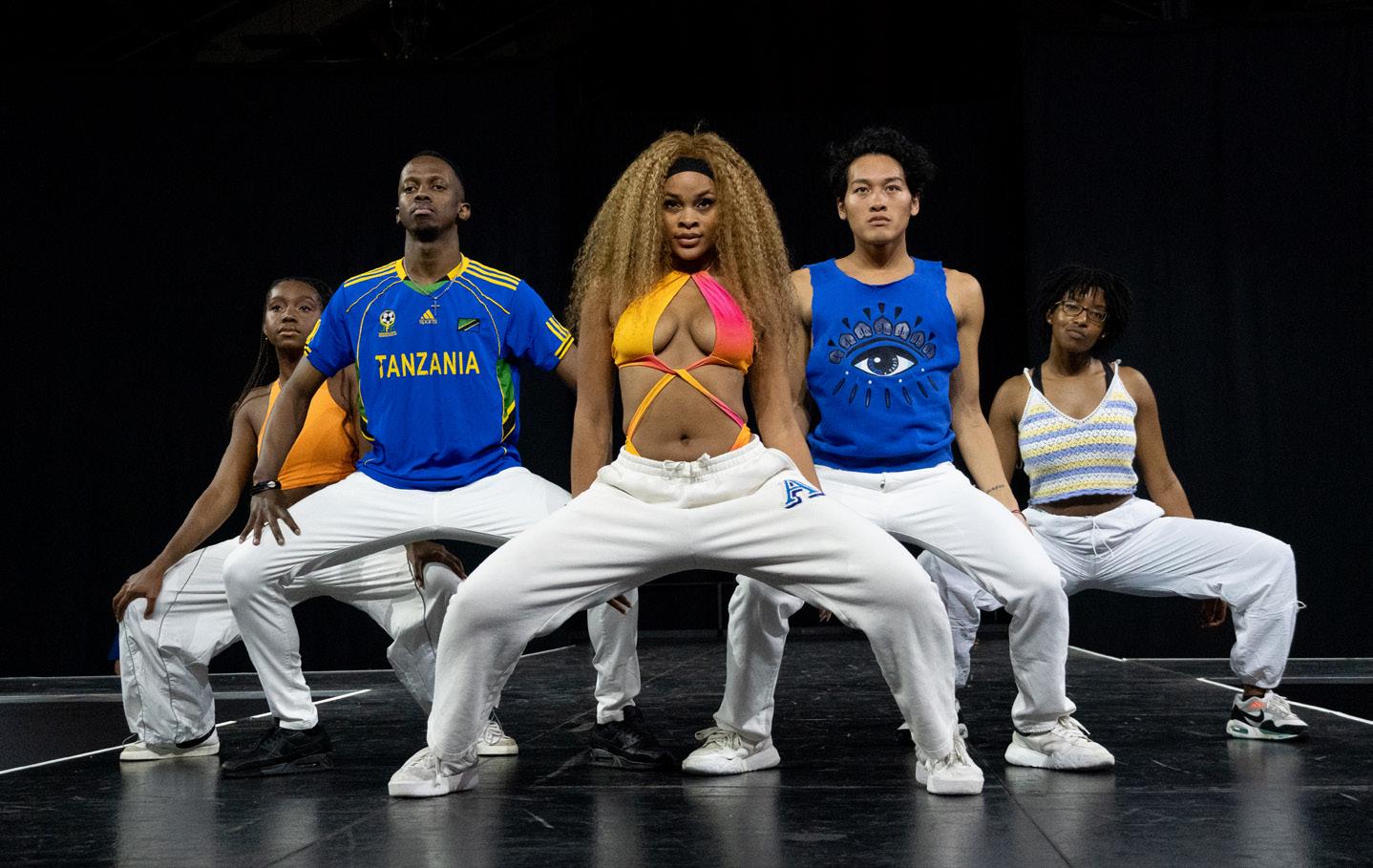
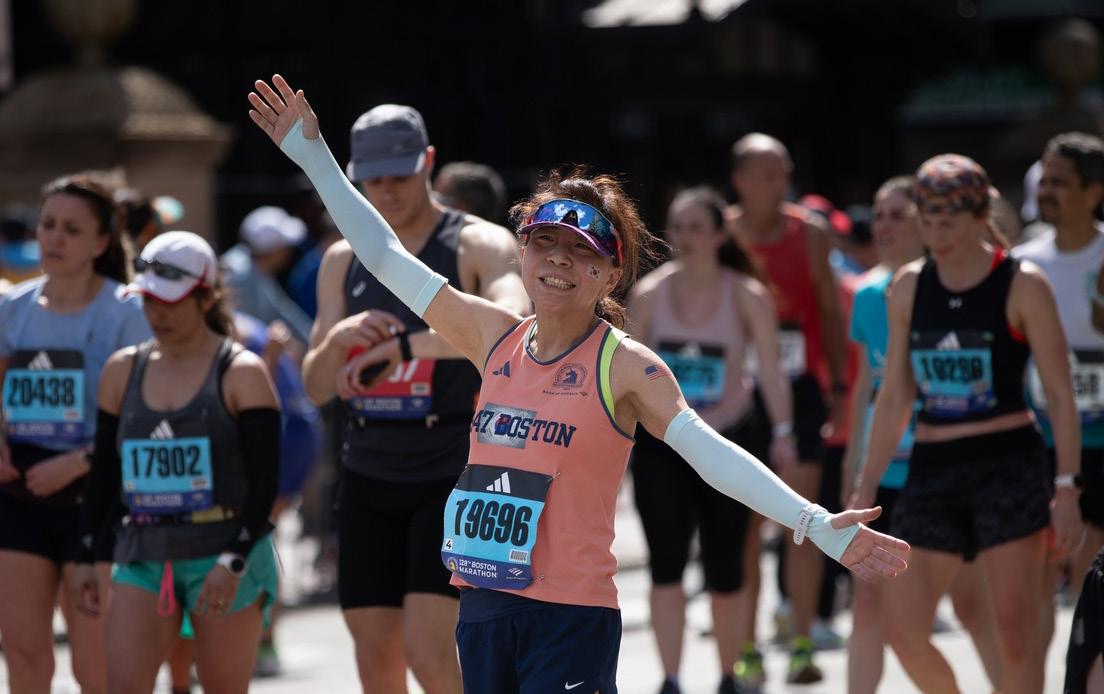


EDUCATION. Facing a longstanding racial achievement gap — and as the district moves to ensure equal education for all — Cambridge is in a broad statewide debate about reading standards, mandating curricula, and teacher and school autonomy.
 By EMILY T. SCHWARTZ CRIMSON STAFF WRITER
By EMILY T. SCHWARTZ CRIMSON STAFF WRITER
For G. Caitlin O’Donnell, a first grade teacher at Fletcher Maynard Academy, Cambridge Public Schools’ new, aligned English Language Arts curriculum will be the “biggest shift” in curriculum in her seventeen years teaching in the district.
The new ELA curriculum — titled Amplify CKLA and set to be implemented next fall — will align the ELA curriculum across Cambridge’s 12 elementary schools for the first time ever.
Amplify CKLA is the final piece in the district’s efforts to align curricula across grades one through 12. The district has already aligned the ELA curriculum for students in grades six through eight and the math cur-
riculum for all students beginning in kindergarten.
The attempts at curriculum alignment comes as CPS tries to address longstanding — and widening — racial and socioeconomic achievement gaps.
MCAS testing data revealed that only 36 percent of Black students met or exceeded third grade ELA standards in 2023, compared to 79 percent of their white peers. The 43 point difference is stark, but not new; in 2019, the gap amounted to 37 points.
Only 44 percent of high-need third-graders — qualified as low-income, English Language Learners, or students on Individualized Education Plans — met or exceeded proficiency standards on the 2023 ELA MCAS, compared to the 78 percent of their non-low income and 76 percent of their nondisabled peers who met these standards.
As the district takes broad steps toward ensuring students receive equal instruction, Cambridge has found itself in a greater statewide debate about reading standards, mandating curricula, and teacher and school autonomy.
Cambridge’s elementary schools boast distinct programs — such as a specialized music program at Haggerty, two-way Spanish immersion at Amigos, and a “looped” classroom model at Cambridgeport — and the district’s “controlled-choice” kindergarten lottery allows families to request their top three choices.
Until this year, the elementary schools lacked a standard, comprehensive ELA cur-
riculum, leaving teachers to seek out course materials themselves. O’Donnell likens the district to an “archipelago.”
This differentiation was intentional, according to former Graham & Parks Elementary School teacher Kathy E. Greeley.
“Recently, it’s been like, ‘Oh, our schools are all over the place. They’re all doing all these different things. And it’s such chaos,’” Greeley said. “No, that was actually the design was for different schools to try different things, to offer different kinds of programs.”
But MCAS results illustrate achievement gaps between the elementary schools, with only 35 percent of third graders at the Fletcher Maynard Academy meeting or exceeding ELA standards, compared to 89 percent of third graders at the King School reaching these standards.
According to Cambridge School Com-

mittee member Richard Harding, Jr., the results are a clear sign of failure.
“If you want to perpetuate a system of failure, you keep doing what you’re doing,” Harding said.
“I’ve yet to see where autonomy in instruction has worked for Black and brown kids in a public school setting,” he said.
The district’s effort to reevaluate and shift to an aligned curriculum under ELA Department Director Emily A. Bryan takes a new approach through standardization — while centering educator perspectives.
After two years of planning, last fall Bryan convened a “Literacy Curriculum Review Team” of nearly 40 educators, including representatives from every elementary school, to decide on changes to the curriculum. In January, they chose Amplify CKLA.
O’Donnell, who served on the team, said it garnered some of the highest levels of educator feedback she has seen.
And she said schools naturally shifted towards aligning curricula during the Covid-19 pandemic. In the absence of district- or state-provided curricula that could be adapted to remote learning, teachers from almost every elementary school worked together to fill the gaps, she said.
To concerns that aligning curriculum would strip schools of the individuality they are so lauded for, Bryan said that curricula
alignment does not mean classrooms or schools are “exact replica duplicates of one another.”
“It means that every student is exposed to the same critical components,” she said.
When the committee first began to consider Amplify CKLA, O’Donnell said she was “very reluctant to embrace this curriculum initially, because I had a lot of preconceptions about it.”
But when she dove into the new materials, she saw the curriculum’s potential.
Amplify CKLA provides teachers with core materials for two blocks of learning: “knowledge” which targets vocabulary and text analysis, and “skills” which target phonics, fluency, and reading comprehension.
During her presentation at a March 5 School Committee meeting, Bryan described the curriculum’s structure, which plans lessons out in 10-minute blocks and gives educators a “menu of options” for how to support their students — a substantial departure from the free reign teachers previously enjoyed
“As long as we knew how to read a book and ask questions and have good discussion, then it didn’t matter what book I was using,” O’Donnell said. “But I don’t think I served stu-

dents who were struggling readers as well as I do now.”
“It’s really hard now, honestly, to look back on all my years of teaching and feel so frustrated with myself, or disappointed,” she added.
CPS Chief of Academics and Schools Lendozia H. Edwards said that the standard materials will help teachers save time because now, “they don’t have to look for what to teach.”
O’Donnell acknowledged that the transition may be “painful” for educators who are used to having autonomy over their lessons. But she said she hopes her colleagues will see the benefits of an aligned curriculum, which still allows teachers some space to personalize their lessons with “pausing points” that Bryan has built into units.
“The new curriculum will be hard,” O’Donnell said. “I’m sure I personally am going to struggle a lot. But I’m here for it, because I think it’s going to be better in the long run. And ultimately, it will certainly be better for students, but I think it will actually make my life easier.”
Although it was years in the making, Cambridge’s move towards an aligned ELA curriculum comes amid a raging, statewide
debate in response to troubling literacy rates among third graders across Massachusetts.
According to The Boston Globe, rates of third grade literacy have reached record lows, especially exacerbated by the pandemic and showing a large racial disparity.
The Globe found that nearly half of school districts — including Cambridge — used curriculum considered “low quality” by the education department and national curricula rating systems in the 2022-2023 school year.
The state has not enacted literacy reform acts in response, as 30 other states have, and only some municipalities — Cambridge among them — have taken action this year to adopt a new ELA curriculum.
Calls from state legislators for a mandated statewide curriculum in order to close achievement gaps has encountered objections from teachers’ unions questioning whether it is in the state’s purview to mandate specific reading curricula for districts.
In February, 300 Massachusetts education professionals signed a letter opposing the mandated curricula, calling the bill a “one-size-fits-all approach” and warning that imposing mandated curricula across districts may “permanently damage” a child’s ability and will to learn to read.
Paul Reville, a professor at Harvard’s
Met with 200 staff, conducted surveys, and reviewed twenty years of literacy data and family and student surveys to identify the top 5 trends, one of which was a lack of consistent, aligned, quality instructional materials. Solicited feedback from the School Committee, district principals and educators, before creating a multiyear plan, which involves identifying new curriculum.
The group of educators, coaches, and school leaders representing every elementary school established guardrails, processes, and goals for curriculum review, over a year-long discussion and professional development program.
LETRS Training is made available to elementary educators. The course trained educators on core “science of reading” principles.
A group of nearly 40 educators from across disciplines — including the social studies and science directors, staff from the Office of Multilingual Learners, special educators, and elementary school teachers — convened to discuss potential curriculum choices and reach consensus on one.
Curriculum Review Team reached consensus on the Amplify CKLA curriculum.

Graduate School of Education who previously served as the Massachusetts secretary of education, said that though he generally approaches standardized curricula with “some caution,” chronic underperformance necessitates the change.
“It may well be the role of policymakers to start prescribing the ‘how,’ if educators have not been able to get to the ‘what’ on their own,” he said. “We better get an evidence-based approach, get everybody trained in how to use this approach, and then insist on that approach, in order to get the kind of results that parents and the community expect us to get for the children.”
Tightening control over districts with chronic levels of underachievement, however, is not necessarily the way to go, said Jennifer P. Cheatham, a lecturer on education at HGSE with experience as a superintendent.
“The schools that have done, in my experience, the best job transforming themselves to meet the needs of students positioned furthest from opportunity are schools that have developed a deeply collaborative culture where everyone has agency where we’re making decisions together,” she said. “You just can’t mandate your way to transformation.”
Bryan’s approach has continually solicited both educator and caregiver feedback. This spring, she held parent information sessions over Zoom, visited School Council meetings

at elementary schools, and in the fall, she held “open advisory sessions” for any educator to attend.
Kate L. McGovern, whose child attends King-Open, left a parent information session feeling confident in district officials, who seemed “well-informed” about the new curriculum. The choice of Amplify CKLA hit the “jackpot,” for her, as she already had great experiences with the curriculum in her work for an educational non-profit. Still, not all parents are informed. In email exchanges and conversations at dismissal, many had not heard about the curriculum change or did not feel informed enough to speak on it.
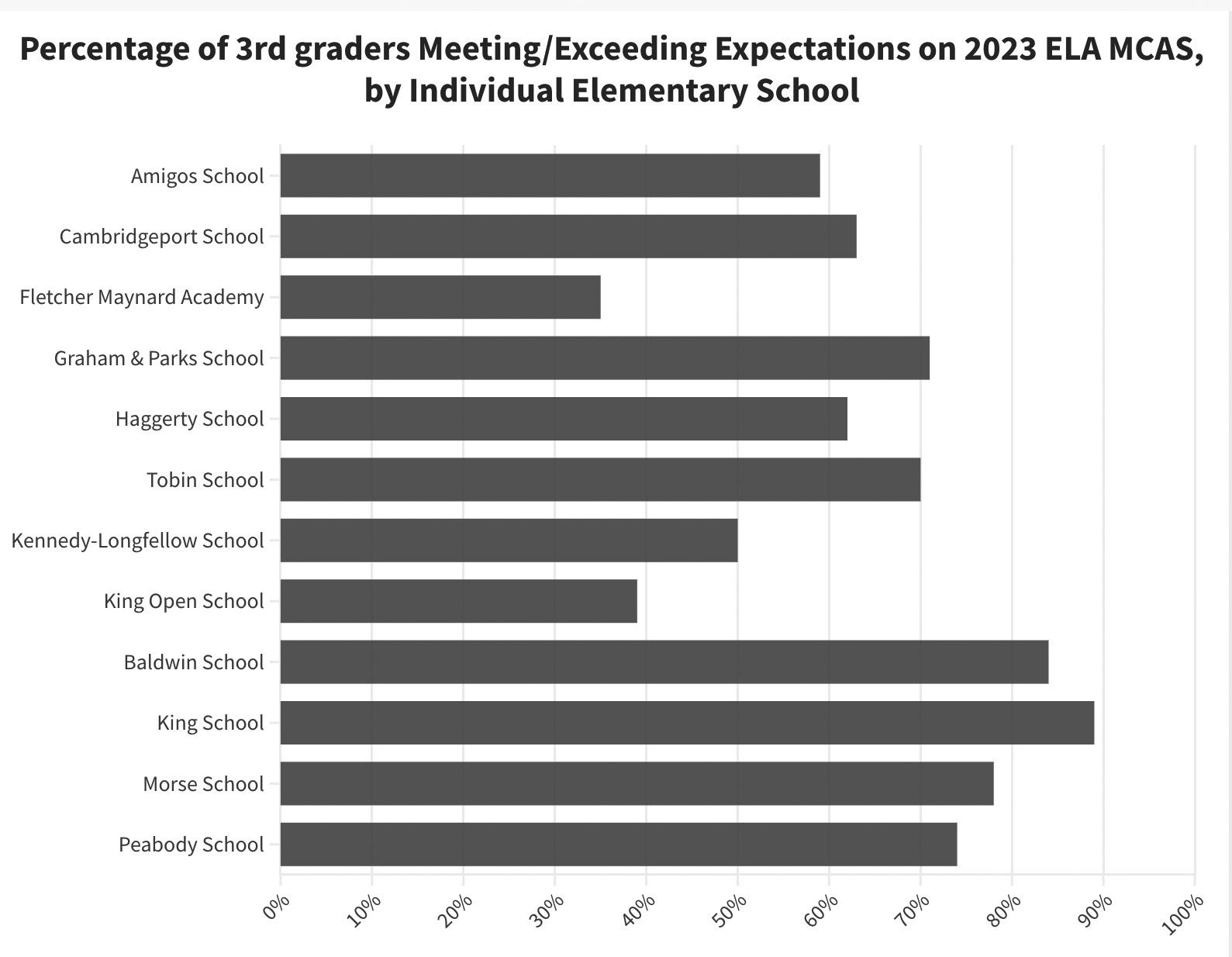
At the March 5 meeting, Bryan acknowledged that communication with families has been hindered because teachers — often the most effective communicators — have not yet been trained in the curriculum.
“I hope that the district is going to continue doing more of that educating of families,” McGovern said. “So that families can really be partners in supporting their kids at home because I think that partnership is really essential to closing those gaps that we see year after year.”
Although she lacks familiarity with the curriculum, Jade C. Gardner, a parent at Haggerty Elementary School, said that she hoped it would still support students with learning disabilities, like her child.
“I just hope that everything works out and it works best for the kids,” she said.
emily.schwartz@thecrimson.com
A survey of educators found that 86% preferred to adopt the new curriculum in Fall 2024.
Curriculum and review process presented to the School Committee.
Parent engagement begins. Emily Bryan and her team attended School Council meetings at elementary schools and held informational meetings over Zoom to inform parents of the new curriculum.
City Council passes city budget. The budget includes the school budget’s incorporation of $1 for curriculum implementation.
Educators begin curriculum training.
Curriculum is implemented for the new school year. Sept. 2024

RODENT ROOMMATES. Some students say they’ve grown accustomed to living with rodents and the occasional maintenance problem in aging upperclassmen Houses. But for others, housing problems raise broader concerns about how run-down living spaces may detract from quality of life at Harvard.
Alden C. Codding ’27 said that when the doorknob on the inside of her bedroom door in Straus Hall stopped working, she and her roommate found themselves locked inside their room.
Codding called the entrapment, which required outside assistance to free them, a “huge fire hazard.” Yard Ops — responsible for maintenance of more than 40 Faculty of Arts and Sciences buildings and freshman dorms — fixed the doorknob three weeks later, only for it to break “within the hour,” leading to Codding and her suitemate becoming trapped in the room for a second time.
Codding’s experience reflects just one of the growing body of student complaints about the state of housing at Harvard.
Harvard’s undergraduate housing options — the freshmen dorms in Harvard Yard, 12 upperclassmen Houses, and a co-op at Dudley Community — create “vibrant, unique, and supportive communities” for the vast majority of students who live on-campus, according to the College’s Dean of Students Office website.
But student frustrations with Harvard housing range from pest and maintenance issues to concerns about overcrowding and
accessibility even in the College’s renovated living spaces.
“I can’t even count how many times we’ve seen them,” Sarah L. Cho ’27 said of mice in her dorm. “I, myself, in my own single within the suite have caught five.”
Though six of the Houses have undergone full or partial renovations as part of Harvard’s more than $1 billion House Renewal project, half of the College’s houses remain in a state of disrepair. The freshmen dorms in the Yard are in a similar state, and no plan exists for their renovation.
“We recognize that housing matters can be stressful for some students and coordinate across departments to support the many components of the residential communities to address issues,” Harvard College spokesperson Jonathan Palumbo wrote in an emailed statement to The Crimson.
In interviews with The Crimson, more than 20 students spoke about the state of Harvard’s undergraduate dorms. Some say they’ve grown accustomed to living with rodents and the occasional maintenance problem in dilapidated Houses. But for others, housing problems raise broader concerns about how run-down living spaces may detract from quality of life at Harvard.
‘A DIY THING’
Rodents like mice and rats — common in the City of Cambridge — are no stranger to Harvard’s campus buildings and dormitories. Students have continually found ways to manage infestations, sometimes foregoing a call to Yard Ops and instead opting to take matters into their own hands.
Sungjoo Yoon ’27 said he and his roommates nicknamed one of the mice in his Straus Hall dorm “Stuart Little” following a number of unsuccessful attempts to trap the intruder.
“We tried literally everything,” Yoon said. “And at some point, we were just like, I guess we live with these critters and it’s fine.
Luke R. Calamita ’24, recalled his time as a freshman in Stoughton Hall, where he once “caught a mouse literally every day for eight days straight.”
Calamita added that mouse traps installed by Yard Ops were unhelpful, saying that he made baiting, trapping, and disposing of mice “a DIY thing.”
Frequent rodent sightings are not unique to the freshman dorms in the Yard. Sanjana Singh ’26, who lives in Kirkland House, said she has gotten used to seeing pests in house common spaces.
Singh added that she has dealt with recurring maintenance issues in her room, including a defunct heater that required multiple visits from maintenance workers

to restore her room’s heat during the winter.
“They couldn’t figure out what was going on,” Singh said. “Eventually, it did end up working but definitely didn’t seem like it was functioning at its highest ability.”
“Ensuring a clean and healthy living space for students and working area for staff is always a priority,” Palumbo, the College spokesperson, wrote. “The University takes several steps to mitigate pest issues, including the assignment of pest control and custodial crews making regular visits and treating points of entry.”
Kirkland, which was completed in 1931, is one of six Houses that has not undergone renovations under House Renewal.
“There are some parts of the House that kind of look like it’s kind of falling apart — there’s a lot of holes in the walls, like, in the rooms,” Singh said.
Aside from rodents, Yoon found himself dealing with both a burst pipe and a faulty window that had “been built incorrectly.” The leaky pipe resulted in a liquid with a “really funny” smell dripping from his bathroom ceiling, while the window — which does not close properly — led to Yoon returning from winter break to “a mound of snow” on his bed.
Yoon said Yard Ops was unable to fix the window until summer, and instead advised him to move his bed elsewhere in the room.
“We ended up just stuffing the window with a bunch of paper towels,” Yoon said. “It sounds bad, but you deal with it.”
For some students, the shortcomings of Harvard’s housing are better characterized by a failure to support those requiring accommodations and accessibility.
Emma M. Vrabel ’25 said she “loves” living in Lowell House — where renovations were completed in 2019 — but added that Harvard’s undergraduate housing falls short of her expectations since “it’s not accessible to most people.”
Vrabel cited an insufficient number of automatic door openers, elevators that don’t access every floor of some buildings, and a bike ramp in Kirkland that she says is too steep for wheelchair users as examples of where Harvard lacks accessibility.
“Every House renewal renovation meets or exceeds the most stringent of the relevant accessibility codes,” Palumbo wrote in the statement. “The university has been working expeditiously and methodically to renovate each of the Houses. If a student has a challenge, they should report it right away to their Building Manager or Resident
Dean.”
Harvard’s Disability Access Office is responsible for ensuring accessibility and individual accommodations for students, who can request living accommodations to meet their accessibility needs.
Still, Vrabel sees room for improvement.
“I don’t think the timeline for renovations reflects the urgency of creating that sort of accessibility,” she said.
Other students said Harvard housing sometimes fails to provide for individualized accessibility needs and accommodations.
Fable J. Perkins ’27, who lived in gender-inclusive housing this past academic year, said the dorm’s gendered restrooms forced them and their suitemates to use the restroom that aligned with the gender they were assigned at birth.
“That was definitely the one place that I was more consistently misgendered,” Perkins added.
Palumbo wrote that the College affirms
that “every student should see and feel that they belong at Harvard, and we work with our students to understand the best approach, guided by what they identify as their needs.”
The experiences of students with disabilities — it’s just not something that Harvard kept in mind when building this place.
Eunice
S. Chon ’25-’26 President, Harvard Undergraduate Disability Justice ClubEunice S. Chon ’25-’26, the co-advocacy chair of the Harvard Undergraduate Disability Justice Club, is working with the DSO to address accessibility concerns. In February, she helped organize a forum where students could discuss their concerns about residential and sensory accommodations with administrators.

Chon said the DSO is working with HUDJ, but acknowledged limitations due to “the nature of the old buildings.”
“The experiences of students with disabilities — it’s just not something that Harvard kept in mind when building this place,” she added.
Despite many students’ frustrations with their dorm’s state of disrepair or lack of accommodations, most were intent on making the most of House life during their time at Harvard.
Codding said a “really wonderful thing” has been living with people she “learned a lot from and definitely grown with.” She added that the House system is “super cool,” and said she’s ready to be more involved in house life after moving from the Yard to the recently renovated Dunster House.
But for others, House Renewal threatens to disrupt House life. The ongoing renovation of Adams House has pushed many of its residents into overflow housing at The Inn at Harvard. In February, Harvard announced that the initial plans for a renovation of Eliot House are underway.
“I’m going to be in overflow housing junior and senior year as a result of Eliot House renovations, which isn’t the worst thing in the world,” Ari C. Desai ’27 said. “But it would be fun to get to live in Eliot for the rest of my time at Harvard”
Chon, a Kirkland resident who was pushed into overflow housing at the Prescotts this past year, said she felt isolated from the rest of her classmates living in Kirkland.
“You’re not going to get a sense of community when you live in swing housing,” Chon said.
Many students come together to commiserate over Harvard’s imperfect dorm life. Codding said that she “clicked well” with her randomly assigned suitemates.
“I had a very close-to-ideal situation in terms of the three people that I spent so much time with,” she said.
Yoon said he’s “appreciative” of what Harvard’s housing offers despite the maintenance and rodent issues he’s had to deal with.
“I’ve lived in so many worse places in my life. It really isn’t the end of the world to have to take a cold shower in the morning and for a pipe to burst,” he said.
michelle.amponsah@thecrimson.com madeleine.hung@thecrimson.com
Harvard’s House Renewal project was first planned in 2008. Initial plans envisioned each House being renovated for 15 months within an overall 12-year timeline, from 2011 to 2023.
However, the project has significantly exceeded its original timeline and budget. Only 5 full or partial renovations — in Quincy, Leverett, Dunster, Winthrop, and Lowell Houses — have been completed to date, with renovations of Adams House still ongoing. Construction on Eliot House is scheduled to begin in 2025.
PARTIAL RENOVATIONS (“TEST PROJECTS”):
Quincy House, Stone Hall 2012 - 2013 (15 months)
Leverett House, McKinlock Hall 2013 - 2014 (15 months)
FULL RENOVATIONS:
Dunster House 2014 - 2015 (15 months)
Winthrop House 2016 - 2017 (14 months)
Lowell House 2017-2019 (2 years)
Adams House 2019 - Present (5 month pause in 2020, currently over 4 years)
Eliot House Scheduled for 2025

ACROSS THE RIVER. As Cambridge’s Kendall Square becomes saturated, biotech firms are increasingly looking to Allston as an emerging hub for life sciences research — with a little help from Harvard.
7.67
In 2023, biopharmaceutical companies headquartered in Massachusetts received a total of $7.67 billion in venture capital funding.
Kendall Square has at least 120 of the over 250 biotech companies in Cambridge. Firms flocked to Kendall beginning in 1977 due to the area’s empty industrial buildings and proximity to MIT and Harvard, but by now, the East Cambridge neighborhood has become largely saturated.
TBy JINA H. CHOE AND JACK R. TRAPANICK CRIMSON STAFF WRITERSwo years ago, Incendia Therapeutics, a biotechnology company specializing in cancer-related research, moved into Allston in a building along the Massachusetts Turnpike.
Incendia, along with nearly a dozen other biotech companies, have moved into the neighborhood over the last decade. But for Incendia, things haven’t worked out.
“We’re leaving, because we’re not happy,” Incendia CEO Wenyde Robbins said. The company signed a lease in East Cambridge, hoping to get closer to the heart of Boston’s life science sector and access a higher quality space.
Octagon Therapeutics, who moved to Allston in 2017, had a similar experience. “It did feel like we were, at that time, on an island,” Octagon CEO Isaac Stoner said. The company ultimately moved to Kendall Square.
Along with major issues with their physical space, Robbins said the neighborhood itself had proved a “challenge” for her company.
“You need a critical mass of companies, support services, and access to public transit,” she said. For Allston, Robbins said, “it’s not there yet.”
There are six research lab projects filed with the Boston Planning and Development Agency — five of which are approved — to begin construction in Allston. This does not include completed projects such as Harvard’s Science and Engineering Complex and the Pagliuca Harvard Life Lab. Phase B of Harvard’s Enterprise Research Campus is one of the six upcoming projects.
3.8
The upcoming projects will create approximately 3,800,200 square feet of usable space. Phase B of the Enterprise Research Campus alone accounts for more than one million square feet, according to the letter of intent filed with the BPDA.
Much of the change in Allston begins with Boston’s place as the biotechnology capital of the world. The greater Boston area is home to close to one thousand biotech companies. While Boston has long been a center of the life sciences, it has largely expanded thanks to huge government investments during the last 20 years.
Biotechnology first received significant government funding in 2008 when former Massachusetts Governor Deval L. Patrick ’78 signed legislation investing $1 billion into expanding the industry. In 2018, under the leadership of Charlie D. Baker ’79, the state authorized an additional $623 million in funding over five years.
In February, Maura T. Healey ’92 continued the trend with her “Mass Leads Act,” proposing another $1 billion investment during the next decade.
Alongside government investments, venture capital began to invest heavily in companies based in and around Boston during the last decade. In 2023, companies headquartered in Massachusetts received 32 percent of all venture investments nationwide in the life sciences industry.
Across the river in Cambridge, Kendall Square “does feel like the center of the universe” for life science and biotech, Stoner said.
Biotech companies eager to base in Boston were forced to search on a larger radius. At the same time, low federal interest rates pushed big investors to look for high-risk, high-reward companies in search of better returns, according to Adam M. Koppel ’91, the managing director of the Bain Capital Life Science Fund. For many, that meant investing in biotech.
Several forces combined to create a bonanza of growth in a industry. Huge investments from venture capitalists and Beacon Hill gave biotech companies significant funding to work with, while lab developers saw an alluring opportunity in Boston’s limited available lab space.
“They chased it, because they thought they could get $120 per square foot, versus office space at $50 per square foot,” Koppel said.
New biotech buildings began popping up in clusters throughout the metropolitan area, from Boston’s flashy new Seaport neighborhood, to Watertown, Fenway, the Cambridge neighborhood of Alewife, and Allston. The pandemic accelerated the trend as the value of commercial office space dropped, pushing some landlords to hop on the bandwagon and convert their properties into labs.
But Allston is getting closer. Despite the growing pains Incendia and Octagon have faced, the neighborhood is now booming with construction. Allston is on track to see millions of square feet of housing, labs, office, and retail space added, on top of street redesigns and new public transit over the next 10 years.
In a process that began in part with land sales to Harvard two decades ago, Allston is now being transformed by large regional forces. Private capital flows, the expansionary hopes of Harvard’s leadership, a need for room to grow by the local biotech industry, and the state and city’s desire to revitalize the neighborhood have all converged in Allston, bringing billions of public and private dollars.
An area which has long been known as a hub for college students, immigrant families, and mixed industrial uses is also emerging as a new hub for one of Boston’s most lucrative industries: biotech.
The Crimson spoke with developers, local CEOs, city officials, real estate experts, and Harvard leadership to understand how biotech has spread into Allston. The story shows how a coalition of interests are working to develop a neighborhood favorably situated for them near Harvard and Kendall Square, and crucially, with a wealth of open, developable land.
Prior to the influx of biotech companies in Kendall Square, the area was largely vacant. The district saw a great influx of research and development in 1977 after the city of Cambridge passed a policy allowing DNA experimentation.
Cambridge Assistant City Manager Iram Farooq said in an interview that several vacant buildings left over from the industrial era along with the “relatively inexpensive space available in these older industrial buildings” were “very conducive to research.”
As Kendall Square attracted more and more researchers with its empty buildings and the newly passed legislation on DNA experimentation, it became a cluster. The high concentration of hospitals, private companies, and universities like MIT and Harvard in a small area became a business advantage for the biotech industry.
But the enormous draw of Kendall Square brought more demand to locate there than it could accommodate, even after significant new construction. Kendall has nearly reached saturation, according to Young Park, the president of Berkeley Investments, as demand for lab space in the 2010s pushed rents “through the roof.”
Despite high rents, “the boards never asked questions about how much money was being spent on the real estate. You wanted to be in Kendall Square, you wanted to be in East Boston, you wanted to be in the Seaport, because that’s where it was a cool place to be,” Koppel said.
Allston, like other emerging corridors, is attractive to companies who need room for large new construction, close access to public transit and downtown Boston, and whose workers prefer a diverse urban feel.
“If I were to take my whole team and try moving them to the ’burbs, I’d lose half my team,” Stoner, the Octagon CEO, said. “They want to be where the action is, and Allston is very much part of it, part of that kind of city vibe.”
In another sense, however, Allston is special among these emerging hubs.
While it has many of the same transit attractions as the others, from Green Line and commuter rail access, to major upgrades coming with the I-90 Multimodal Project over the next decade, Allston boasts special proximity to academia and research institutions.
And as its crimson neighbor — the richest university in the world — spreads out across the Charles River and down Western Avenue, the neighborhood is poised to see its appeal
for biotech companies explode. Harvard’s presence, companies say, constitutes an alluring anchor of brain power and wealth for the growing cluster.
Like Kendall, Allston has commuter rail and Green Line access. Within the next 10 years, the neighborhood will have another new commuter rail station thanks to the massive I-90 Multimodal Project, and new bus and bike infrastructure.
Allston also boasts proximity to elite institutions of higher education and research. But the area is poised to gain a unique appeal to biotech companies as its crimson neighbor — the richest university in the world — spreads out across the Charles River and down Western Avenue.
According to Matthew J. Kiefer, a local real estate lawyer and lecturer at the Harvard Graduate School of Design, much of the neighborhood’s emergence as a biotech hub “is due to Harvard.” The University’s role became clearer in 2013, when they announced their intention to turn part of the neighborhood into a district for science research and innovation known as the Enterprise Research Campus.
The $1.5 billion, 36-acre ERC, with one phase currently under construction and another in the approval process at the Boston Planning and Development Agency, is so far the biggest leg of Harvard’s current expansion into Allston.
Set to bring a hotel, conference center, and several lab and residential buildings, it follows MIT’s Kendall Square model of using a research university to promote nearby private sector innovation — with many added lessons in community-oriented planning, those involved say.
The ERC was put forward as a valuable opportunity for Harvard to create new connections between its students and faculty and the private sector.
Harvard School of Engineering and Applied Sciences Dean David C. Parkes wrote in an email to The Crimson that “having the ERC in our backyard will be a boon.”
“We hope that in the future many of the startups spun out of SEAS labs by our faculty and students will land in the ERC,” he wrote. “We also anticipate internship opportunities for our students with ERC-based companies.”
According to Thomas P. Glynn III, former CEO of the Harvard Allston Land Company, the University initially debated which sector it would seek to promote with its Allston development.
“The thinking was more of an innovation campus. And innovation could be life science, it could be technology, it could be artificial intelligence,” Glynn said. “It was a little bit whatever the market wanted to do.”
And in the early 2010s, the market — especially in Boston — was biotech.
According to Parkes, however, Harvard does not intend to limit the use of the land to biotech alone. Parkes wrote that Harvard’s land in Allston may eventually “evolve into a cross-sector innovation district” for robotics and other sciences — similar to Kendall Square.
If Harvard’s investment pays off, it will bring new jobs to its students, influence in the biotech sector to the University, and a steady cash flow from leasing out the land or buildings in which biotech companies will be housed.
Leasing will also allow Harvard to maintain ownership over the land, even as it’s under private use. This leaves open the possibility of Harvard using the land to expand in the future.
In the meantime, those involved in developing the neighborhood are excited about its future.
“A formerly dormant industrial part of the neighborhood will come to life,” Parkes wrote.
jina.choe@thecrimson.com jack.trapanick@thecrimson.com



SPORTS. As the landscape of college athletics recruiting changes, questions have emerged around Harvard’s ability to recruit top athletes without name, image, and likeness collectives. But others have also begun to ask a larger question: Should Harvard be recruiting student-athletes at all?
Aweek before Commencement in Cambridge, Ivy League admissions officials, including Harvard Dean of Admissions William R. Fitzsimmons ’67, met in New York to discuss athletic recruitment.
The meeting was an annual event — but this year, they had a lot to talk about. The Supreme Court’s 2021 ruling on the NCAA’s name, image, and likeness rules, and its 2023 decision to strike down affirmative action have changed the nationwide landscape of both athletic recruitment and college admissions.
Ivy League recruitment has long operated differently from other athletics programs, with no athletic scholarship or guaranteed admission for recruits.
Now, two prominent Harvard basketball players have entered the NCAA’s transfer portal. One of them — Malik O. Mack ’27 — announced his commitment to Georgetown, where he is expected to earn up to high six-figures from their booster-funded NIL collective, a booster-funded group that pays student athletes but is not affiliated with the school.
These moves reflect the fears that NCAA rule changes incentivizing transfers could hurt Harvard’s recruitment and retention efforts.
College spokesperson Jonathan Palumbo wrote in a statement that while NIL and transfer portal rules are causing “great change and instability across Division I,” Harvard remains committed to “attracting high caliber student-athletes, without financial inducements, and adhering to the Ivy principle that athletics is aligned with the educational purpose of the institution, remains unwavering.”
While some have raised concerns about Harvard’s ability to recruit top athletes, others have begun to ask a larger question: should Harvard be recruiting at all?
Recent research by Harvard professors explains that recruitment at elite colleges can explain nearly a quarter of the boost that families from the 1 percent receive in admissions. A 2021 Crimson survey of the freshman class showed that 83 percent of recruited athletes that year were white, compared to 53 percent of the class.
In an October interview with The Crimson, Harvard Athletics Director Erin McDermott indicated that Harvard Athletics had no plan to update their recruitment process.
While the changing landscape of college admissions has raised questions about the future of athletic recruitment, faculty, donors, alumni, and students have voiced their support or alternative visions for the future.
By the time thousands of students around the world begin their applications to Harvard and other Ivies, athletic recruitment is already in full swing.
Coaches might spend years identifying prospective Harvard athletes, and the summer before the athlete’s upcoming admissions cycle, review the academic profiles of potential recruits with admissions officers.
Players can “verbally” commit to an Ivy prior to being offered admission, but the Ivy League’s website specifies that this “is not an offer of admission.”
Palumbo wrote that coaches work with the Admissions Office to identify potential recruits, though he noted that “admission decisions are made by the Admissions Office.”
“Coaches spend many hours evaluating and communicating with prospective student-athletes who are of the highest caliber both academically and athletically,” Palumbo wrote.
Athletes apply and receive their official decisions on the typical timeline, although athletes with time-bound offers at other institutions can request accelerated indications of interest.
The admissions committee often meets throughout October, after which likely letters are sent early to athletes informing them of their status, according to a person with direct knowledge of admissions practices.
Consideration of athletes’ qualifications often wavers between athletic and academic — such as the “broken leg test.”
If a recruited athlete “breaks her leg in five places and never plays, is she still someone whom you’ll be excited about?” Fitzsimmons, the dean of admissions, said in an interview with The Crimson. “The answer has to be yes.”
Ivy League admissions deans meet annually in order to ensure athletic competitiveness across the League while maintaining academic standards, according to multiple people familiar with the League’s recruitment practices.
Admissions officers across the League have historically made use of an ‘Academic Index’ — a number ranging from 60 to 240 based on standardized test scores and grades — to determine recruits’ academic ability.
League-wide rules require that teams’ AI average not be less than one standard
deviation from the campus-wide mean and limit the number of athletes allowed to be taken with averages one or two standard deviations below a school’s mean.
The Faculty Standing Committee on Athletic Sports helps advise on athletes’ academic experiences, on issues ranging from scheduling conflicts to advising structures.
But committee member and Human Evolutionary Biology Chair Daniel E. Lieberman ’86 said “Harvard Athletics has become too focused on being really competitive within Division I.” He added that “thankfully, faculty don’t have that much oversight.”
“This may be heresy,” he added, “but I think our main goal is to beat Yale, not to beat Stanford.”
Lieberman — who noted his strong support for the role of athletics at Harvard — still had concerns about recruitment policies, such as the frequency of likely letters.
“Really brilliant mathematicians don’t get a likely letter,” Lieberman said.
“I think that all the Ivy League presidents need to get together, hold hands, and agree that the system needs revising,” he said.
History professor Maya R. Jasanoff ’96, another member of the committee, said the end of affirmative action raised other questions for admissions offices.
“There’s a much bigger question,” Jasanoff said, “about the place of athletic recruiting as a privileged channel of admissions in the Ivy League.”
Germanic Languages and Literatures Chair Alison Frank Johnson echoed concerns over diversity amongst recruited athletes, but said an “awareness of that problem has led to some really wonderful programs for trying to increase the availability of sports.”
Johnson also dismissed criticisms over athletes’ academic performance.
“I can’t say that the presence of recruited athletes has diminished my experience of teaching at Harvard in any way,” she said. “I’ve had really positive experiences.”
‘PEOPLE DON’T LOSE THAT SENSE OF PRIDE’
Lawrence G. Cetrulo ’71 — former co-captain of the Harvard Fencing team — has a history with Harvard Athletics that traces the path of athletic recruitment.
Cetrulo came to Harvard in a group of four fencers who were, by his account, likely the first fencing recruits. Since 1984, Cetru-
Admissions officers use a score from 60 to 240 to evaluate students’ test scores and grades. Caps have existed on the number of recruited athletes able to fall within one or two standard deviations of a school’s mean Academic Index.
In October, the Harvard admissions committee discusses applicants and sends ‘likely letters’ that, while not technically confirmations of admission, indicate to athletes that they are very likely to be admitted.
The club — made up of Harvard Athletics alumni, donors, and current students — connects Harvard Athletics alumni and current students. The club also fundraises with each team’s Friends group .
In 2021, the Supreme Court ruled that the NCAA couldn’t prevent athletes from earning money from their Name, Image, or Likeness. At non-Ivie, donors have formed NIL collectives to pay student athletes according to these rules.
A qualitative test that asks whether Harvard would still admit the student-athlete if they were to break their leg and never participate in college athletics.
lo has led the Friends of Harvard Fencing, an alumni group that organizes donations and events to support the team.
In 2022, the bribery trial of a Harvard fencing coach and parent showed the increasingly high stakes brought to athletic recruitment. Cetrulo testified that the Friends group’s support amounted to more than 50 percent of the fencing team’s funding.
The Friends groups work closely with the Harvard Varsity Club — an organization of alumni and donors where Andy Freed ’90 served as president from 2013 to 2016 — to support Harvard Athletics.
Freed noted that this support, and, more broadly, former student-athletes’ loyalty to Harvard, stem directly from their involvement in their teams.
“There’s a couple differences between athletes and just another kind of student,” he said.
“It’s kind of an incredible moment of pride to put on a Harvard uniform,” he added. “I think that what you see in terms of our donor base for athletics is that people don’t lose that sense of pride.”
Alumni donations remain critical for improving student athlete experiences and keeping Harvard competitive.
“College sports everywhere have upped their game,” Freed said, “I think Harvard has always tried to stay competitive within the Ivy League.”
But Freed applauded the Athletics Department’s adherence to Harvard’s core mission.
“They’re extraordinary students and
extraordinary leaders in so many ways,” he said. “I think that’s something that Harvard remains committed to.”
For K. Graham Blanks ’25 — the defending NCAA men’s Cross Country national champion — athletics can bring some of the school spirit that Harvard seems to lack.
“Harvard does have a long tradition of sports,” Blanks said. “I do think it’s something that can bring the school pride.”
Blanks also said recruited athletes bring unique qualities as applicants, and questioned if a college should be simply an educational institution.
“I think what makes college what it is, is you bring in a diverse group of people who are coming to a school to learn and to experience and to grow. And I think athletes are just one part of that.”
Still, Blanks noted that the admissions process was “a little bit stressful” because of the particularities of the Ivy League — calling Harvard’s lack of athletic scholarships a “massive disadvantage.”
Blanks, who described his recruitment process as “very objective.” went on official visits to three schools: Harvard, Columbia University, and Georgetown.
Blanks’ decision came despite some reservations about Harvard’s inability to guarantee admission to athletic recruits.
“It was scary for me, because I had to cut off all these other teams to commit to Har-
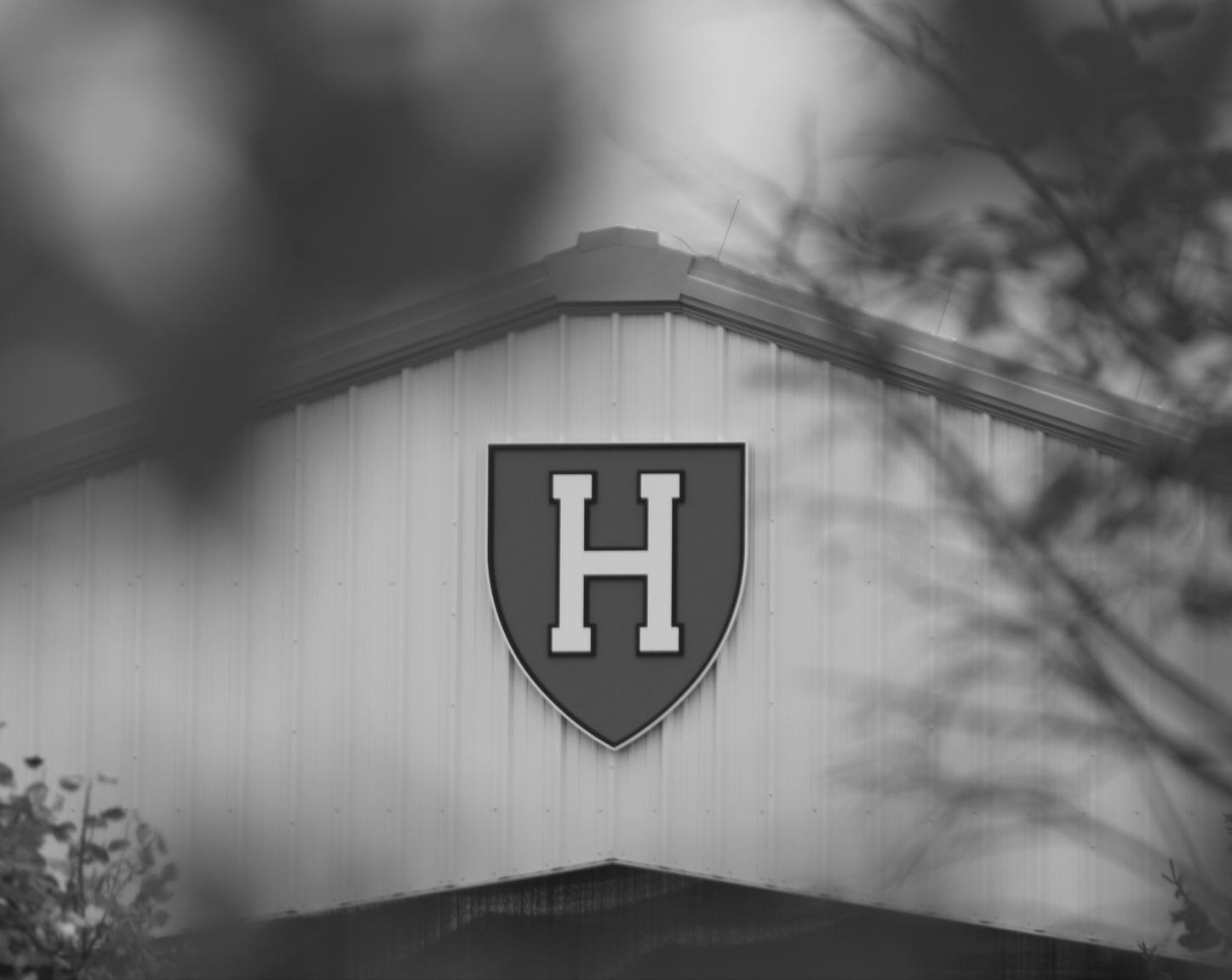
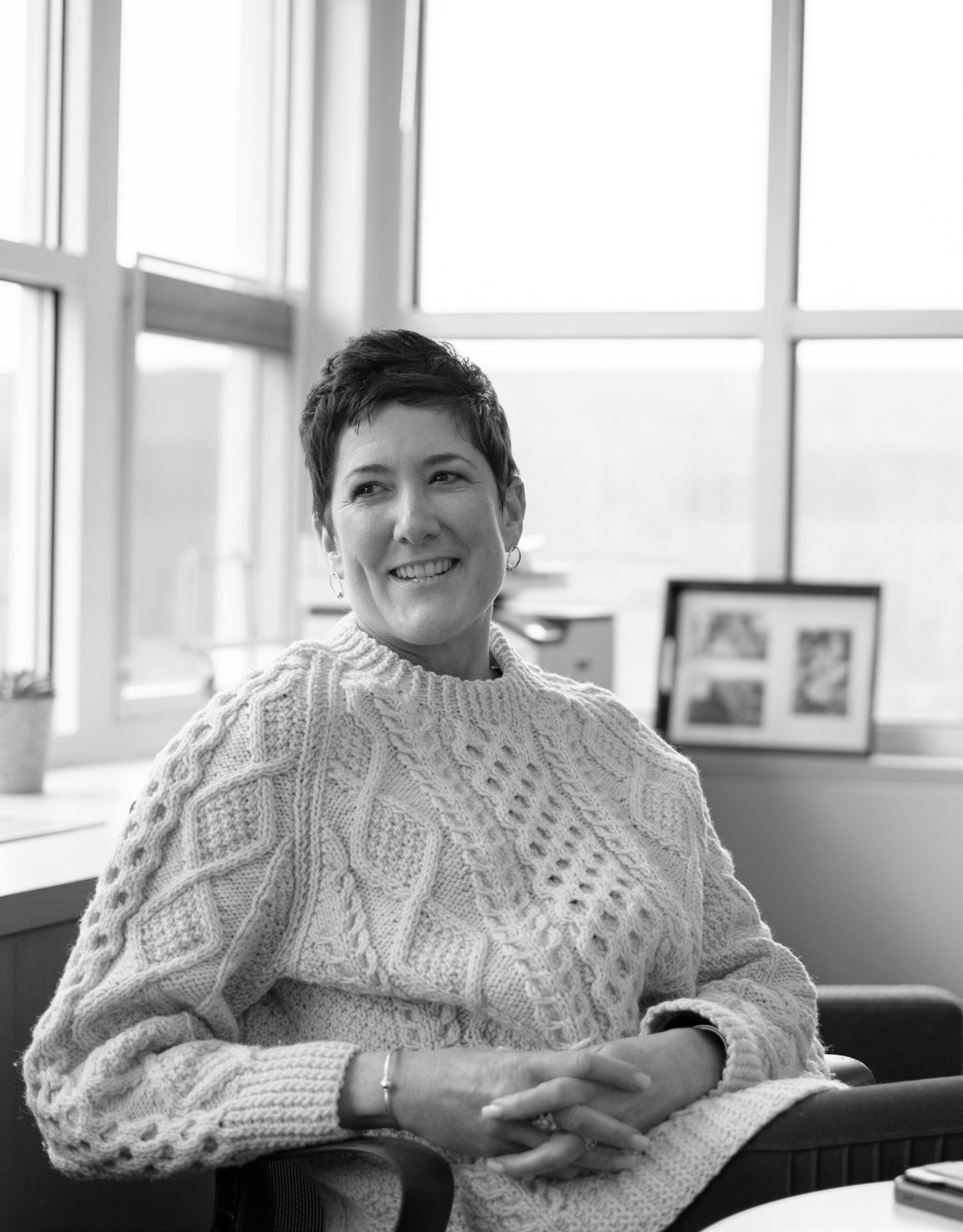
vard and I wasn’t even positive that I would get in,” Blanks said.
Per Ivy League policy, a coach also “may not require a candidate to refrain from visiting or applying to other schools, or to withdraw applications to other schools, as a condition for support during the admissions process.”
Matthew Linsky ’26, a fencer at Harvard, said he’s heard “horror stories” of people not getting in after verbally committing. However, Linsky noted that these cases are the exception.
“Usually the coach’s word is very solid because they’re always in communication with the school,” Linsky said.
For Klara Barbic ’27, an international student and runner at Harvard, the risk of a verbal commitment wasn’t clear until after the process ended.
“Some things weren’t explained well in the recruiting process,” Barbic said.
Barbic noted that part of Harvard’s appeal was its financial aid offerings not being
tied to athletic performance, as opposed to an athletic scholarship which could be revoked if a player is no longer on the team.
Ben L.H. Rosa ’25, another runner, emphasized the value of a Harvard education: “if you get injured at Harvard, you’ve got a Harvard degree,” Rosa said.
Harvard’s prestigious degree and strong alumni connections are a signature part of their recruiting pitch. In an April interview with The Crimson, McDermott called Harvard a “40 year opportunity, not a four year opportunity.”
Almost forty years after he joined the men’s water polo team, Freed remembers Harvard Athletics fondly.
“I learned more on the other side of the river than I did on the Cambridge side of the river in my four years,” he said.
mac.healy@thecrimson.com
matan.josephy@thecrimson.com jo.lemann@thecrimson.com

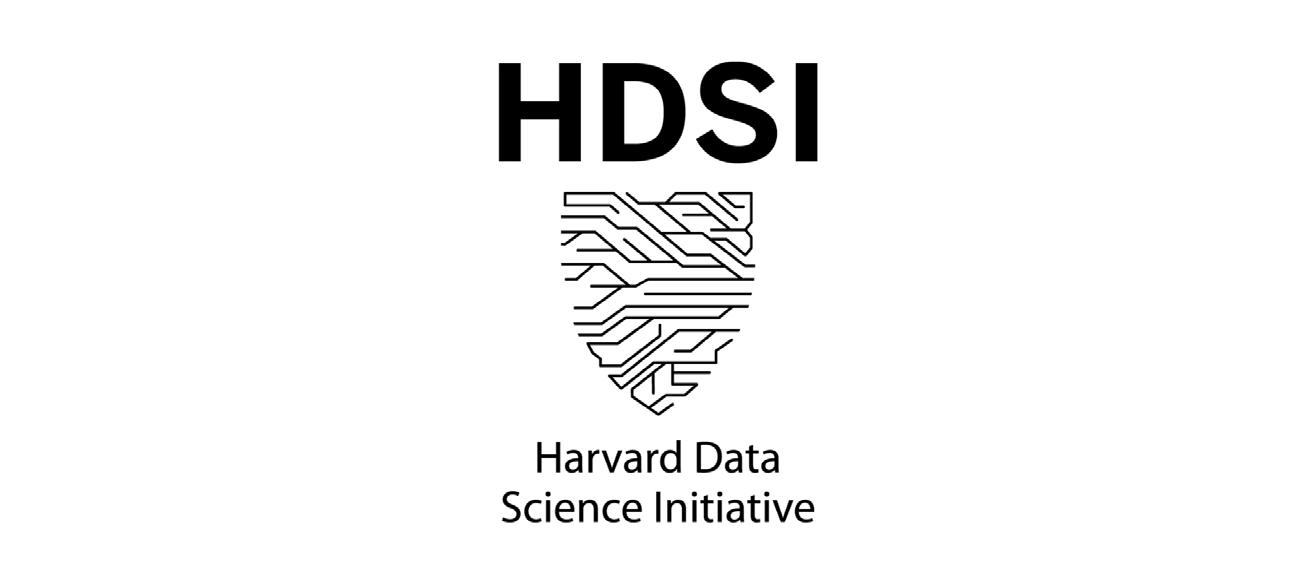
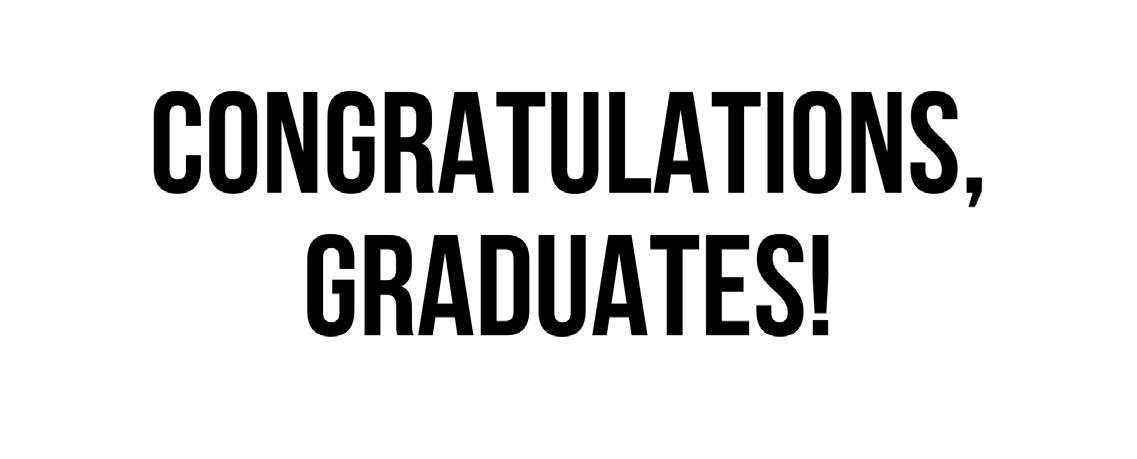



gorjana.com

OPEN TIL 2AM FRIDAY + SATURDAY

GARBER GOES TO WASHINGTON. Harvard’s interim president is traveling to D.C. to rebuild relationships with White House officials and members of Congress as he attempts to guide the University out of crisis. In doing so, he has to balance mounting an impassioned defense of higher education with avoiding provocations that could cast Harvard under even more scrutiny.
 By EMMA H. HAIDAR AND CAM E. KETTLES
By EMMA H. HAIDAR AND CAM E. KETTLES
The last time Alan M. Garber ’76 traveled to Washington as Harvard’s provost, he could only watch as former University President Claudine Gay faced a barrage of criticism from House Republicans over her efforts to combat campus antisemitism.
Garber returned to the nation’s capital on March 20, with a new mandate: to guide Harvard out of crisis and defend higher education from political attacks as the University’s interim president.
The visit marked the first of two trips to Washington by Garber during his first semester in office to meet with lawmakers and high-profile alumni in an effort to hear their concerns about campus antisemitism and strengthen the relationship between politicians and University leadership.
“The president of Harvard, even the interim president, does need to speak out about issues of general interest in higher ed,” Garber said in an April interview.
“I believe that the attacks on Harvard for the most part are attacks on higher ed, particularly attacks on our peer institutions,” he added. “I think it’s very important to defend the principles that our universities stand behind.”
Garber, however, declined to specify where those attacks were coming from.
But as the recipient of a congressional subpoena from a House committee led by Republicans who have once again coalesced around former U.S. President Donald Trump in a presidential election year, Garber had no need to be explicit.
Garber’s early tenure has been largely defined by the ongoing congressional investigation into Harvard, which has forced him to balance passionately defending higher education and avoiding provocations that the committee could use against him.
The House Committee on Education and the Workforce subpoenaed the University’s top leadership, lawmakers from both sides of the aisle threatened to revoke federal funding and tax exemptions for Harvard, and the committee discovered that getting university presidents to testify was a particularly potent way to discredit institutions of higher education.
Garber must now convince Congress not to act on threats to make the University pay a greater financial and reputational price as it continues to navigate its most turbulent period in decades.
According to University spokesperson Jason A. Newton, Garber met with members of the Massachusetts congressional delegation and House and Senate leaders from both parties during two separate trips to Washington. He also met with members of U.S. President Joe Biden’s administration.
The meetings were part of an extended tour of quiet diplomacy to reassure lawmakers that Garber and his administration were taking campus antisemitism seriously and on track to stabilize Harvard after its worst leadership crisis in decades.
During an April trip to Washington, Garber also spoke at the local Harvard alumni club, where he addressed the current political scrutiny facing higher education in remarks to a crowd of 500 people.
Julia E. Cain ’11, who attended the event in Washington, said she believed Garber’s handling of the pro-Palestine encampment that occupied Harvard Yard for 20 days demonstrated that he was a “skillful, delicate needle threader.”
The president of Harvard, even the interim president, does need to speak out about issues of general interest in higher ed.
AlanM. Garber ’76 Interim Harvard President
“It was warm and occasionally funny and I think he came off as a steady and thoughtful leader during a turbulent time,” she said.
Cain said Garber interpreted the scrutiny as part of a larger “discussion about the value of higher education in general.”
“Harvard is naturally a particular target,” Cain said. “When you think of rich or privileged elite colleges, Harvard is the one that people think of.”
While the committee has called several universities to testify for their responses to campus antisemitism amid ongoing protests and encampments, Garber is often seen as a spokesperson for all of higher education.
Still, Garber has also repeatedly said that he believed many members of Congress to be genuinely concerned about antisemitism on college campuses.
“Most of the people who I have heard from, including members of Congress that I have spoken with, really do care about antisemitism and expect us to do something about it,” Garber said in an April interview.
‘SABER
For six months, the committee has been investigating Harvard’s response to antisemitism on campus, issuing threats to force the University to “get serious” about the issue. But the committee has not outlined any specific policies it wants Harvard to adopt and the investigation’s end date remains uncertain.
While multiple members of Congress have suggested Harvards’ federal funding and tax exempt status could be in jeopardy over campus antisemitism, calls to punish Harvard financially took on new meaning when the committee’s investigation into higher education expanded to include the entire House.
House Majority Leader Steve Scalise (RLa.) said multiple House committees have been explicitly instructed to investigate the universities’ federal funding at an April 30 press conference announcing the probe expansion. The Ways and Means Committee had already indicated it would review Harvard’s tax-exempt status for “failure to adequately protect Jewish students from discrimination and harassment.”
Rep. Virginia Foxx (R-N.C.), who chairs the Committee on Education and the Workforce, declined to answer whether her committee plans to seriously consider proposing funding cuts.
Ways and Means Committee Chair Jason T. Smith (R-MO.) wrote in a March 21 letter to Garber that Harvard’s federal funding could be jeopardized if it does not “change course drastically” and address a “pervasive culture of antisemitism” on campus.
“Doing so is essential to justifying the generous tax-exempt status that the American people have provided institutions like yours for decades,” Smith added.
Last year, Harvard received $676 million dollars in federal funding. And because Harvard and other private universities receive federal funding in the form of research grants and student loans, they are subject to federal regulations.
Kenneth K. Wong, a professor of education policy at Brown University, called a 2017 bill which applied a 1.4 percent tax on large private university endowments a “defining moment” in the relationship between Congress and institutions of higher education.
Wong said Congress crossed the Rubicon with the endowment tax, which virtually ended its previous arrangement with universities that allowed them to operate without heavy interference from politicians.
“In the last few years, I think there seems to be some doubts being raised by some of the congressional leaders in terms of whether the universities have continued to live up to their promise in exchange for the tax exemption,”
Wong said.
“Going forward, this tax exemption in exchange for Harvard’s contribution to the public good will continue to be part of the scrutiny,” he added.
Garber has repeatedly said in private meetings with alumni and faculty that an increase to the endowment tax is the one of the greatest risks to University finances.
When we think about the election coming up, we are a favored target.
Alan M. Garber ’76 Interim Harvard President“The threat that keeps me up at night is not what happens to philanthropy, it’s certain political configurations — things like an endowment tax,” he said at an April 30 faculty town hall, according to an attendee’s meeting notes.
“When we think about the election coming up, we are a favored target,” Garber added.
Harvard is also facing a new endowment tax bill from Democrats in the Massachusetts legislature, which would set a 2.5 percent tax on all assets under management from private universities with an endowment greater than $1 billion. While the bill is unlikely to become law, it shows that Republicans are not the only ones who are eager to tax Harvard’s endowment.
Harvard Chief Financial Officer Ritu Kalra said that the University spent a total of $930 million on research and financial aid in 2023.
“An increase in the endowment tax would divert those funds for other purposes, making college less affordable, not more,” Kalra said.
Despite growing support among House Republicans for stripping federal funding, former general counsel to the House of Representatives Stanley M. Brand wrote in a statement that such a bill would be “highly unlikely” to pass the Senate or be signed into law by Biden.
Brand wrote that proposals to revoke student financial aid could also run into legal challenges.
“It sounds to me like saber rattling that is designed to create leverage against Harvard and others,” Brand wrote.
While Harvard’s worst-case scenario of funding cuts is unlikely to materialize, the committee has proven itself capable of inflicting


serious reputational harm to Harvard even without financial punishment.
The University has submitted more than 30,000 pages of documents to the committee in 17 different submissions, including providing the committee with governing board meeting minutes and email correspondence between top leadership and members of Gay’s antisemitism advisory group.
The committee, in turn, revealed that five members of the eight-person group threatened to resign in November 2023 if Gay did not promise to enact 14 policy recommendations, some within 48 hours.
The committee’s initial report alone prompted former Harvard President Lawrence H. Summers to suggest that members of the Harvard Corporation — the University’s highest governing body – should resign before they select the next University president.
And while Garber has remained largely unscathed, the committee itself does not know the full extent of confidential information it has received yet.
“If they don’t solve the problems at Harvard, I hope a lot of people will call for resignations of people there,” Foxx said. “I have not called for that at any point because I’m waiting to see what the results are.”
Should the committee resort to legal action to enforce the subpoenas in their entirety, it remains unclear which demands would be considered narrowly tailored to the committee’s legislative function — the standard for evaluating the legality of congressional subpoenas.
Though the committee has repeatedly accused Harvard of obstructing the investigation by declining to submit unredacted meeting minutes and internal communications, they have not charged Harvard administrators with criminal contempt of Congress.
And it is Garber’s job to protect information that the University does not want public while also proving to the committee he is willing to cooperate and serious about addressing antisemitism.
Newton — the University spokesperson — said in a statement that “our community and
campus are different today because of the actions we have taken, and continue to take, to combat hate and to promote and nurture civil dialogue and respectful engagement.”
“Harvard has and will continue to be unequivocal – in our words and actions – that antisemitism is not and will not be tolerated on our campus,” Newton wrote.
While the committee’s decision to issue subpoenas to Harvard administrators was unprecedented, previous Harvard presidents have also had to contend with managing a Congress skeptical of elite universities.
Former University President Neil L. Rudenstine, who served from 1991 to 2001, said he was seriously concerned about proposed cuts to federal funding during his tenure, but said it was far less contentious than the political climate that Garber now faces.
“There was a constant worry without actually anything coming to pass of the highly negative sorts,” Rudenstine said.
Beyond leading Harvard out of the investigation with its funding intact, the threat of a call to appear before the committee looms over Garber.
Even though Gay had faced growing public criticism for her response to Oct. 7 and campus protests, it was her testimony before the committee in December that pushed many more to call for her resignation.
Though Garber has said he would testify before Congress if invited, he would likely prefer to avoid a repeat of the spectacle that many higher education leaders have gone through in recent months.
The likelihood of Garber appearing as a witness at a congressional hearing may well depend on whether or not the committee believes he is successfully addressing campus antisemitism — a plan that is staked on a set of recommendations his task force on antisemitism has yet to release.
“We intend to act on recommendations from the task force,” Garber said in the April interview. “My impression is that both task forces are working hard and very, very thoughtfully. I expect that they will eventually present us with excellent recommendations
Dec. 5
Former University President Claudine Gay testifies before the House Committee on Education and the Workforce during a hearing about campus antisemitism.
Dec. 7
The House Committee on Education and the Workforce opens an investigation into Harvard over the administration’s response to antisemitism on campus.
Dec. 20
The House committee widens their probe to investigate allegations of plagiarism against Gay.
Jan. 9
The House Committee on Education and the Workforce requests an extensive list of documents from Harvard regarding antisemitic incidents, internal communications, disciplinary responses, and DEI initiatives on campus.
Jan. 10
The House Ways and Means Committee suggests Harvard’s tax-exempt status could be in jeopardy due to the administration’s response to Oct. 7.
Feb. 7
House Committee on Education and the Workforce Chair Virginia Foxx (R-N.C) threatens to issue subpoenas to Harvard, if the University does not fully comply with its requests for documents.
Feb. 16
The committee subpoenas interim Garber, Harvard Corporation Senior Fellow Penny S. Pritzker ’81, and Harvard Management Company CEO N.P. “Narv” Narvekar, demanding meeting minutes from the governing boards.
that we will want to pursue.”
As congressional Republicans characterize Harvard and other elite universities as strongholds of radical activism — using pro-Palestine student protest chants as evidence of their claims — experts say it is part of a broader trend of politicized attacks on education.
While some university presidents, including Gay, faced criticism for being too legalistic in their responses to congressional questioning, others — like Columbia University President Nemat “Minouche” Shafik — were criticized for capitulating to right-wing politicians.
Rep. Mark A. Takano ’83 (D-CA.) said in an interview following Gay’s congressional testimony that he thought the Republicans on the committee were “not really interested in the topic of antisemitism and antisemitism on campuses.”
“My own sense is that the Republicans are spring-loaded to enact a narrative that universities are bastions of liberal progressives,” he said. “They wanted to present an opportunity for their members to portray universities in a certain way and to beat up on university advisers.”
Higher education expert Mary L. Churchill said “it feels like an attack on knowledge writ large” and said political attacks started at the local, school board level in conservative states with book bans and library closures.
Churchill, a professor at Boston University, said she thought the high-profile hearings and threats from the committee were a ploy for voter approval.
“You’re seeing different moves from the different mainstream political parties in their awareness of how education level corresponds to voter behavior,” Churchill said. “They’re aware of that and I think they’re acting accordingly.”
In more than two dozen interviews with The Crimson, alumni, donors, and faculty said they have confidence that Garber can
successfully navigate the politics of the current moment.
Eduardo J. Dominguez ’01, an Harvard Alumni Association board member, said he believes Garber will be a good crisis president.
“I think among my cohort, there’s probably a unanimous consensus that he’s very well prepared,” Dominguez said. “He would be a great option to keep in that position because he served the University so well as provost.”
Former Corporation Senior Fellow William F. Lee ’72, who also served as the lead counsel for Harvard’s affirmative action lawsuit until 2019, said “it’s not just a question of how Harvard responds to all of what’s going on today.
“It’s how higher education responds to all of what’s going on today,” Lee said.
“I think the manner in which Harvard and other institutions of higher education have to respond is by staying focused on the values that have made us important to society — free speech, free thought, open discourse,” he added.
In response to accusations that the congressional committee’s focus on elite universities is politically motivated, Foxx said “this is a defense of the safety of students on campuses.”
“Our goal since day one has been ensuring the safety of Jewish students on campus,” she added. “I’m not attacking higher education. I’m trying to make sure that students are safe and that these campuses do the right thing.”
It is unclear whether the committee will take further action, or whether the Republican House majority will last long enough for them to do so.
Still, Wong, the Brown professor, called the congressional scrutiny “new uncharted territories for a lot of university leaders.”
“It is a moment of institutional vulnerability,” Wong said.
emma.haidar@thecrimson.com cam.kettles@thecrimson.com

March 4
Harvard submits additional documents to the committee under subpoena. This marks the University’s 11th submission, totaling almost 4,900 pages.
March 5
Foxx slams Harvard’s additional submissions under subpoena as “malfeasance” and says the committee will weigh further action.
April 22
Garber says he is willing to testify before the House committee if asked.
April 30
Republicans expand the House Committee on Education and the Workforce’s investigation into campus antisemitism into a House-wide probe.
May 16
The House Committee on Education and the Workforce releases a report as part of its ongoing investigation into Harvard. The report reveals that five out of eight members of Gay’s antisemitism advisory group threatened to resign less than 10 days after Gay publicly announced the group’s formation.
May 17
Foxx says the committee will issue more reports in the summer during their months-long investigation into Harvard in an interview with The Crimson.
ADMISSIONS. The longtime dean of Harvard College admissions and financial aid, William R. Fitzsimmons ’67, has seen Harvard through several presidents, tens of thousands of students, and years of litigation over the College’s admissions practices. In interviews with The Crimson, colleagues praised his tenure and committment to diversity in the student body.
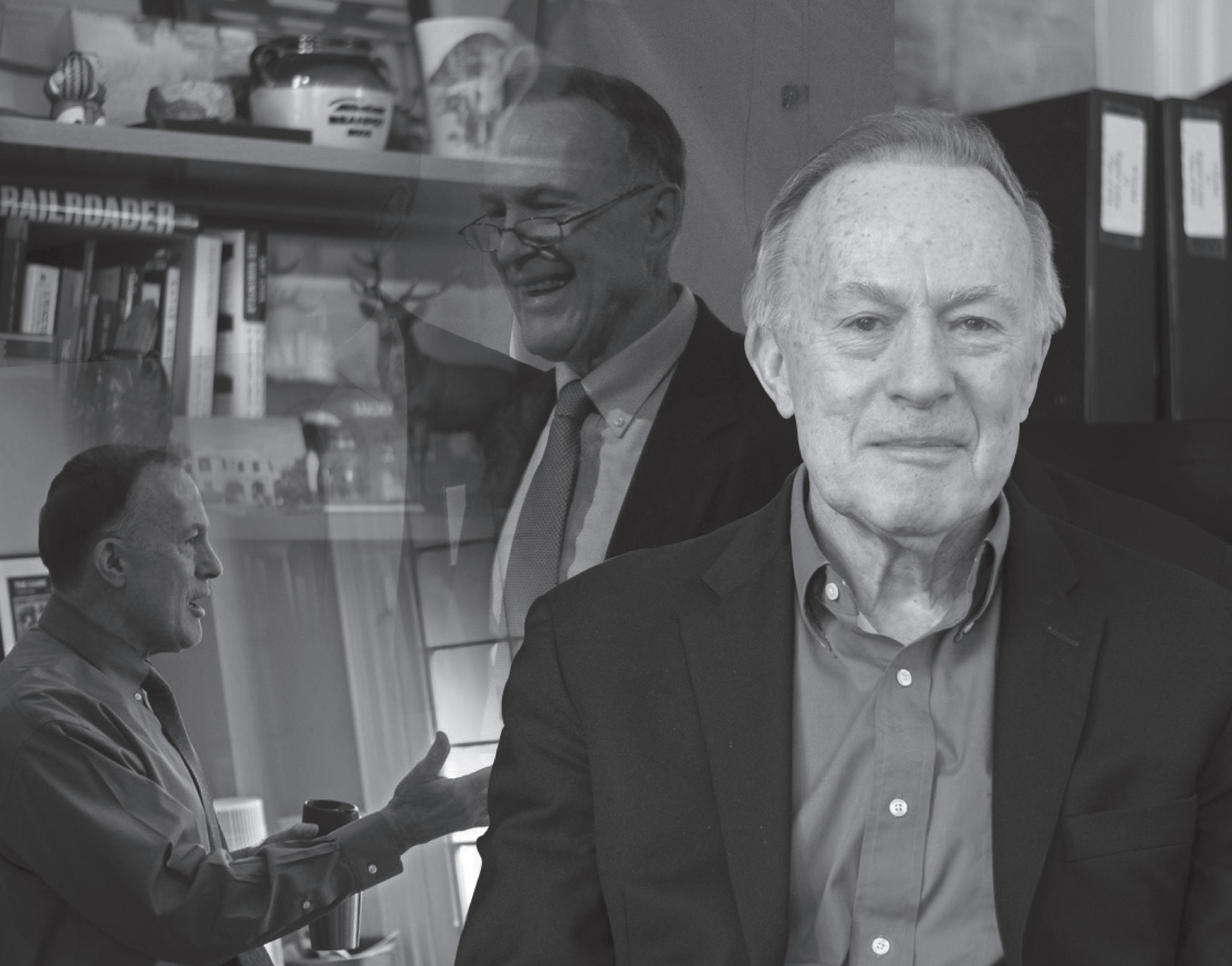 By ELYSE C. GONCALVES AND MATAN H. JOSEPHY CRIMSON STAFF WRITERS
By ELYSE C. GONCALVES AND MATAN H. JOSEPHY CRIMSON STAFF WRITERS
William R. Fitzsimmons ’67, Harvard College Dean of Admissions and Financial Aid, sat unfazed as he watched his legacy of half a century take blow after blow at the Supreme Court.
Eight years of litigation over Harvard’s use of race in its admissions process had finally brought the University to Washington, face-to-face with the most conservative court in decades — a court almost
certain to shatter the longstanding status quo of race-conscious admissions.
In the years since anti-affirmative action group Students for Fair Admissions first sued Harvard in 2014, alleging discrimination against Asian-Americans in the College’s consideration of race in admissions, University officials had sat through days of demanding testimony, while Harvard was forced to release of hundreds of thousands of internal documents and endure nonstop media coverage.
As a result, the admissions office has gone from a black box on Brattle Street to virtually open-source.
Fitzsimmons — alongside the rest of Harvard’s top brass — arrived at the Supreme Court in Oct. 2022. He watched oral arguments in-person, sitting alongside the likes of former Harvard President Drew Gilpin Faust, Dean of the College Rakesh Khurana, and William F. Lee ’72, former Senior Fellow of the Harvard Corporation, Harvard’s highest governing body.
But Fitzsimmons, the chief architect of Harvard’s admissions program for decades, was optimistic.
As the group returned to the airport, Fitzsimmons turned to Lee and said “I’m excited.”
“We have a job to do,” Lee — who personally represented Harvard through 2019, for much of the case’s trial stages — remembers Fitzsimmons telling him, as it became clearer than ever that the College would lose. “We’ll get it done.”
‘WE WOULD PULL BACK THE CURTAIN’
The longtime dean of admissions — Fitzsimmons began his job in 1986 — has served as Harvard’s gatekeeper for even longer, when he began working in the admissions office in 1972.
Under his watch, Harvard has admitted tens of thousands of students, including some of its most prominent. From Conan O’Brien ’85 to Chief Justice John G. Roberts ’76 and interim Harvard President Alan M. Garber ’76, Fitzsimmons is the longtime architect of the modern-day Harvard admissions process.
Central to that effort was affirmative action.
He had long played a vital role within a vast, University-wide effort to fight for the survival of the practice, as it faced a series of legal challenges across the United States over the course of five decades.
Race-conscious admissions policies, in their modern form, trace their roots at the College to the early 1970s. The ‘Harvard Plan,’ as it came to be known, employed both expanded recruitment efforts and the consideration of race within admissions deliberations in an effort to bolster the diversity — racial, ethnic, socioeconomic, or otherwise — of Harvard’s admitted undergraduate classes.
The program, at the time, received praise from the Supreme Court. Harvard’s race-conscious processes were cited as a national model in the landmark case Regents of the University of California v. Bakke, which maintained the constitutionality of such admissions practices.
As dean, Fitzsimmons would preserve and reinforce the College’s commitment to racial diversity.
In 2014, however, that process came under fatal attack. SFFA’s initial complaint, filed in Nov. of that year, alleged that Harvard employed “racially and ethnically discriminatory policies” in its undergraduate admissions, violating Title VI of the Civil Rights Act of 1964, and called for a court-imposed ban on the College using race as a factor in its admissions and admissions officers viewing the race of applicants.
“We both felt a deep commitment to affirmative action and the kinds of transformations in the student body that it had enabled,” Faust — who served as Harvard President from 2007 to 2018 — said in an interview with The Crimson. This made the lawsuit one that was “very much worth fighting,” she said.
Still, the Supreme Court’s 2016 ruling in Fisher v. University of Texas at Austin — in which the Court ruled in favor of the UT’s use of race-conscious admissions practices — injected further confidence into the University’s leadership that Harvard’s effort to fend off SFFA’s challenge might succeed.
Lee said that in 2014, after Fisher, Harvard “felt pretty good about where we were.” But the 2018 retirement of Justice Anthony Kennedy — the swing vote in Fisher — and the death of Justice Ruth Bader Ginsburg in 2020 led to a firmly 6-3 conservative majority.
“We went from a point of being uncer -
tain, to being cautiously optimistic, to being pessimistic,” Lee said.
Harvard would fight initial attempts to take the case to trial. Eventually, though, Fitzsimmons decided — in coordination with Faust and Harvard’s then-General Counsel Robert W. Iuliano ’83 — to let the case proceed to trial.
“That was a big decision, because — with one exception — all of the other affirmative action cases the Supreme Court had decided had been decided on paper records without a trial,” Lee said. “We would pull back the curtain on everything that happened during admissions.”
Fitzsimmons’s view was “we think we’re doing what’s right, what’s constitutional,” Lee said. “And if we are, the court will tell us we are and if we’re not, that we should change and adjust.”
The decision, in part a product of the faith Harvard officials — including Fitzsimmons — had in the admissions process, would open Harvard’s top-secret admissions process to unprecedented levels of public scrutiny. For three weeks, Fitzsimmons, Faust, Khurana, and others would testify in defense of Harvard’s admissions process.
“That decision was a very important decision,” Lee said.
‘HE’S

Fitzsimmons Joins Harvard Admissions
A young William R. Fitzsimmons ’67, by then just a year out from his doctorate at the Graduate School of Education, joins the Harvard admissions office. He would be appointed Director of Admissions just three years later. Save for a brief stint during the mid-1980s, he would stay at the office for the better part of half a century.
The Bakke Decision
In a landmark 5-4 decision by the Supreme Court in Regents of the University of California v. Bakke, raceconscious admissions policies were ruled constitutional nationwide. In a majority opinion, Justice Lewis F. Powell describes Harvard’s race-conscious policies – “the Harvard Plan” — as a prototype for the rest of the country.
Fitzsimmons Appointed Dean
A search committee led by future Dean of the College Harry R. Lewis ’68 settles on Fitzsimmons to lead the Admissions and Financial Aid Office. The search began in September 1985, when Fitzsimmons’ predecessor as dean, L. Fred Jewet ’67, was tapped to lead Harvard College amidst an administrative reshuffling.
In June 1988, the Department of Education opens an investigation into allegations that Harvard used illegal quotas to discriminate against Asian applicants. In a January 1988 statement, Fitzsimmons writes that a lower proportion of Asian legacies and recruited athletes is responsible for disparities in the acceptance rates of Asian and white applicants. Harvard is ultimately cleared of wrongdoing in the investigation’s final report, released in October 1990.
Harvard Financial Aid Initiative Launched
Then-University President Lawrence H. Summers, alongside Fitzsimmons, unveils an unprecedented expansion of undergraduate financial aid that makes Harvard free to those earning under $40,000. The no-pay threshold would continue to be raised.
Action Ends
Fitzsimmons and then-interim President Derek C. Bok announce a sudden end to the College’s early admissions program, which allowed high school students to apply in the fall and receive an early, non binding admissions decision in December. Fitzsimmons lauds the move as a boost for low-income applicants, though stresses it remains subject to review. It would be reversed in 2011.
Harvard launches a second major expansion of undergraduate financial aid. Dubbed the “MiddleIncome Initiative,” the move eliminates loans from aid packages and dramatically expands financial support for students from middleclass families.
SFFA Sues
Anti-affirmative action group Students for Fair Admissions sues Harvard, alleging discrimination against AsianAmerican applicants in the College’s admissions process.
Opening arguments between SFFA and Harvard begin in Boston. Over three weeks, a number of Harvard’s top brass — including Fitzsimmons, former President Drew G. Faust, and Dean of the College Rakesh Khurana — take the stand. Simultaneously, thousands of internal documents detailing the secrets of Harvard’s admissions process, initially released the summer before, would continue to become public. A year later, the district court would rule for Harvard.
Test-Optional Starts, Then Extended
As the Covid-19 pandemic raged, Harvard announces a shift to testoptional admissions for applicants to the Class of 2025; six months later, it extends the policy to the Class of 2026. By December 2021, the College commits to staying test-optional through applicants to the Class of 2030 — set to apply in the fall of 2026.
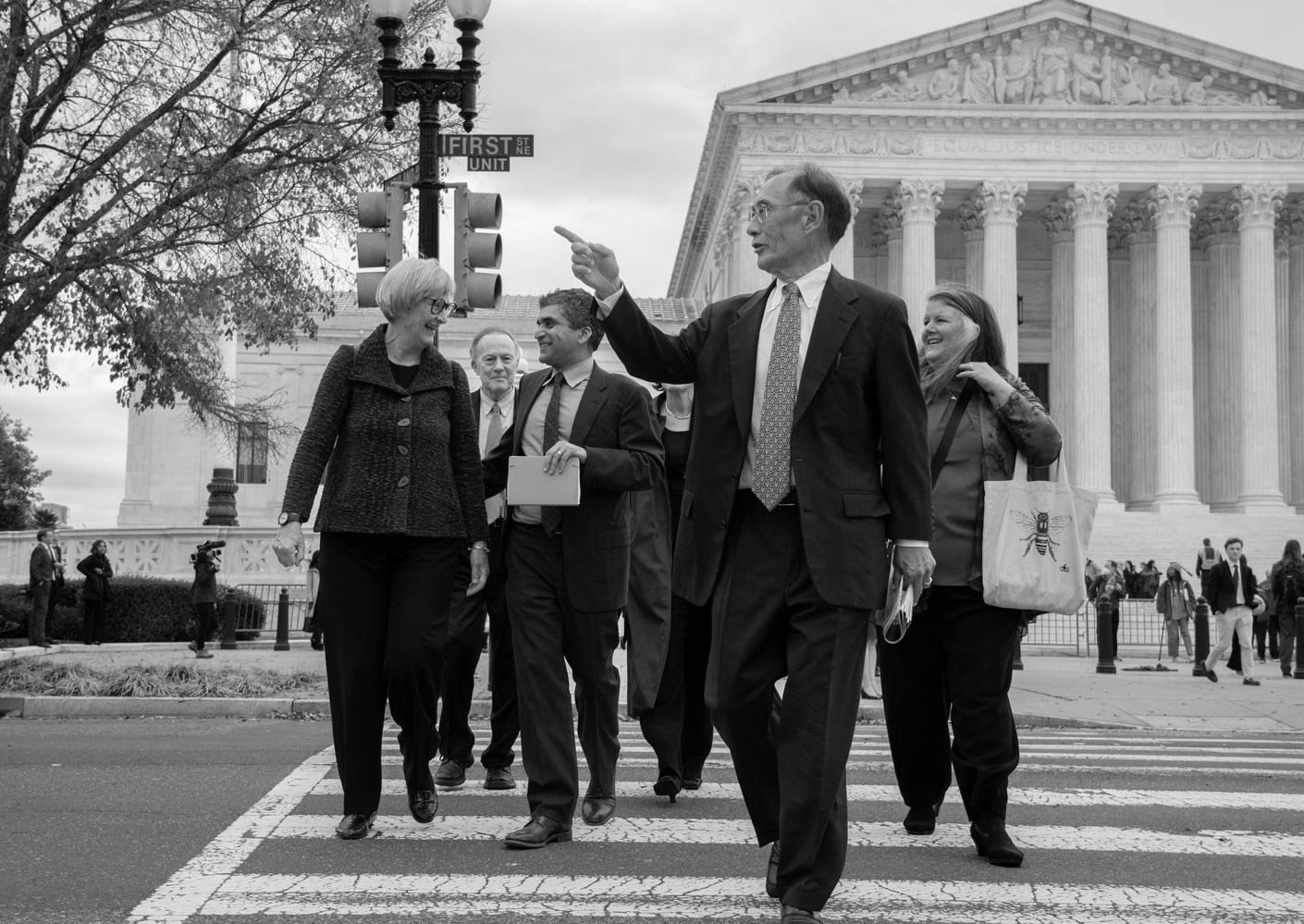
Harvard would emerge from the district court trial victorious, and the University was handed a second win in 2020 by the U.S. First Circuit Court of Appeals before its loss at the Supreme Court in the summer of 2023.
But while Harvard’s race-conscious policies were overturned, many who know him paint Fitzsimmons’ lasting impact on the University as one defined by far more than just affirmative action.
Rather, his peers say that it is the titanic shift in the diversity of the College — enacted in large part throughout his time at the admission office’s helm — that will outlast even him.
His five-decade-long tenure has been characterized by an aggressive expansion of outreach and an explosion in undergraduate financial aid — both personally important to Fitzsimmons, who often references his status as a first-generation college student on a scholarship.
Thomas A. Dingman ’67, a former Dean of Freshmen and Fitzsimmons’s Harvard classmate, said that his commitment to expanding the diversity of Harvard’s student body began shortly after he started
working in the admissions office in the 1970s.
“He worked feverishly to get out to areas that were underserved,” Dingman, who worked closely with Fitzsimmons throughout his time at Harvard, said. “He was not content simply to keep drawing from the schools that were considered, over time, ‘feeder schools.’”
“He wanted, very much, to make Harvard accessible internationally, and to groups that were underrepresented,” he added.
Fitzsimmons has also centered recruitment and outreach as dean, enlarging and diversifying Harvard’s applicant pool. Harvard has partnered with universities across the country — such as Wellesley College, the University of Pennsylvania, the University of Virginia, Georgetown University, and others — to aggressively conduct outreach and recruitment events.
Such efforts typically involve Fitzsimmons, alongside other representatives from Harvard, traveling across the country, meeting with high school guidance counselors alongside students and par -
ents potentially interested in Harvard.
“You can imagine how popular Harvard is with a group of a couple thousand guests,” Greg Warren, dean of undergraduate admissions at the University of Virginia who has regularly traveled with Fitzsimmons, said. “He is immediately swarmed by families and students.”
“And, inevitably, he’s the last one standing,” Warren added.
In Dec., Harvard announced it had joined the Small Town Outreach, Recruitment, and Yield consortium, a group of universities working to bolster applications from rural areas.
“We have the pedal to the metal, in terms of outreach,” Fitzsimmons told The Crimson.
The College’s financial aid has also dramatically expanded in the years Fitzsimmons has helmed the department. It was under his watch that, in 2004, then-President Lawrence H. Summers launched the Harvard Financial Aid Initiative, making Harvard free for those earning under $40,000 and greatly increasing financial assistance for students whose families earned above that thresh -
old.
Expansion continued throughout the 2000s, with rapid growth dating back to 2007. Even throughout the financial crisis of 2008, the College managed to expand its student assistance. In 2023, Harvard announced a second consecutive raise to the income threshold at which families pay nothing to attend.
The growth, though, came with skyrocketing costs of attendance. Tuition for the 2003-2004 academic term, the same year that the Financial Aid Initiative was announced, numbered $26,066. By 202324, that figure had ballooned to $69,300.
The change in Harvard’s demographic statistics since Fitzsimmons took charge of the admissions office, though, are stark.
The number of African American students admitted to Harvard hovered at around 100 from 1969 to 1971. In 1972, when Fitzsimmons joined the admissions office, the African American population was 88.
By the Class of 2026, admitted exactly half a century after Fitzsimmons began his work, that number had grown to over 300.
Former University president Lawrence S. Bacow — who served from 2018 to 2023, through much of Harvard’s litigation with
SFFA — praised Fitzsimmons’ efforts in an emailed statement to The Crimson.
“Our student body is far more diverse today in every possible dimension — ethnically, religiously, geographically, socio-economically — than it was when Bill first started working here,” Bacow wrote. “Bill, and the Admissions Deans who preceded him, have played critical roles in bringing about these changes.”
In the wake of the Supreme Court’s decision, Harvard admissions enters territory without recent precedent. The process has evolved, radically and rapidly, in response to the Court’s ruling.
In Aug., Harvard unveiled an overhauled application, replacing its longstanding essays with smaller, short-answer questions. Then, just weeks after releasing admissions decisions for the Class of 2028 in March, the College announced a shock reversal of its previous commitment to remain test-optional for two more years, requiring all future applicants to submit SAT or ACT scores.
Simultaneously, the impact of the Court’s ruling on Harvard’s results remains unclear. Demographic data of the
Class of 2028 — typically sent alongside decisions in the spring — is yet to be released. The College also remains under investigation by the federal government, now for its use of legacy and donor preferences in admissions, ensuring that governmental scrutiny of its admissions processes will continue.
Fitzsimmons, though, remains a constant presence. The 79-year-old administrator, now in his 38th year as dean, shows little indication that retirement is on the horizon, routinely telling The Crimson that he has no imminent plans to depart the job that has defined his life.
Still, some changes appear even beyond immediate policy. In contrast to the admissions office’s furtive past, Fitzsimmons now welcomes — even lauds — the spotlight that the last several years have brought to his work. As Harvard’s peer schools begin to hide their acceptance rates, for instance, Fitzsimmons has insisted Harvard will continue to release its admissions data.
“We are beyond welcoming transparency,” he said in an interview with The Crimson. “Because the more transparency there is, the better it is for us to get excellence from everywhere.”

Harvard Loses at SCOTUS
In a landmark decision, the Supreme Court rules that Harvard’s use of race-conscious admissions violates the Civil Rights Act of 1964. The majority opinion confines the use of race to “an applicant’s discussion of how race affected the applicant’s life.”
Less than a month after the Supreme Court’s ruling, the Department of Education announces an investigation into Harvard’s use of admissions preferences for children of donors and alumni under the Civil Rights Act. Legacy Investigation
Application Revamped
Anti-affirmative action group Students for Fair Admissions sues Harvard, alleging discrimination against AsianAmerican applicants in the College’s admissions process.
Early Action Plunges
Harvard releases the first wave of decisions made without the use of race-conscious admissions, and does not release the racial or ethnic composition of early action admits in a break from past practice. Early applicant numbers drop 17 percent.
Regular Decision
Harvard accepts 3.59 percent of applicants to the Class of 2028 in the culmination of its first admissions cycle post-Supreme Court, and still does not release demographic data on the admitted class.
In Shock, Testing Returns
In a stunning reversal, Harvard announces the return of its standardized testing requirement for applicants, effective immediately — undoing its commitment to stay test-optional for two more cycles. The move comes shortly after similar announcement from schools like Brown, Yale, and Dartmouth.
FLAT TIRES. As construction slowly moves forward on bike lanes under Cambridge’s Cycling Safety Ordinance, the physical separation on a growing number of the city’s streets has come to represent a bitter division in its politics — and many are at a loss for how it can be bridged.
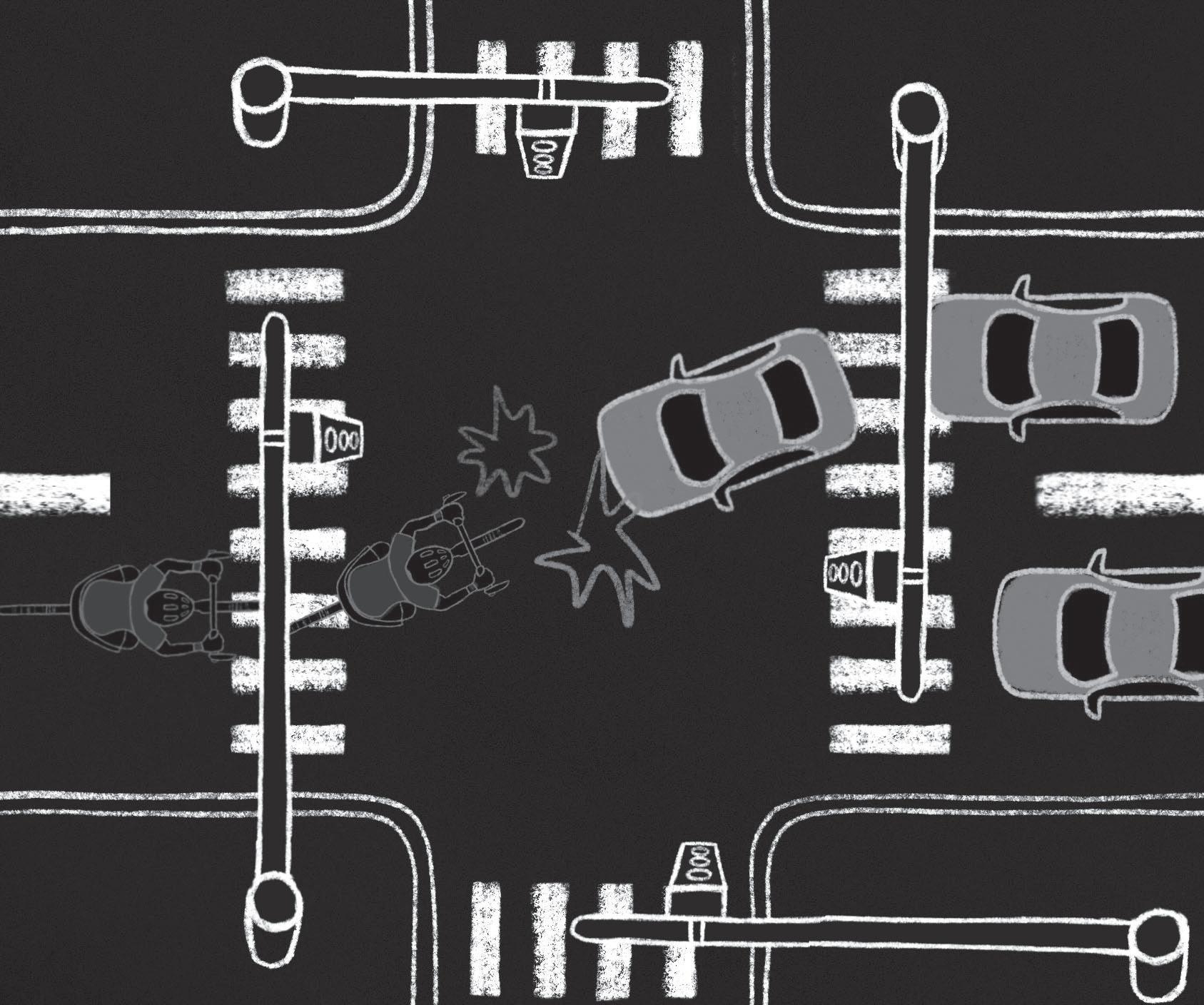 By AYUMI NAGATOMI AND AVANI B. RAI CRIMSON STAFF WRITERS
By AYUMI NAGATOMI AND AVANI B. RAI CRIMSON STAFF WRITERS
Drew M. Nelson was a second-soloist dancer with the Boston Ballet. Then, a bike crash changed his life.
Five years ago, Nelson was involved in a car crash while biking, fracturing his fibula and tibia and tearing his ACL. Even after three surgeries, his body never fully recovered — he doesn’t think he will ever return to
his professional dance career.
This was the story Nelson shared with the Cambridge City Council on April 29 — one of nearly 300 people who, over the course of more than five hours, gave personal accounts of how bike accidents have impacted their lives and urged against extending the timeline for the city to construct separated bike lanes.
“These kinds of traumatic experiences change our lives forever,” Nelson said.
The marathon meeting was the latest ep-
isode in a contentious battle for the expansion of the city’s bike lane network.
In 2020, the City Council passed an amended Cycling Safety Ordinance, setting the ambitious goal of installing a 25-mile separated bike lane network by May 1, 2026. Last month, in a controversial 5-4 vote, the Council pushed the deadline for the CSO’s completion by 18 months, to November of 2027.
Proponents of greater bike lane expansion, like Nelson, say it is a matter
of life or death. An equally committed constituency of residents worry that bike lanes would be detrimental to the city, particularly in impacts on small businesses, senior citizens, and pedestrian safety.
As construction slowly moves forward on bike lanes, the physical separation on a growing number of Cambridge streets has come to represent a bitter division in the city’s politics — and many in the city are at a loss for how it can be bridged.
The April vote came as a disappointing setback for a bicycle safety movement that, since 2019, had experienced wind in its sails.
The CSO, first passed in 2019, required the city to construct separated bike lanes as part of a five-year street reconstruction plan. Though the vote was a win for bike safety advocates — namely the local group Cambridge Bicycle Safety — a more resounding victory came in 2020, when the Council passed a set of amendments setting an ambitious goal for 25 miles of separated bike lanes criss-crossing the city.
Just more than 13 miles of the 25-mile network have been completed to date.
For former Vice Mayor Jan Devereux, who helped pass the initial CSO, the policy was motivated by “a string of really tragic deaths of both cyclists and pedestrians.”
The emphasis on safety came as bike rid-
ership in Cambridge experienced a fourfold increase from 2002 to 2019. Bluebike usage similarly skyrocketed, with 1.8 million trips beginning or ending in Cambridge in 2022.
Though the number of crashes per bicycle miles traveled decreased between 2004 and 2019, there were still 24 bike crashes in 2019, not including Nelson’s who chose not to report his accident to the police.
Vice Mayor Marc C. McGovern, who voted against the extension of the CSO deadline, said the issue was a matter of life or death.
“I don’t know how you can listen to stories of people fearing for their lives and almost losing their lives and not want to try and mitigate that as quickly as possible,” McGovern said.
For Devereux, the safety benefits of bike lanes make the CSO’s delayed deadline a disappointment — particularly for a city which “prides itself on being a leader” on progressive causes.

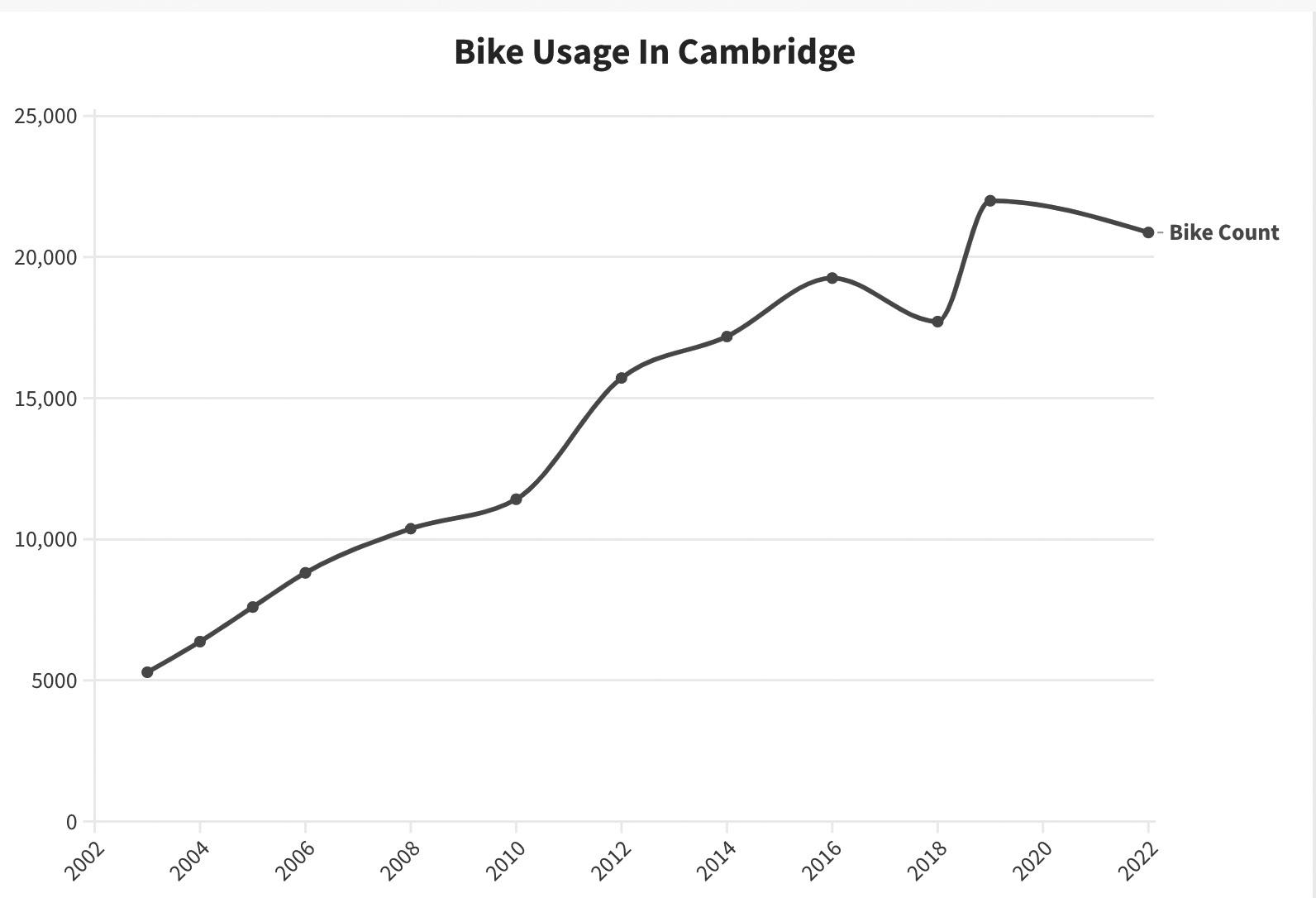
“This particular Council voted to walk back what I view as really critical safety improvements and a lot of progress that Cambridge has made,” Devereux said. “It’s just really, really frustrating.”
“To me, this is a step backwards,” she added.
Those calling for a delay in the installation of bike lanes bristle at the idea that their advocacy is jeopardizing public safety.
Rather, they say, safety — the safety of pedestrians — is one of many reasons to be wary of the CSO, along with adverse economic effects and the integrity of the political process.
“As somebody that has 13 stitches in my chin from when I took a header on my handlebars, I am not anti-bike,” Mayor E. Denise Simmons said in an April interview. Simmons was one of five councilors to vote for delaying CSO implementation.
“I actually want cycling. I want cycling safety,” Simmons added. “But I also have to balance it with the small business owner or the senior citizen.”
The effort to delay or kill the CSO has been led by Cambridge Streets for All, a nonprofit advocacy group formed in 2022 in response to the first installation of bike lanes in North Cambridge.
That year, after raising more than $75,000, the group — including former CSA Chair Joan F. Pickett, now serving on the Council — filed a lawsuit against the city asking it to remove existing bike lanes and stop ongoing construction. The motion and its appeal were ultimately dismissed by the Middlesex Superior Court.
Victoria L. Bestor, the group’s secretary, said the organization was created for residents and businesses in the area who “felt that their voices were not really heard” as the Council debated the CSO.
Since then, Bestor said, the CSA’s initiatives have been misrepresented by what she calls “the bike lobby.”
“I have never heard of anybody in this city, or anyplace else in fact, say that all bike lanes should be banned. That’s certainly not our position,” Bestor said.
Rather, she said, the group is concerned that the removal of parking for bike lanes could adversely affect small businesses or endanger pedestrians.
Picket said that the passage of the 2020 amendments during the Covid-19 pandemic lacked necessary input from local stakeholders, which led to a bevy of unaddressed concerns.
“I fully believe,” Pickett said, “in the case of the Cycling Safety Ordinance, a lack of
The Evolution of the CSO Cycling Safety Ordinance Passed
The ordinance requires the city to build separated bike lanes as part of a fiveyear street reconstruction plan.
October 2020
Council Passes CSO Amendments
Amendments required the city to install approximately 25 miles of separated bike lanes by May 1, 2026.
CSA filed a lawsuit against the city, asking to halt the bike lane expansion on the basis of an improper and unlawful use of taxpayer funds. Cambridge Streets for All Lawsuit
Economic Impact Study
A study commissioned by the city revealed inconclusive results.
April 29, 2024
Deadline Extension
In a 5-4 vote, the Council pushed the deadline to complete the bike lane network to November 1, 2027.
May 1, 2026
Original Deadline
The initial CSO deadline.
November 1, 2027
New Deadline
The extended deadline approved by the City Council in April.

opportunity for residents and the business community set up a conversation that was going to be divisive.”
Under sustained pressure from CSA, the city commissioned an economic impact study in 2022 to analyze the effects of bike lanes on small businesses. The results, everyone hoped, could settle the debate on whether the city was sacrificing the health of its small businesses in service of bicycle infrastructure.
They did the exact opposite.
The study’s results, released in February, had inconclusive findings: a combination of confounding variables due to Covid-19 and the state’s refusal to send the city tax returns for its businesses, left “unexplained inconsistencies in the data.”
Faced with more questions than answers, three councilors — Pickett, Paul F. Toner, and Ayesha M. Wilson — proposed extending the deadline for the CSO by more than a year, allowing for some breathing room as residents and businesses adjusted to the new reality.
“All we asked for was some additional time to actually meet the needs of the residents of East Cambridge, Main Street and Broadway,” Toner said, referencing issues
like diminished parking and difficulties with deliveries as a result of expanded bike lanes.
“Some people think that their companies aren’t gonna be able to survive in this environment,” he added. “If that’s the case, I want them to have the time to be able to make that decision and move if they need to.”
But some experts suggested that the economic impact may be overblown.
Jim Aloisi, a lecturer of transportation policy and planning at MIT, said small businesses’ concerns with bike lanes oftentimes require “myth-busting” as their impacts are “counterintuitive.”
“There’s no data that you can find from anywhere — no credible data from anywhere — that protected cycling lanes, or dedicated bus lanes for that matter, harm local businesses,” Aloisi said.
“The opposite is true. They usually improve foot traffic and improve businesses,” he added.
Bridging the gap in understanding between small businesses and cyclists, Aloisi said, is incumbent on “city leadership.”
“People don’t want to be lectured,” Aloisi said, “what they want is to be engaged collaboratively.”
For pro-bike lane activists like Clyve Law-
rence ’25 — a Crimson Editorial editor — “by no means is the fight over.”
Moving forward, Lawrence wrote in a statement to The Crimson, “we need radical leadership that not only improves street infrastructure, but bolsters community and connection.”
On the other side of the debate, advocates concerned about small businesses are also worried about leadership, asking that the city listens to input from various stakeholders when legislating over controversial issues.
Bestor said that as construction moves forward CSA intends to work with the city to “amplify the voices of citizens that are concerned.”
Councilor Patty M. Nolan ’80, who said she supports the CSO’s overall vision, nonetheless acknowledged that the Council had “ruptured trust among many residents due to the speed with which we installed the bike lanes in place now” in remarks at the April 29 meeting, where she cast the decisive vote in favor of delay.
“Those who hate the bike lanes won’t be happy. Those who are begrudgingly coming to accept them are the ones I considered as I wrestle with this vote,” Nolan said. “We have a city where we need people to come together and work together.”
Brooke McKenna, the city’s Transportation Commissioner, said the extended time-
line would give residents greater engagement with the expansion process.
Still, she emphasized that the department is not experiencing “a change in direction,” and the city intends to complete the network by the new deadline.
The additional 18 months, McKenna said, will allow the development of existing modifications to zoning, permitting residents to utilize off-street parking to “help offset some of the loss of on-street parking,” as well.
Pickett attributed the existing deep divide among residents on the issue of bike lanes as a result of the council’s inadequacy in considering local business owners’ perspectives during initial CSO discussions.
“I’m not 100 percent sure how to close divisions,” Pickett said, “except for making sure that if we do something that is as controversial again, we leave sufficient time to process and for people to really listen and hear both sides.”
But despite the division, Simmons expressed cautious optimism that the city could arrive at what she called an “unhappy medium” in the April interview.
“We’re not all going to be happy but hopefully we’ll be better off,” she said. “You get a little, you give a little.”
ayumi.nagatomi@thecrimson.com avani.rai@thecrimson.com
STUDENT PROTEST. Interim Harvard President Alan M. Garber ’76 has been widely praised for his measured handling of external controversy and internal campus tensions. But some students and faculty have decried Garber’s approach to protests — particularly pro-Palestine demonstrations — as excessively repressive and forceful.
 By JOYCE E. KIM AND JO B. LEMANN CRIMSON STAFF WRITERS
By JOYCE E. KIM AND JO B. LEMANN CRIMSON STAFF WRITERS
On Friday evening, Syd D. Sanders ’24 was asked to withdraw from Harvard College for three semesters.
The decision, relayed over the phone by Sanders’ resident dean, comes following his involvement in the 20-day pro-Palestine encampment in Harvard Yard. As a senior set to graduate just one week later, receiving the suspension meant Sanders might not receive his degree until Decem-
ber 2025, despite having completed his required credits.
Three days after the encampment ended last Tuesday, the Harvard College Administrative Board — an administrative body responsible for the application and enforcement of the College’s policies — suspended five students and placed at least 20 more on probation.
Sanders is one of the 12 seniors who may not be allowed to graduate at Commencement. At least 60 students were initially called before the Ad Board, according to organizers with Harvard Out of Occupied Palestine.
The disciplinary action came to the shock and outrage of many protesters, who believed they would be granted amnesty as part of the negotiated agreement to end the encampment — one that they felt was not ultimately upheld.
“The school went back on that so intensely and so insanely, and with such harsh punishment,” Sanders said in a Saturday afternoon interview.
“I think it’s draconian. I think it’s harsh,” he added. “I think it’s just totally unheard of in the history of Harvard protests and presidents.”
Harvard spokesperson Jason A. New-
ton declined to comment for this story.
The Ad Board decisions capped a spring semester characterized by protests, external pressures, and a pro-Palestine encampment — marking the first major trial for interim Harvard President Alan M. Garber ’76.
Garber — who stepped into office on Jan. 2 following the resignation of former Harvard President Claudine Gay — has largely drawn praise for his measured response to controversy and his ability to assuage a divided campus.
But some students and faculty have condemned Garber’s approach to protests for
Anti-Vietnam Occupation
When several hundred students occupied University Hall as part of an anti-Reserve Officer Training Corps program to protest the Vietnam War, then President Nathan M. Pusey ’28 called the police to remove them. Consequently, 170 students were charged with criminal trespassing, 16 were removed by the University, 20 were placed on “suspended suspension,” and 99 were given warnings. This is the most forceful retaliation the University has enacted against protesters to date.
Living Wage Sit-In
In the final weeks of Neil L. Rudenstine’s presidency, more than 50 students staged an occupation of Mass Hall that lasted 21-days to advocate for a living wage for the University’s employees. When the encampment ended, Dean of the College Harry R. Lewis ’68 called for the Ad Board to not suspend students. College students were given 3 weeks of probation.
Several students protesting against Harvard’s investments in fossil fuels blocked Mass Hall for 24 hours to prevent then President Drew G. Faust from entering her office. The blockade ended when one protester was arrested. No disciplinary action was taken by the University against protesters.
Spring Comaroff Occupation
Dozens of protesters occupied University Hall for eight-hours to protest Harvard’s sexual harassment and professional conduct policies and call for the resignation of professor John L. Comaroff, who faced sexual harassment allegations. According to protesters, students were not disciplined for their participation in the protests or the occupation.
Fall University Hall Occupation
Nine students occupied University Hall for 24 hours in a protest organized by Jews for Palestine to demand that Harvard administrators call for a ceasefire in Gaza, among other demands. The occupation marked the most major pro-Palestine demonstration in the fall semester and resulted in Ad Board hearings for protesters — who were eventually let off with warnings.
being unusually repressive and forceful, drawing new, unprecedented lines around campus speech and protest.
In his sudden ascension to the presidency, Garber inherited a Harvard in strife.
In the aftermath of Hamas’ Oct. 7 attacks on Israel, campus fractured down political lines, with pro-Israel and pro-Palestine protesters alike taking to the steps of Widener Library and Memorial Church to host vigils and protests.
Though it would be months before encampments swept the nation’s colleges, Garber seemed to take preventative measures.
On Jan. 20, three days before the start of the spring semester, Garber and 15 deans across Harvard’s schools sent an email to affiliates outlining the forms of protest and dissent prohibited by the University’s guidelines.
The email evoked the University-wide Statement on Rights and Responsibilities — a document that emerged amid a wave of intense anti-Vietnam campus protests, including the 1969 University Hall takeover — which protects peaceful protests that do not infringe upon the personal rights of Harvard affiliates.
But student protesters — who felt they had not broken any precedent of permitted protest on campus — saw the emails as heavy handed attempts to deter their activism.
Violet T.M. Barron ’26 — an organizer with HOOP and Jews for Palestine, an unrecognized student group at the College that formed in the fall — described her immediate reaction to the email as “deep frustration” and “sheer disbelief” that Garber could “make a unilateral move to essentially disallow protests and demonstrations across campus.”
“There was only one reason for that clarification, and that was the wave of pro-Palestine protests that we saw,” Barron, a Crimson Editorial editor, added.
Sanders described some of the prohibited activities — such as blocking a road or chanting on megaphones — as activities “essential to protests” that “have been happening on Harvard’s campus for years without this presidential warning and without this repression and backlash.”
Crimson Editorial editor Clyve Lawrence ’25, one of the co-founders of the African and African American Resistance Organization — another group that
stepped forward in pro-Palestine organizing in the fall — said the “vagueness” of the email was “a form of chilling.”
As Garber’s administration set the tone for its approach to protests — preemptive and broad, yet imminently forceful — the spring semester saw a relatively quiet start.
Though the first protest of the spring didn’t come until almost three weeks into the semester, student activism seemed to re-emerge in force as the pro-Palestine rally drew more than 150 people.
Sanders said that while the guidelines “definitely did not stop protest activity,” it forced organizers to “be more careful about the very logistical and back end of things.”
“It definitely required protesters to be more strategic and much more careful about the most mundane and insane things, like, where’s your logo going? Who is officially organizing and doing this protest? Whose name is going on it?” he said.
The Harvard Palestine Solidarity Committee — which had authored the controversial letter holding Israel “entirely responsible” for the Oct. 7 attacks — also began to take a back seat following intense backlash and doxxing attacks.
In its stead, unrecognized groups like Jews for Palestine, AFRO, and the unofficial Boycott, Divestment, Sanctions caucus of the graduate student union — many of which included significant membership overlap with the PSC — took on the mantle of the movement.
Even for the most dedicated and public-facing student protesters, Garber’s email caused a moment of hesitation.
Barron said the email also made her re-evaluate her visibility in the movement. As one of nine students who participated in a 24-hour occupation of University Hall in November, Barron was called before the Ad Board and given a warning.
“I think it definitely made me afraid the first few weeks following to participate in rallies,” she said.
But despite the “initial reservations and fear,” Barron added, the email “only emboldened me further.”
Still, Barron noted that people “lost their will to turn out” as the specter of administrative action and disciplinary punishment loomed.
“It didn’t really seem like people wanted to mobilize,” Barron said. “Whereas last semester, over 1,000 people turned out to that rally in October, we were struggling to get even over 100 at some rallies” in the spring.
Lawrence said that “people were unsure how far is too far.”
“Some people didn’t want to test the waters,” he added. “People were concerned — we don’t know if we do this ‘wrong,’ what will this mean for us and our status on this campus.”
Less than four months later, calls from resident deans began flooding in, and protesters got their answer.
By April, protests across the country had taken on a new tenor.
At Columbia University, Yale University, the University of California Los Angeles, and more, protesters began to set up encampments — some of which were subsequently violently removed by police force.
All still seemed quiet on the Harvard front, but Garber and his administration again took preemptive measures.
On April 21, the University locked down Harvard Yard, restricting access to only Harvard University ID holders. The next day, the College suspended the PSC — then one of the only recognized pro-Palestine groups on campus.
Three days later, on April 24, pro-Palestine student protesters set up an encampment in the Yard, streaming onto the lawn with tents and supplies as the College wrapped up its last day of spring classes.
For nearly one week, the protesters chanted, marched, and camped out in the Yard. And for nearly one week, Garber let them.
Six days after the encampment started, 30 students were called before the Ad Board. By May 6, according to HOOP organizers, that number had ballooned to 60.
The same day — nearly two weeks after the encampment began — Garber also finally broke his silence.
In a University-wide email, Garber threatened involuntary leave for protesters who continued to occupy the Yard, writing that “the disruptions from this encampment at the heart of the University have been numerous.”
Garber’s email — which noted final exams that were moved, the Yard closure, and the impending undergraduate move out and Commencement — recalled his January message to affiliates warning against protests that “would interfere with the normal activities of the University.”
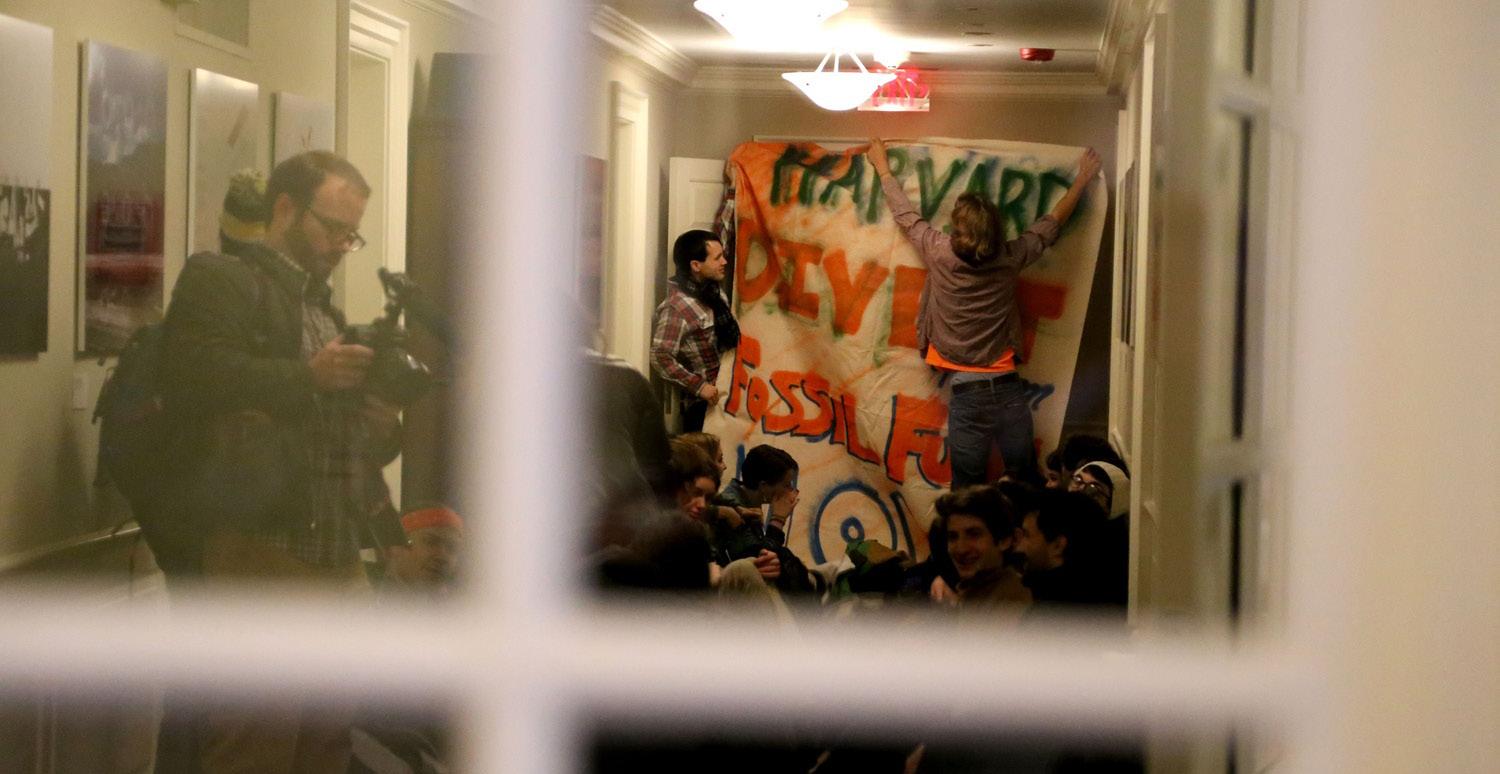



Even as Harvard administrators began to crack down, HOOP organizers maintained that they would remain unless Harvard negotiated with them over their demands — full disclosure of investments, divestment from any ties to Israel, and a commitment to drop disciplinary action against protesters — or they were forcefully removed.
Despite repeated public insistence that the University would not divest from Israel, on the evening of May 8, Garber privately met with a group of organizers for the first time. During the meeting, Garber told the protesters to end the encampment and avoid receiving involuntary leave of absence notices.
The protesters rejected his proposal — and two days later, University administrators placed 22 students on involuntary leave over their involvement in the encampment.
Barron said Garber handled the encampment in a “sneaky” and “clever” way.
In particular, Barron pointed to the difference between Garber and Gay. Garber, she said, “communicates less than Gay, which is definitely smart on his end.”
Despite the minimal communication and, according to protesters, unwillingness to engage, Garber “still launched an unprecedented wave of disciplinary action against students,” Barron added.
On May 14, after protesters again privately met with Garber, the encampment — which had remained entirely peaceful — came to a similarly peaceful end.
According to an email Garber sent to affiliates, the University had agreed to promptly reinstate students and offer protesters a meeting with a member of Harvard’s governing boards about divestment.
Sanders said the decision to end the encampment marked a “strategy shift” that came as the demonstration began to lose students and became “more isolated.”
The end of the encampment had come alongside the official conclusion of the spring semester as undergraduates wrapped up their finals and returned home for the summer. Even as dozens of tents remained erected in Harvard Yard, the encampment began to quiet and feel deserted.
Barron, who participated in the encampment, said that while the decision was made for “a number of strategic reasons,” it was “still frustrating.”
“It was an agreement that most of us were not excited about and that none of us see as a win, and certainly not a material step towards disclosure and divestment,” she said.
Even as the encampment drew to a close and involuntary leave notices were officially retracted, the demonstration’s fallout continued as Ad Board cases proceeded.
In his email announcing the end of the Yard encampment, Garber wrote he would “encourage” the Ad Board to “address cases expeditiously under existing precedent and practice.”
Harvard as an institution is under immense pressure to appear to have a close-to-zero tolerance policy for the speech of those who would defend Palestinian lives.
LaraZ. Jirmanus ’01 Harvard Medical School instructor
In a separate private email to HOOP organizers that morning, Garber added that this would include “taking into account where relevant the voluntary decision to leave the encampment.”
Three days later, several Ad Boarded students received news that they were put on probation, and in some cases, suspended for up to three semesters. For more than a dozen seniors, this meant they would not be able to graduate on time.
While Garber never explicitly promised leniency in either email, many took it as such — and the disciplinary consequences doled out seemed exponentially more severe than expected.
For some protesters, this reflected the way Garber has chosen to respond to protests on campus.
In an Instagram post, HOOP alleged that the University had broken its promise and taken an unprecedented strike at student protesters.
“Garber does things in a more veiled way,” Barron said. “There’s more of an implicit link between what he’s saying and what he’s trying to get at.”
Some student activists who have participated in other movements alleged that the University drew new red lines as pro-Palestine organizing took the main stage.
Rosie P. Couture ’26 — who participated in the 2023 protests against John L. Comaroff, a Harvard Anthropology and African and African American Studies professor under fire for sexual harassment allegations — was called before the Ad Board for
the first time this semester for her participation in the encampment.
According to Couture, tactics she used to protest Comaroff that did not result in disciplinary action are “things that people have now been Ad Boarded for this semester.”
“People were Ad Boarded for being in University Hall — we were in University Hall for hours,” she said. “People were Ad Boarded for disrupting a classroom — we had over 100 people walking out of a classroom.”
“We never were even told that disciplinary action was a possibility. It was never used as a threat against us to get us to stop pursuing a tactic or to leave a building,” Couture added.
Sanders, who also organized and participated in protests against Comaroff, said the pro-Palestine protests were met with “so much more institutional crackdown and disciplinary consequences.”
“I have organized a walkout of my Gov 20 class when I was a sophomore. I have occupied the building over the Comaroff stuff in the spring of my junior year,” he said. “None of those things were met with Ad Board consequences.”
Now, “if you’re leading a protest, you’re getting an Ad Board case,” Sanders said.
Sanders, who has been asked to withdraw from the College for three semesters, has now been called before the Ad Board three times — all in relation to pro-Palestine organizing. He said the disciplinary crackdown has intensified under Gay and Garber, who “flipped the rulebook on us.”
“Never have they threatened to disband
Not even just compared to other organizing — within pro-Palestine organizing itself, the institutional crackdown has been much more strong under Gay and Garber.
Rosie P. Couture ’26Student protester
the PSC for having a protest in the Yard. Never have they locked down the Yard at the hint of a protest or protest activity,” he said.
“Not even just compared to other organizing — within pro-Palestine organizing itself, the institutional crackdown has been much more strong under Gay and Garber,” he added.
During the 2023 protests — which called for Comaroff to resign from his post at the
University — former President Lawrence S. Bacow was at the helm of the University. Dean of the College Rakesh Khurana, who chairs the College Ad Board, has served in his post since 2014.
Barron said she believed the reinforced protest guidelines from this semester were created “before our eyes” specifically “ in response to pro-Palestine demonstrations and rhetoric.”
“Red lines — yes, they exist, but they didn’t even make me think twice because I really do see them as being created in a very unfair context,” she added.
Though not all pro-Palestine activists agree on how Garber’s approach has diverged from that of his predecessors in Mass. Hall, the consensus remains that there is a double standard for speech in support of Palestine.
Some, like Lara Z. Jirmanus ’01, an instructor at Harvard Medical School and a member of Faculty and Staff for Justice in Palestine, said the University’s approach to speech surrounding Palestine is the “main difference” between Garber’s administration and the ones that came before.
“Harvard as an institution is under immense pressure to appear to have a closeto-zero tolerance policy for the speech of those who would defend Palestinian lives,” she said.
Other protesters said the perceived crackdown was unrelated to Garber.
Couture said she deemed “the Palestine exception to free speech” as an exception “that all of our presidents would have made.”
“I think it’s not an issue of who’s in office, but an issue of what students are protesting,” she said.
Couture added the administration’s preemptive response to protesters “sets a very scary precedent on our campus for free speech.”
Despite Garber’s use of wide-scale disciplinary action on pro-Palestine encampment protesters, Lawrence said the past semester “exposed a lot of the incompetence of the administration.”
“It’s lit a flood of fire under students’ feet,” he said. “People don’t feel as afraid of these kinds of executives at Harvard anymore.”
“This is a historic moment,” Lawrence added.
“Harvard is in a state of crisis in many ways, and I think it shows the necessity of student organizing moving forward,” he added.
joyce.kim@thecrimson.com jo.lemann@thecrimson.com


NON LADDER. In another year of significant labor activity at Harvard — one of the most union-dense universities in the country — this year saw the historic organization of non-tenure-track faculty. And in their first negotiations with the University, they want better employment conditions, free from time-constrained contracts and with higher wages and better benefits.
 By CAM E. KETTLES AND ARAN SONNAD-JOSHI CRIMSON STAFF WRITERS
By CAM E. KETTLES AND ARAN SONNAD-JOSHI CRIMSON STAFF WRITERS
Before April 2018, not a single student worker at Harvard belonged to a union.
The very idea of a student worker was under legal scrutiny, and early academic unions were locked in court battles in addition to contentious union elections.
Now, almost 9,000 student workers, from undergraduate course assistants to postdoctoral fellows, are represented by one of three affiliated unions of the United Auto Workers.
The story of a dramatic expansion in higher education labor organizing has been told at colleges and universities across the country, but Harvard is among the most union-dense. With the Harvard Graduate Students
Union-UAW as a model for organizing, two unions — representing non-tenure-track faculty and student workers in non-academic positions — won union elections in the last nine months, while another struggled to unionize.
Harvard Academic Workers-UAW was the campus labor scene’s roaring success, organizing 3,300 non-tenure-track workers at Harvard — a group uniquely important to University research and teaching programs.
In early April, HAW-UAW held two concurrent union elections for their unit, split into one unit for non-tenure-track faculty in Faculty of Arts and Sciences, Harvard Medical School, and Harvard Divinity School and a smaller unit for less than 100 clinical workers at Harvard Law School.
Though the unit is roughly half the original scope after narrowing down from academic workers at every school, the elec-

tions dramatically increased the number of unionized student-workers at Harvard combined with roughly 400 newly-unionized student workers in non-academic jobs.
With elections behind it, HAW-UAW now faces the greater challenge of delivering improved employment terms in its first contract. While there is no set timeline in place yet, the union may attempt to begin negotiations within one year of the April election once it determines bargaining priorities through a survey.
HGSU-UAW becomes the first group on campus to unionize teaching staff.
Erik Baker, a History of Science department lecturer and organizer with the Harvard Academic Workers-UAW, said his former involvement with HGSU-UAW inspired him to join the early organizing efforts for a non-tenure track union when he joined Harvard’s faculty in 2022.
“I noticed that there was a real sense of energy,” Baker said. “It was kind of like we’re starting to put this turbulent period behind us, we’ve been at this for a long time.”
“Now is the time to really make a push
and finally witness this union,” he added.
For many at Harvard working without the prospect of tenure, the new union offers the hope of a safety net.
Roughly 6,000 Harvard employees fall under the umbrella term “non-tenuretrack” — academics hired on short-term contracts, most of which are nonrenewable and time-capped. Workers say this system
HAW-UAW officially launches its unionization campaign. The group initially intends to unionize all 6,000 non-tenure-track faculty at Harvard.
HAW-UAW files for official union recognition with the NLRB, petitioning to represent over 3000 workers.
Mar. 11, 2024
Harvard and HAW-UAW reach an agreement to hold elections before the NLRB hears the case.
puts them in a precarious position in an already-unstable academic job market.
Academics on the tenure track have the possibility of acquiring tenure, which awards professors nearly unlimited job security. For non-tenure-track faculty — who move in and out of the Harvard system within a matter of years — no such protections exist.
In The Crimson’s 2023 FAS survey, more than 71 percent of non-ladder faculty respondents said their school did not provide
Both units of HAW-UAW vote overwhelmingly in favor of unionization. After unionizing, HAWUAW must look to beginning negotiations with the University over its first contract.
them enough support in their roles. Respondents also expressed concerns about being shut out of decisions made in their department.
Many non-tenure-track workers are also not provided with childcare benefits on par with tenure-track workers.
But beyond department culture and personal benefits, many non-tenure-track faculty are concerned about a more basic number: compensation.
Across unionized workers on campus, pay and whether raises keep pace with the steadily rising cost of living in Cambridge has become a uniting issue. While Harvard raised the minimum postdoc salary to $65,000 in 2023, some say it’s not enough.
Kelsey Tyssowski, a postdoctoral fellow in the Hoekstra Lab and an HAW organizer, said while she was glad to see the pay increase, researchers had spent years repeatedly informing administrators of the pay disparities between Harvard and peer institutions before administrators finally took action.
“We were for a long time just asking, ‘Can you make a plan to raise the salary scale to the NIH minimum?’” Tyssowski said. “Even that was hard.”
“For all we know, if we don’t put any more pressure on them, they could keep it

at 65 for the next 10 years,” she added.
University spokesperson Jason A. Newton declined to comment on the criticisms.
In 2022, the median income was $58,550 in Cambridge and $45,132 in Boston. According to MIT’s living wage calculator, the average living wage for one adult living in Boston or Cambridge with no children is $62,483.
The sentiment is not unique to postdocs.
In the 2023 FAS survey, 68 percent of nontenure-track faculty who responded said their salary was too low compared to approximately 35 percent of ladder faculty, who are classified by the National Labor Relations Board as managers and ineligible for unions.
But it is the time cap structure of nontenure-track positions that make them unique both from other groups of workers at Harvard and from academics at most peer institutions.
HAW-UAW has emphasized its ability to force Harvard to remove time caps — likely a key bargaining issue ahead of their first contract. While Princeton University, Yale University, and the University of Pennsylvania also have official caps, most universities have unofficial caps where administrators chose not to renew renewable contracts.
In 2009, an FAS committee briefly con-

sidered a career ladder for non-tenuretrack faculty that would have eliminated the eight-year limit on teaching appointments, though the proposition was ultimately not recommended on the grounds that it was “not in the best interests of our students and the faculty as whole.”
The committee wrote in its report that “many of the teaching functions held by non-ladder faculty are highly demanding and require regeneration that brings in fresh ideas, new talent, and the most recent pedagogical techniques.”
“If the promotion rate is high, the ranks of non-ladder instructors would become top heavy and the flow of new talent would become a trickle, but if the promotion rate is low the promotion decisions could become divisive and ultimately harm the system,” they added.
Lecturer and Expository Writing preceptor J. Gregory Given said the committee’s explanation revealed a lack of concern about the workers themselves.
“What I hear from that is these jobs are hard and they burn out instructors,” Given said. “So the best way to keep them fresh is to flush out the burned out people and get people in with their young, early career energy that you can continue to expend.”
The committee also suggested in the re -

93% BY THE NUMBERS
About 93% across both units of HAW-UAW vote in favor of unionization.
3,300
HAW-UAW represents about 3,300 non-tenure track workers from the Faculty of Arts and Sciences, Harvard Medical School, Harvard Divinity School as well as the Harvard Law School clinics.
6,000
There are approximately 6,000 non-tenure-track employees at Harvard. Initially, HAW-UAW’s campaign intended to unionize all of the employees. HAWUAW organizers have expressed interest in expanding the union’s reach in the future.
71
In The Crimson’s 2023 survey of the Faculty of Arts and Sciences, 71% of non-ladder faculty said they did not believe non-ladder workers received enough support from FAS
68
In the 2023 FAS survey, 68% of non-ladder workers felt their salary was too low, compared to just 35% of ladder workers.
AT SEVERAL schools at Harvard, non-tenure-track workers are required to leave the University after a set number of years. In the Faculty of Arts and Sciences, for example, lecturers and preceptors, except for senior preceptors, are limited to three and eight years respectively. Currently, there is no career track for these workers at the end of their contract although a Faculty of Arts and Sciences committee discussed a proposal in 2009.
port that the proposal might allow faculty members to inordinately delegate undergraduate teaching to non-tenure-track instructors.
They wrote that “having a robust shadow system of senior non-ladder instructors raises the specter of ladder faculty inappropriately delegating their undergraduate teaching duties.”
But to Given, that logic does not justify the University’s current treatment of nontenure-track teachers.
“If it’s inappropriate for the ladder faculty to delegate their teaching duties,” Given said, “the way to solve that problem is for the ladder faculty to teach more undergraduates — not to fire the undergraduate teachers.”
Unlike its sibling unions on campus, HAWUAW took a different approach to its unionizing.
While there had been talk of unionizing different groups of non-tenure-track faculty since Fall 2018, the effort took on new energy after 2021 when lecturers, preceptors, research associates and postdocs joined together to organize.
In the year after the group launched its campaign to unionize — before it filed for an official recognition election — the HAWUAW maintained a minimal public presence rather than march through the streets with signs and chants.
Instead, organizers chose to pursue a more personalized approach, launching a massive campaign to meet academic workers from every included workplace and sway each of them in support.
As the year dragged on, the group’s win-
dow of opportunity continued to close. Union authorization cards — which allows workers to show their support for the union campaign and indicate whether they would vote for it in an election — only remain valid for one calendar year, and the group was under pressure to officially move forward with filing for election.
Despite the new approach, Koby D. Ljunggren, a UAW staff organizer and member of HAW-UAW, said that that process was as simple as “talking to people.”
“You want to make sure you’ve talked to enough people that you feel confident going into an election saying, ‘yeah, we’re obviously going to win it,’” they said.
When the election finally took place in April, almost 40 percent of the eligible voters from both units showed up to the polls, voting 93 percent in favor.
But even after one year of conversations and outreach, when the election took place, not every school with non-tenure track faculty was included.
Despite intending to unionize all 6,000
gaining unit voted to reject a union effort by the Harvard Union of Residential Advisors.
HURA shared a lot of similarities to HAW-UAW. It too received organizational support from the UAW and organized a relatively private campaign through word of mouth.
But HURA got off on the wrong foot with the proctors, tutors, and house-aides it was attempting to represent — and with just 345 people, every vote counted.
Members expressed frustration over a perceived lack of communication from organizers both before and after the public launch, with some saying that they did not trust organizers and the union to represent them.
On a poster distributed before elections, some proctors wrote the unionization effort “made us feel excluded” and would exclude people from joining residential advisor jobs.
“We do not trust HURA,” they wrote.
Ljunggren — formerly a volunteer staff organizer for HURA and former president
A lot of it was real bad misinformation that was being intentionally peddled by the University to try to act like there was this real legal barrier.
Koby D. Ljunggren
UAW staff organizer and member of HAW-UAW
non-tenure track faculty at the University, just over 3,000 workers were included in the eventual unit — academic workers at the Harvard Kennedy School, Harvard Business School, and non-clinical instructors at Harvard Law School were not initially included.
According to Baker, the gap between the goal and final number was because organizers “decided to start with the turfs where we had the strongest organizing presence.”
HAW is still keeping the door open to the possibility of expanding their unit to eventually include all non-tenure-track workers.
Though the organizing initially fell short, Baker said, “HAW believes as a matter of principle that all workers deserve a union.”
“We certainly are in touch with people from schools across the university who are interested in joining HAW,” he added.
Just as HAW-UAW was celebrating major election victories, a second prospective bar-
any sort will not be tolerated.”
According to Ljunggren, HAW’s size and structure protected it from a similar effort from the University.
“With a lot of these smaller units, you can actually have this misinformation campaign run much more aggressively because those workplaces are much more intimate,” Ljunggren said. “You trust your boss and if your boss says something, well, must be true.”
In the past few years, union density has steadily increased on campus.
Heading into the next academic year, the University’s Office of Employee and Labor Relations will need to bargain with five different unions to settle disagreements over wages, benefits, and other working conditions.
HGSU-UAW — which has already gone on strike twice since it was officially recognized in 2018 — will likely begin bargaining for their third contract in January 2025, which may happen on a similar timeline to HAW-UAW. HUWU-UAW organizers are already in the process of bargaining and expect to ratify their first contract in the fall.
In addition to the three academic unions, the Harvard University Police Association and the Service Employees International Union, which represents Harvard’s custodians, will see their contracts expire in 2025.
of HGSU-UAW — pinned much of the opposition to HURA as a result of communications from Harvard administrators.
“A lot of it was real bad misinformation that was being intentionally peddled by the University to try to act like there was this real legal barrier,” Ljunggren said.
Prior to the election, HURA organizers alleged that administrators had used union-busting tactics including a “captive audience meeting” where House Deans discussed unionization with tutors and houseaides.
Newton, the Harvard spokesperson, wrote in a statement that “Harvard is committed to the democratic process, respects the individuals’ right to choose whether or not to be represented by a union, and strongly believes that voters should make the choice that is right for them.”
“To that end, Harvard has sought to address voters’ legitimate questions and concerns,” he added. “Throughout this process, Harvard has made clear that retaliation of
While the three academic unions — HAW, HGSU, and HUWU — are technically distinct, the possibility of simultaneous bargaining presents the opportunity for joint action across groups.
According to Ljunggren, the unions could coordinate the timing of strikes to maximize leverage.
“It’s building that pipeline so we can then work together, through contracts, through labor organizing, through whatever means that’s available to us to really achieve a Harvard by Harvard workers, for Harvard workers,” they said.
As collective labor efforts increasingly sweep Harvard and the nation, organizers hope the unions will increasingly work together toward common goals.
“One of our shared visions and goals is to recapture the University from a lot of focus on the administration,” Ljunggren said. “Who does the administration really serve?”
“It serves the people who make the University run,” they added.
cam.kettles@thecrimson.com
aran.sonnad-joshi@thecrimson.com
FINANCE. In the last decade, the Harvard Management Company has seen slow but consistent improvements in the management of the University’s endowment. But some prominent Harvard affiliates have criticized the endowment for underperforming.
 By SIDNEY K. LEE AND THOMAS J. METE CRIMSON STAFF WRITERS
By SIDNEY K. LEE AND THOMAS J. METE CRIMSON STAFF WRITERS
Harvard boasts the largest endowment in the world sitting at $50.7 billion in 2023 — larger than the economies of 120 countries. Yet the past decade has seen lackluster investment performance in comparison to its peers, sparking concerns over management transparency
and the University’s ability to fund operations.
Harvard has remained the wealthiest institution in higher education after it benefited from tremendous returns from the 1990s to the mid-2000s, when the endowment grew by over $21 billion in 15 years. During that period, the University managed to outpace a traditional 60/40 investment portfolio of U.S. stocks and bonds by 6 percent a year and beat top Wall Street hedge funds.
But in the aftermath of the 2007-2008 financial crisis, Harvard’s fortunes changed. For the last 15 years, the University’s endowment has struggled to keep pace with the investment returns of Ivy-Plus peers — a group of universities that include the eight Ivy League schools, Stanford University, Duke, the University of Chicago, and MIT.
As Harvard has become a university that is dependent on income from its endowment, the poor returns were cause for con-
cern for University leadership. Since 2005, Harvard has cycled through four chief executive officers of the Harvard Management Company, before recruiting N.P. “Narv” Narvekar in December 2016 to overhaul the management of the University’s endowment.
Over the last eight years, Narvekar’s tenure has been defined by slow but consistent improvements in the management of Harvard’s endowment, which now contributes
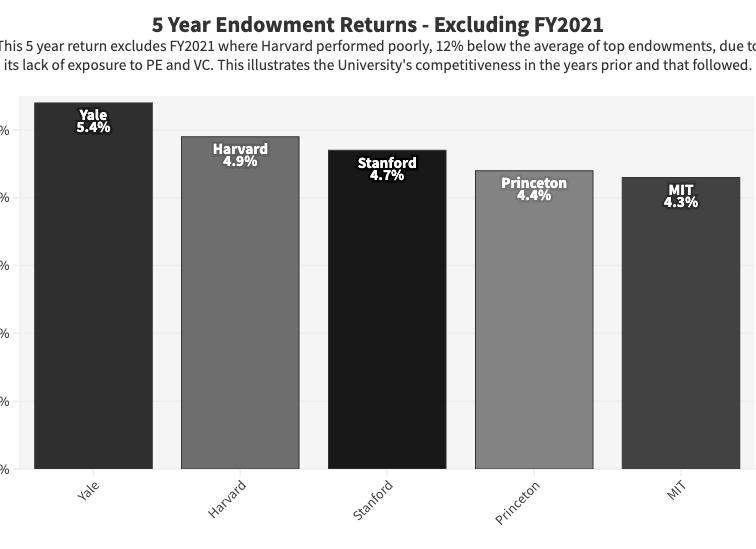

more than one-third of the University’s $5.9 billion annual operating budget.
Still, some prominent Harvard affiliates, including former University President Lawerence H. Summers, said the HMC’s underperformance over the past 20 years has had a profound impact on the University’s ability to perform its academic mission.
“If Harvard’s endowment management had been as successful as the average Ivy League school, or as successful as the average of the large endowment schools — Stanford, Princeton, Yale, MIT — Harvard would today have an endowment in the range of $20 billion more,” Summers said.
Through fiscal year 2023, the average 10year return rate for an Ivy League university was 9.9 percent. Harvard tails that with an 8.6 percent return rate.
Summers said the $20 billion growth that Harvard lost out on as its endowment underperformed its closest peers has prevented the University from growing its academic offerings and improving its experience for students.
“To put that in perspective, $1 billion would be 100 professorships,” Summers said. “It would be full financial aid permanently for more than 100 students. It would be enough to renovate half the Harvard houses or a vast range of other initiatives.”
HMC spokesperson Patrick S. McKiernan declined to comment on Summers’ crit-
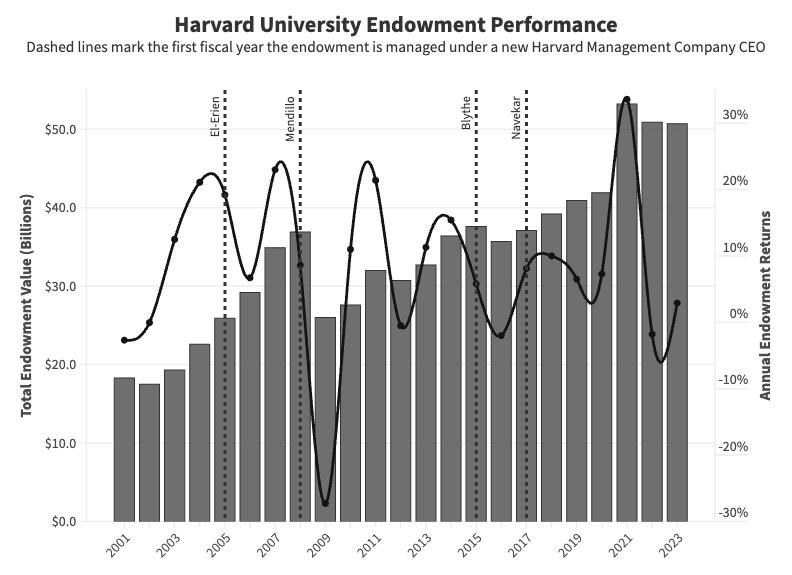

icisms of the endowment’s performance.
The poor returns have placed the University at the bottom of the Ivy League — only ahead of Columbia University’s endowment, which was managed by Narvekar from 2002 to 2016. (Columbia’s endowment performed better than Harvard’s for most of Narvekar’s tenure in New York.)
When comparing Harvard’s annual endowment returns over the past 20 years to its top peer institutions, the University has experienced the worst performance by a wide margin.
The above figure illustrates the return on investment year over year if you invested $1 in the endowments of Harvard, Yale, Princeton, Stanford, and MIT in 2004.
At the end of this most recent fiscal year,
Yale and Princeton Universities proved to be the best stewards of the $1 investment, seeing it grow to north of $7. Meanwhile, Harvard’s returns would generate the lowest matriculated value of a $1 investment, at $4.90 — 55.9 percent less than Yale.
In October 2023, the University announced that its endowment declined in value for the second year in a row in fiscal year 2023, following a $2.3 billion decline during fiscal year 2022. This was the first time in two decades the school experienced two consecutive years of endowment decline.
A post-pandemic recovery that rallied markets in 2021 led to historic endowment returns among Harvard and its peers. While the University posted a 33.6 percent return,
it still managed to pale in comparison to the average return rate of 45.6 percent posted by Yale, Princeton, Stanford, and MIT.
Maya Sen ’00, a professor of public policy at the Harvard Kennedy School, questioned why the University does not seek to increase transparency in its investments.
“Given that the rate of return is so low,” she said. “I don’t understand why we are moving with these hedge funds that are so untransparent.”
Returns from 2021 — the driving force behind the current 10 year figure — are almost entirely reflective of an endowment’s allocation to venture capital from 20102014. As a result of Harvard’s lower risk tolerance compared to its peers, the University had a lack of exposure to higher risk asset classes such as private equity and venture capital, thus delivering subpar returns in 2021.
But excluding 2021, Harvard’s endowment performance averaged over 20182023 was marginally better than Princeton, Stanford, and MIT — second only to Yale.
The unique profile of Harvard’s endowment — particularly its scale, lower risk appetite, and lower private equity exposure — contribute to the unique challenges it faces.
The sheer size of Harvard’s endowment makes it hard for a one-off good investment to significantly contribute to the overall performance of the endowment.
Harvard Treasurer Timothy R. Barakett ’87, who also serves on the HMC Board of Directors, said that Harvard doesn’t have some of the flexibility that smaller endowments enjoy.
“It’s much easier to make significant portfolio shifts when you have a small endowment,” he said.
“The scale of Harvard’s endowment makes it harder to move around,” Barakett added. “Narv, in these six years, has done that, but it takes time.”
Some have compared Harvard’s endow-
Jack R. Meyer. Over 14 years Meyer grew the endowment from a $4.7 billion fund into a $22.6 billion behemoth. He departed HMC to form his own private investment firm, Convexity Capital Management.
ment to the exceptional performance of endowments such as Bowdoin College and the University of Texas in recent years.
“Bowdoin — with $2 billion — if they invested in Google, they look like heroes. At Harvard, any one investment’s not going to move the needle very much anymore,” said Charles A. Skorina, the founder of a finance executive search fund.
“The bigger you get, the harder it is to look good,” Skorina said.
Different endowments also come with different risk profiles. In the investment world, with higher risk comes higher reward. The inverse is also true: Harvard has the second lowest risk tolerance of the Ivy League endowments, which helps explain some of its lackluster returns.
Given the University’s dependence on the endowment for its operations, the level of risk Harvard takes on is significantly lower given its reliance on regular endowment disbursements.
“Harvard is very endowment dependent. The different schools have different dependency on the endowment, which is why we take less risk than many other endowments by design,” Barakett said.
“Harvard needs to do that because we have a university to run,” Barakett added.
It was only in 2021 that Harvard’s board voted to increase its risk appetite from 15 percent to 17.5 percent. With this change came more investments in private equity and venture capital — riskier investments by nature.
Private equity and venture capital can take upwards of 7-10 years to see returns on investments. Any changes in the portfolio’s private equity allocations that Narvekar undertook when he first came into office in 2017 will not pay off until the years to come.
Harvard CFO Ritu Kalra said “what Narv and his team have done is position Harvard well for the future, making decisions over these last several years — and currently — that set us up for the next decade plus.”
Mohamed A. El-Erian. El-Erian saw the endowment grow by $12.3 billion during his one and a half year tenure. After stepping down, he returned to his previous role as co-chief executive officer and co-chief investment officer at Pacific Investment Management Company.
When Narvekar joined the HMC in December 2016, he was the fifth CEO in 11 years to lead the University’s endowment.
The period of leadership turbulence did not bode well for the state of the endowment. After a decade of poor returns, Narvekar inherited a portfolio that had been through a number of different hands in a short period.
“His marching orders the first few years were to simplify and clean up the portfolio,” Skorina said. “Harvard didn’t even know what they had when Narv came in. They had investments in all sorts of stuff.”
Under Narvekar’s first few years of leadership, there were major write-offs in excess of $1.5 billion in natural resources, a shut down of the internal hedge fund, and a transition to an externally managed model. Many managers that were laid off spun off into outside firms, such as Bain Capital’s Real Estate division.
With this came a restructuring of the endowment’s management team. In a dramatic overhaul, HMC saw its staff drop from 240 to 110 employees.
Where before the endowment had been managed by independent teams responsible for specific asset classes such as real estate and natural resources, Narvekar’s transition brought the team to a generalist model. Investment management became centralized, with each manager incentivized to care for the overall returns of the entire endowment.
Every other Ivy League had operated under this generalist model, making Harvard an outlier before Narvekar’s tenure.
Former Harvard Treasurer Paul J. Finnegan ’75 said that “it was obvious to the board and Narv that the strategy HMC had been pursuing needed to change.”
“We and Narv came to the conclusion, really looking at performance, that we should move towards an externally managed model,” added Finnegan.
Narvekar’s restructuring was not com-
Jane L. Mendillo. Mendillo took the reins in the summer of 2008 leading HMC through the financial crisis. Operating in recovery mode following the drastic losses in FY2010, she managed to grow the endowment steadily during her roughly six years at the helm.
plete until years later, when illiquid assets such as timber and gas were sold off.
“Harvard was shopping their timber investments for like three years,” Skorina said. “Nobody wanted to buy it.”
For over two decades, endowment reports provided a glimpse for the Harvard community into how the University invests its $50.7 billion endowment — which is crucial to running day to day operations, funding financial aid, and continuing cutting edge research.
The annual message from the HMC CEO was a way to alleviate concerns from faculty and alumni following years of poor returns in which Harvard’s endowment lagged its peers — or to underscore the most recent successes that boosted endowment performance.
In 2017 when Narvekar was named the next CEO of HMC, the endowment’s performance and investment management started to become increasingly opaque. In his first year at the helm, the HMC report, which previously contained pages of graphs and data points, reported the most recent returns in noticeably less detail.
Narvekar — who declines to speak with the press — halted the disclosure of investment performance by asset class and ended the release of internal benchmarks for returns, making it difficult to assess the appetite for risk and expected performance the University holds.
Then in 2018, the annual message from HMC’s CEO was slashed in half, making the once 3,000 word report just 1,074 words in length.
With reports being drastically reduced by Narvekar, compared to his three predecessors, he issued the shortest statement HMC has released in over twenty years following the endowment reporting a negative return for the first time during his tenure.
The significant revisions have left do-
Stephen Blyth. 18 months into his tenure Blyth stepped down following a medical leave and returned to his role as a statistics professor at Harvard. The endowment stood at $37.6 billion after lagging returns.
N.P. “Narv” Narvekar. Narvekar, the former Columbia endowment executive, joined HMC in 2017 with the goal to move the endowment to an external management model and increase its risk profile. Under his leadership HMC has had a 9.2 percent annualized return.
nors and alumni without the necessary data to interpret the current performance and investment strategies, with the HMC communications now mainly containing summary figures such as asset distribution and the overall annual return.
Members of the Faculty of Arts and Sciences — the school that receives the most funding from the endowment — have grown increasingly skeptical of the lack of transparency and disclosure of the endowment’s investments.
During a FAS town hall in early May with members of the Harvard Corpora-
tion — the University’s highest governing body — and interim University President Alan M. Garber ’76 faculty members asked a series of questions over the endowment’s management, yet they were repeatedly dodged.
The faculty pressed Garber about the secrecy surrounding Harvard’s investments, and why contracts with firms do not allow for the disclosure of exact investments holdings, referencing the 70 percent of the endowment managed by outside hedge funds and private equity firms.
Garber said all investments with hedge
funds and private equity firms are inherently scarce in the information provided, adding that Harvard’s dealings are no exception.
“We use outside managers and there are contractual limits on disclosure of what is inside those portfolios,” Garber said according to an attendee’s notes during the town hall.
“We choose to have these managers because they expect to have high returns,” he added.
Sen — the Kennedy School professor — said recent pro-Palestine protests calling
for divestment have highlighted a deeper issue in how Harvard manages its investments which “does not seem politically sustainable.”
“The University is in some sense tying its own hands perfectly because by investing in funds that are not transparent, you can always go back to students and say, ‘we don’t know where the money is because that’s our arrangement with these funds,’” Sen said.
sidney.lee@thecrimson.com
thomas.mete@thecrimson.com
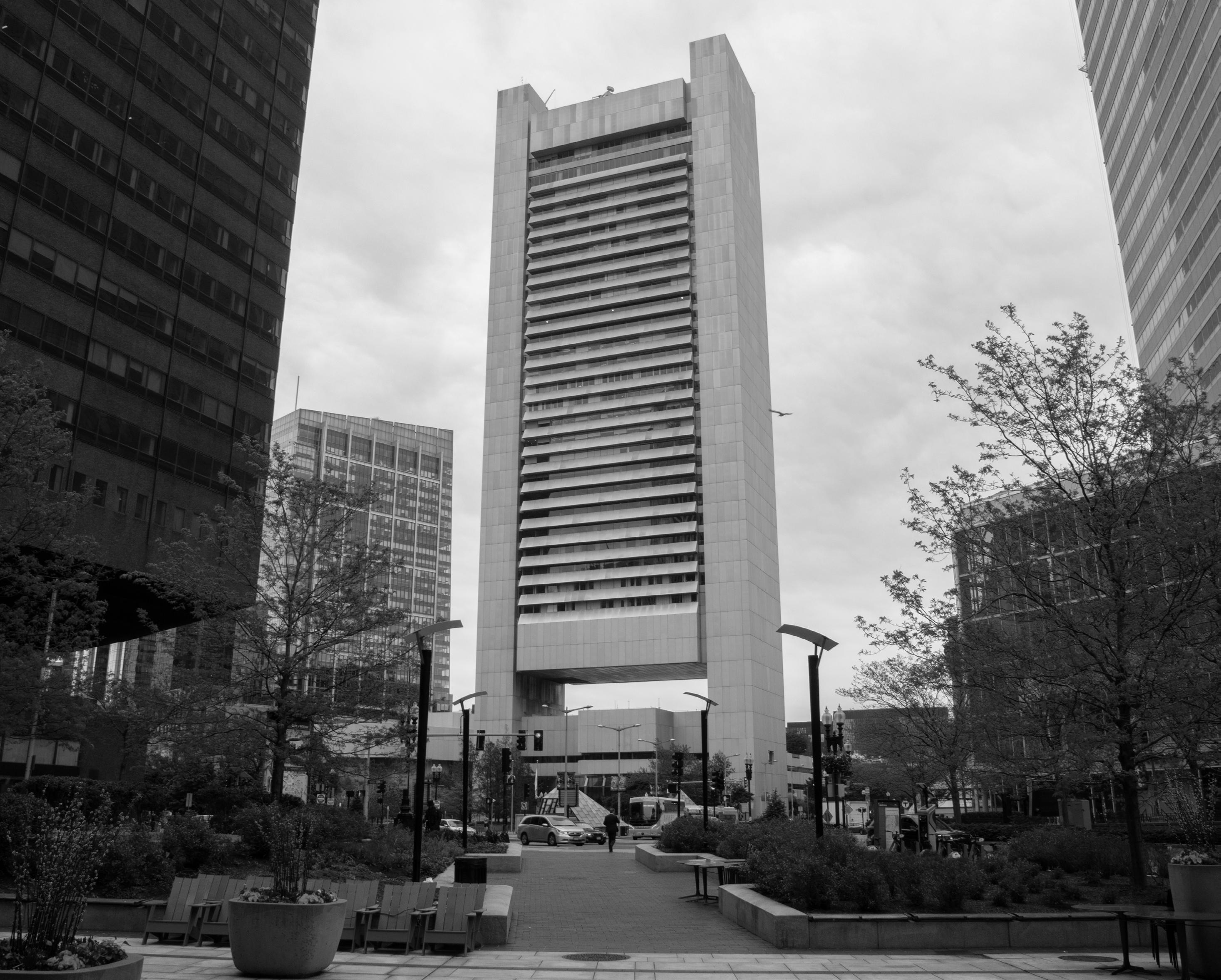












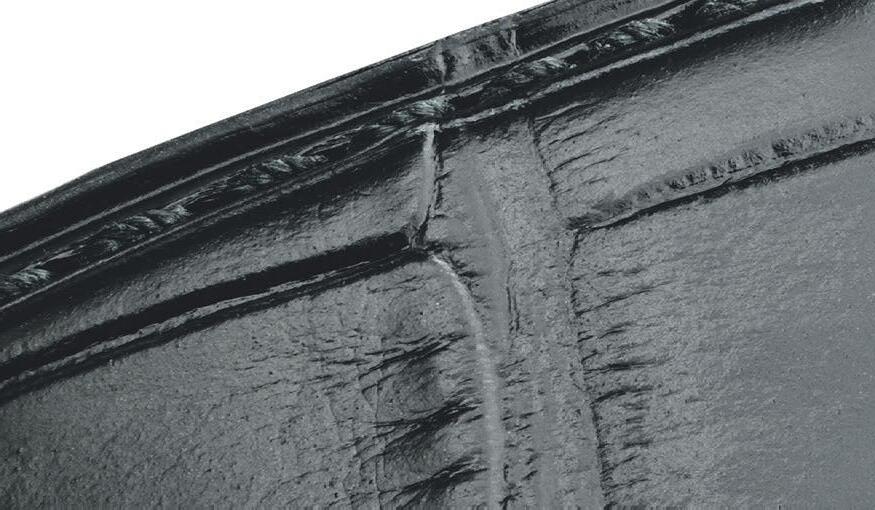




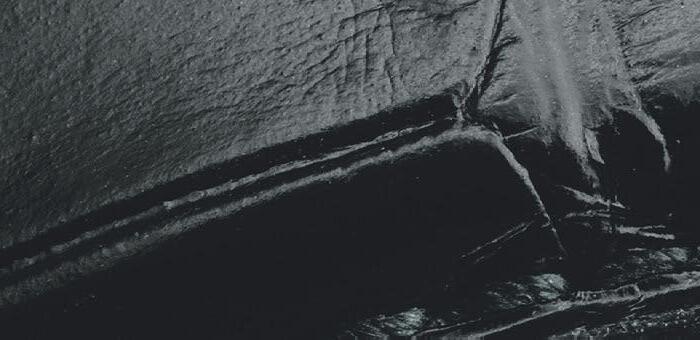

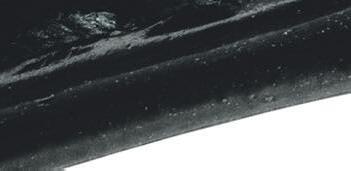






Portugieser Automatic 42, Ref. IW501705
Conceived 85 years ago as an instrument watch with marine chronometer precision, the Portugieser has evolved into a timeless yet dynamic paragon of understated elegance. A slimmer case now makes the Portugieser Automatic 42 even more refined, while doublebox glass sapphire crystals showcase the IWC-manufactured 52011 caliber with a power reserve of 7 days and the elaborately crafted dial in a new color called Dune. IWC. ENGINEERING BEYOND TIME.




